
















Title: Playtime Is Over
Year: 2025
Artist: Anne de Vries
Actors: Timon Grau, Julien-Jakob Kneer, Anna Uddenberg, Otto Uddenberg de Vries,
Description: 22-minute video installation with sound
Resolution: 3840 × 2160 pixels (4K)
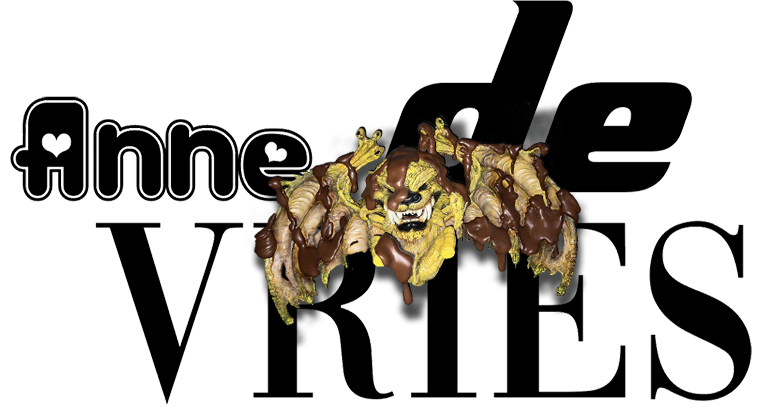

















Title: Playtime Is Over
Year: 2025
Artist: Anne de Vries
Actors: Timon Grau, Julien-Jakob Kneer, Anna Uddenberg, Otto Uddenberg de Vries,
Description: 22-minute video installation with sound
Resolution: 3840 × 2160 pixels (4K)


Titles:
Vapula’s Obsession 62% (left)
Vapula’s Obsession 78% (right)
Year: 2025
Artist: Anne de Vries
Dimensions: 89 cm × 55 cm × 35 cm
Materials: Brass pulver, epoxy, patina, resin core, acrylic paint. (also available in full bronze)
Description: Wall sculptures

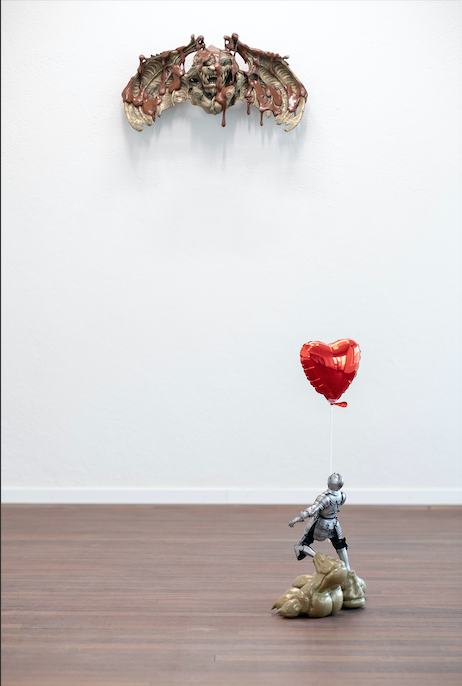

Title: Little Heralds Amendments
Artist: Anne de Vries
Year: 2025
Materials: Brass pulver, Patina, Resin core, Customized 1/6 knight with aluminum armor, heart balloon.
Dimensions: 35 x 45 x 30 cm
About: This art installation consists of a unique set of components that can be collected, installed, and played with.
Where: Blue Velvet, Zürich
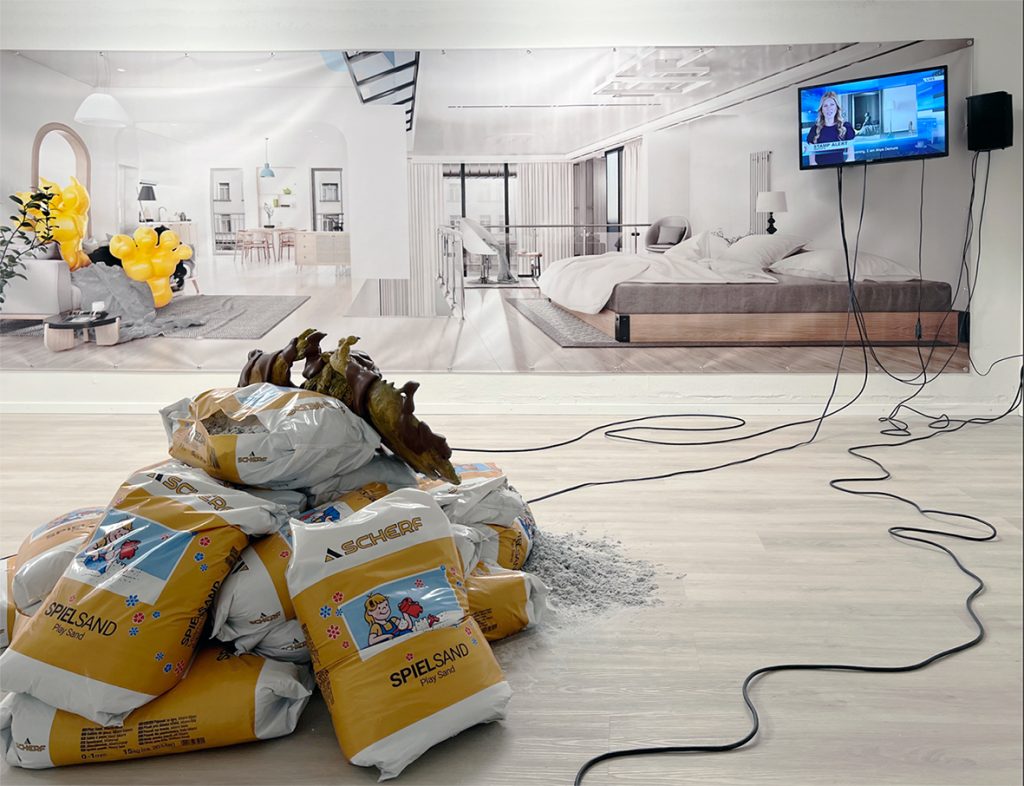
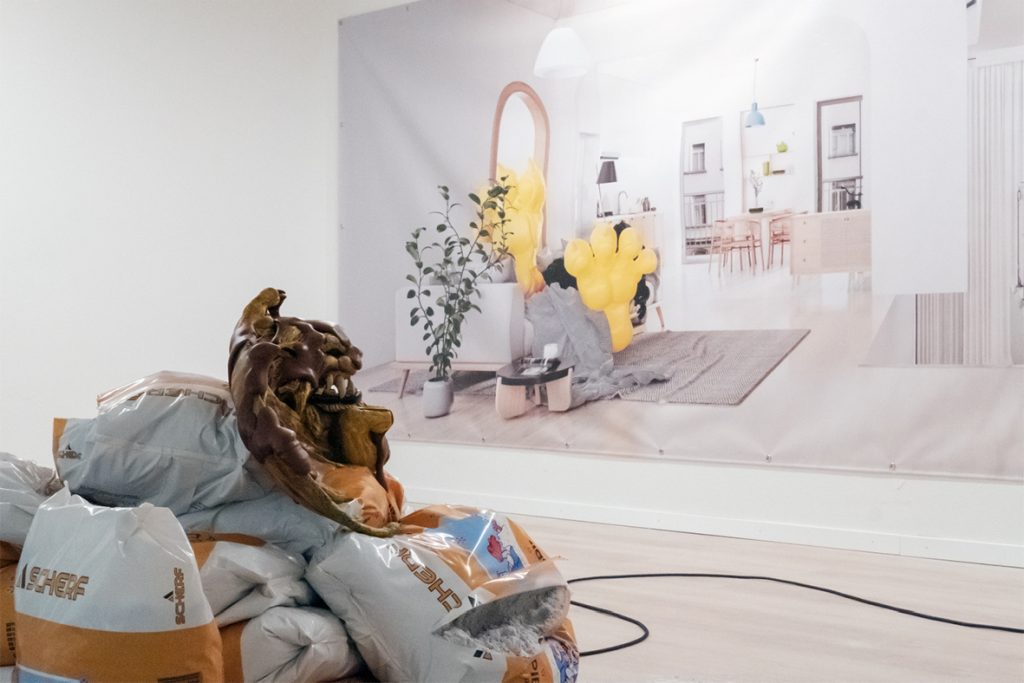
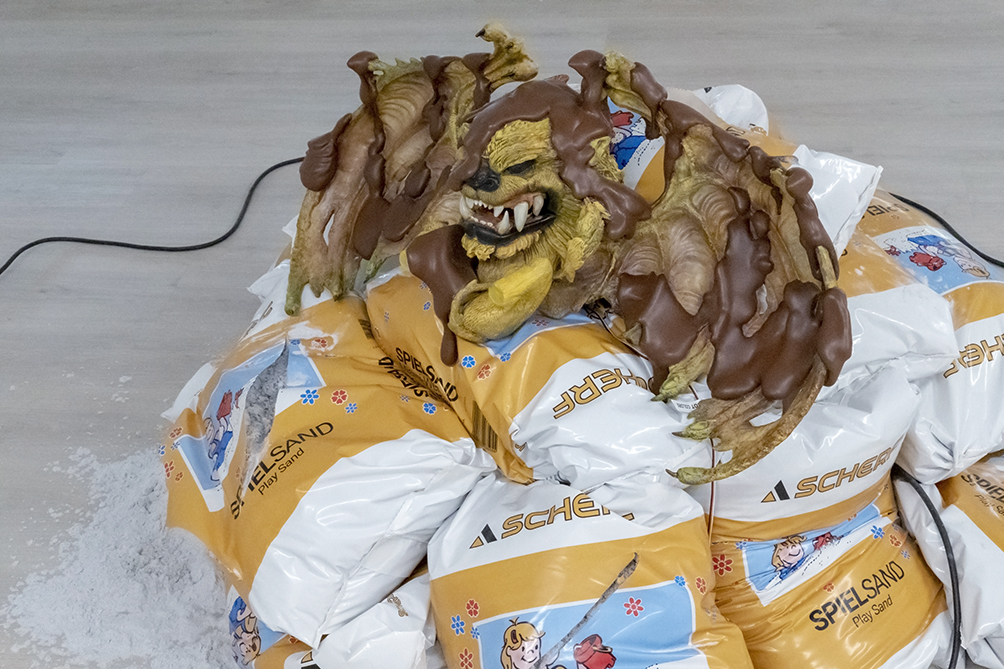

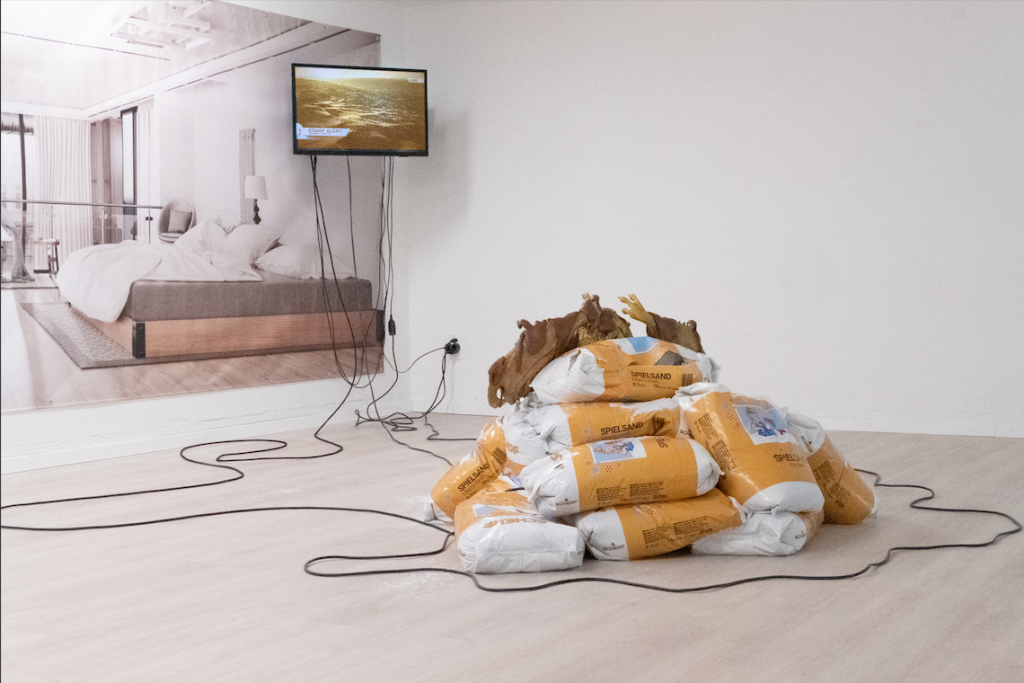
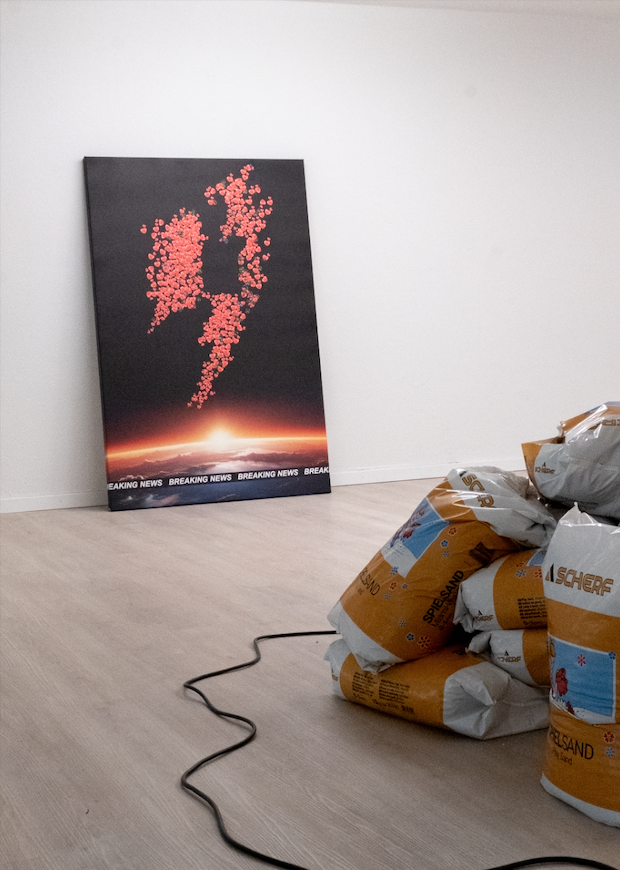

Title: STAMP ALERT – Connecting The Dots
Year: 2025
Artist: Anne de Vries
Description:
An immersive installation exploring themes of media and constructed realities through a combination of animatronics, video, and large-scale printed visuals.
Installation Components:
Produced in collaboration with: ODYSSEY, Köln, and Blue Velvet, Zürich

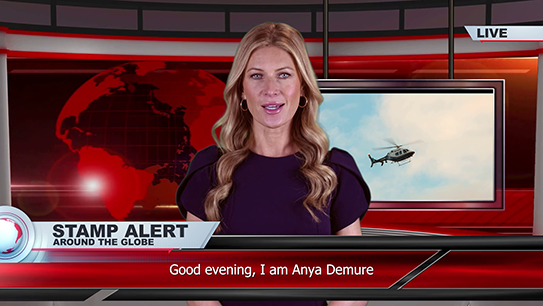
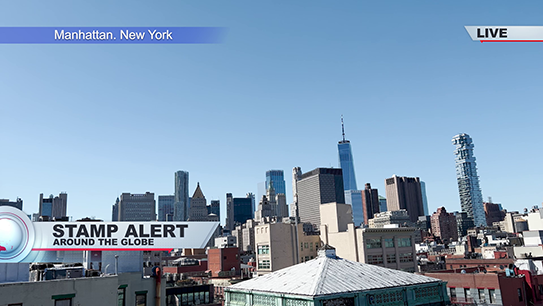
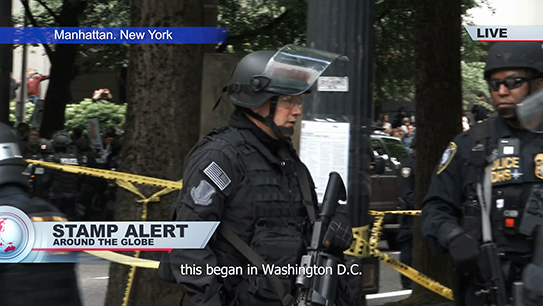
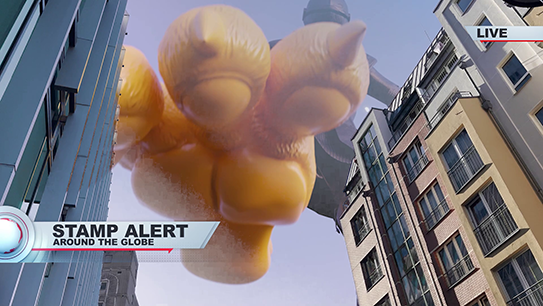

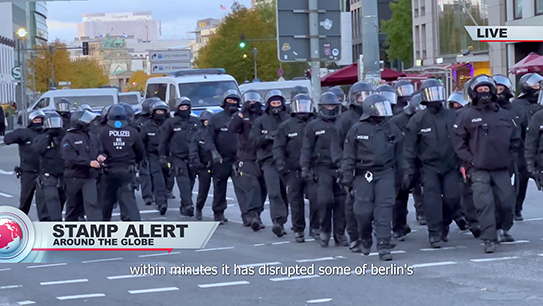
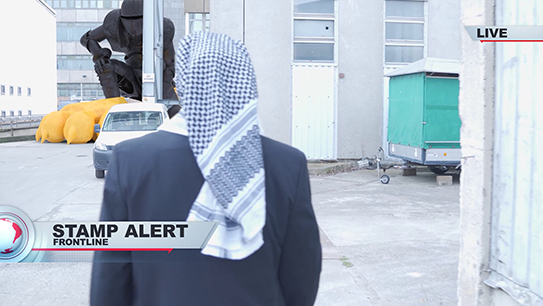
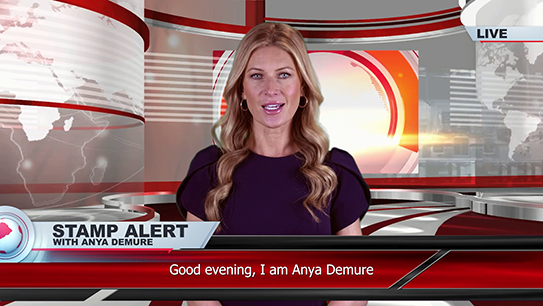
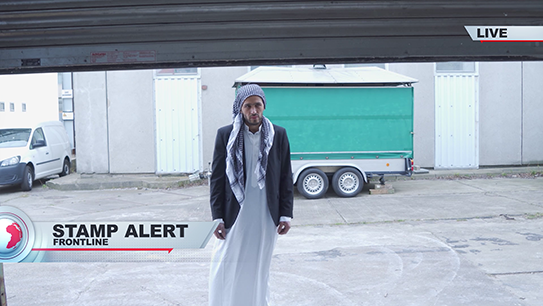

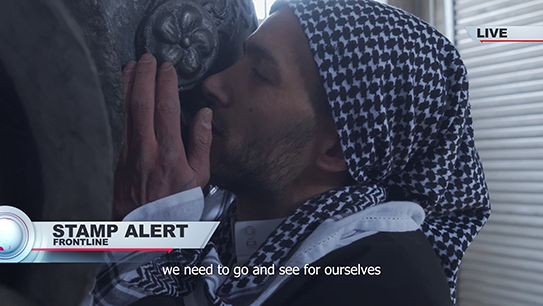

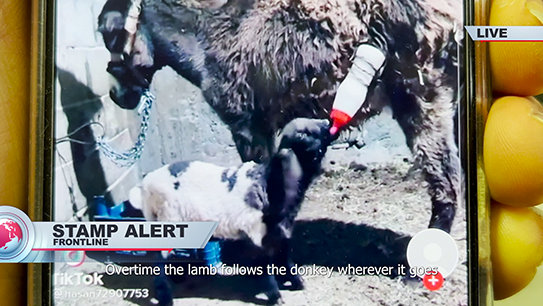
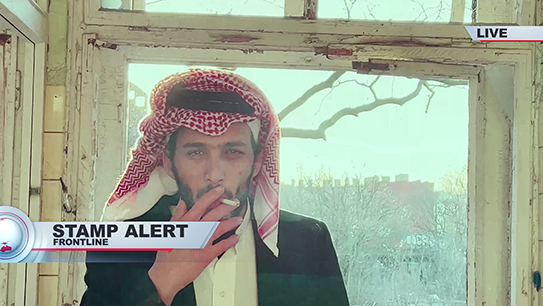
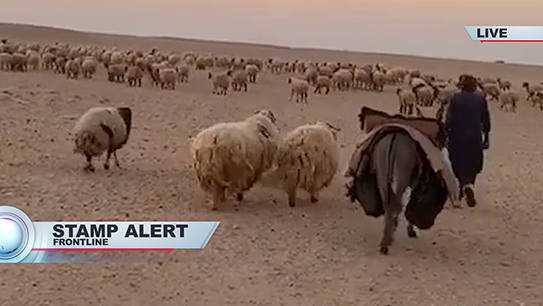
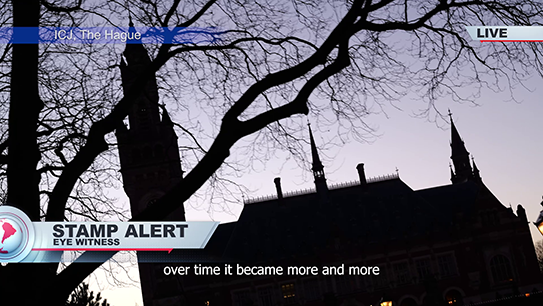
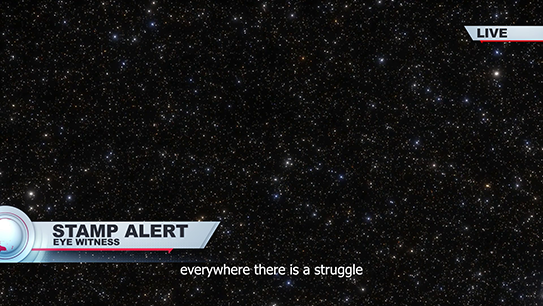
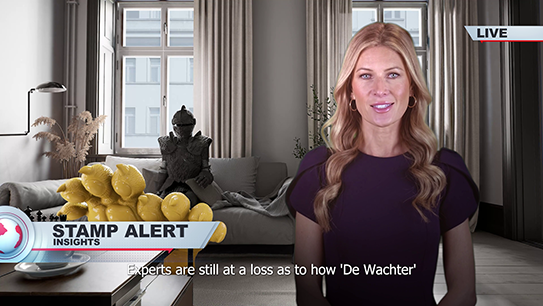
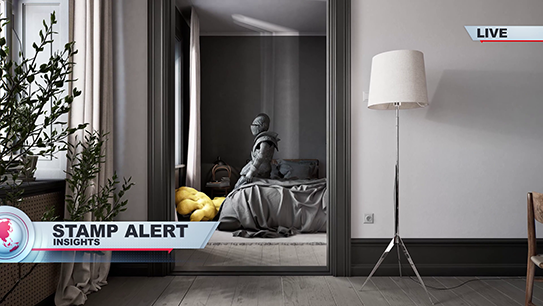
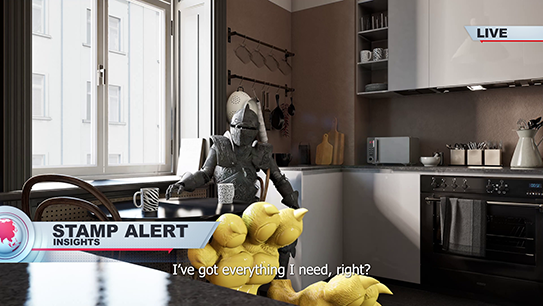
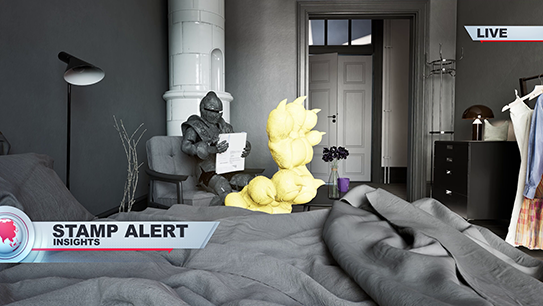
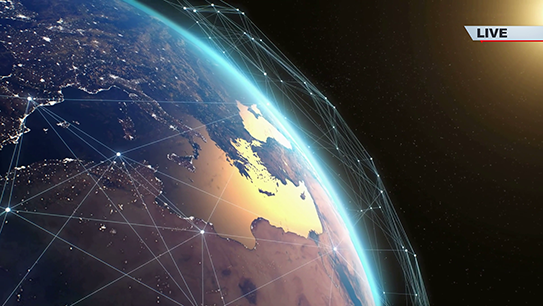
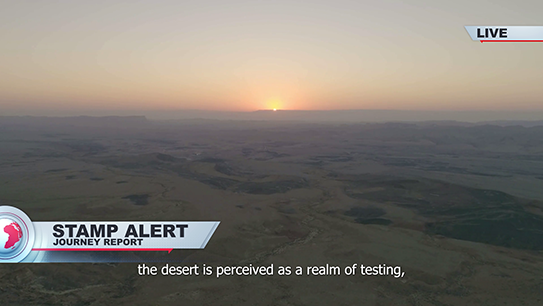
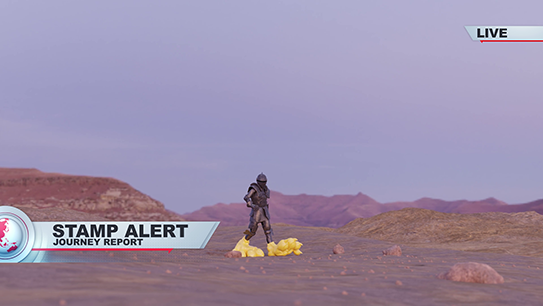
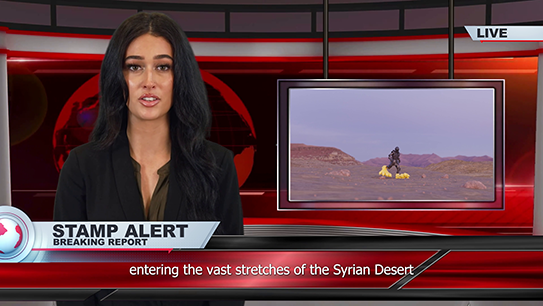
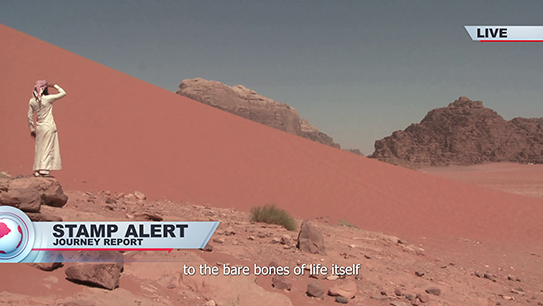
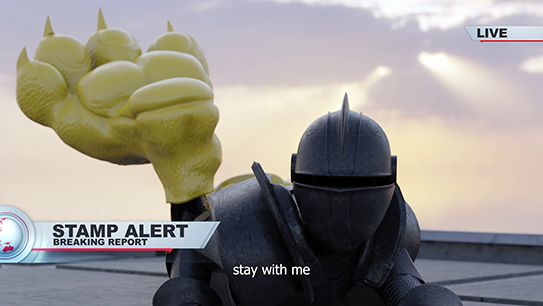
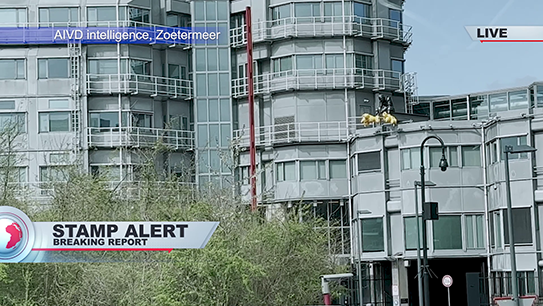

Title: STAMP ALERT – Cosmic Horde Report
Year: 2024
Artist: Anne de Vries
In Collaboration With: Mansur Suri (main actor and narrator)
Medium: Video installation, 4K resolution, with audio
Duration: 22-minute loop
Description: A fictional news channel hosted by Anya Demure, covering diverse global news stories that interweave the lives of the two central characters, Mansur and De Wachter, blending their individual journeys into a shared narrative.
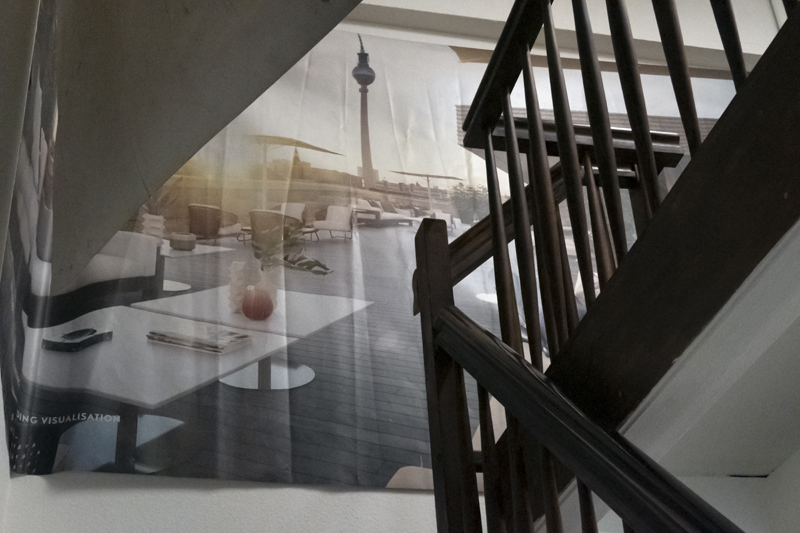

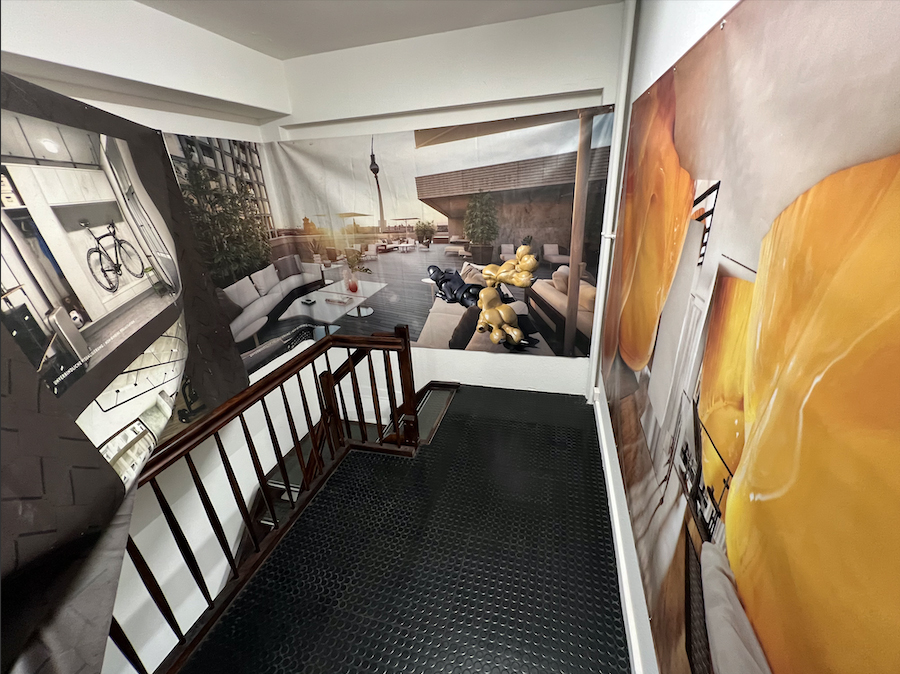
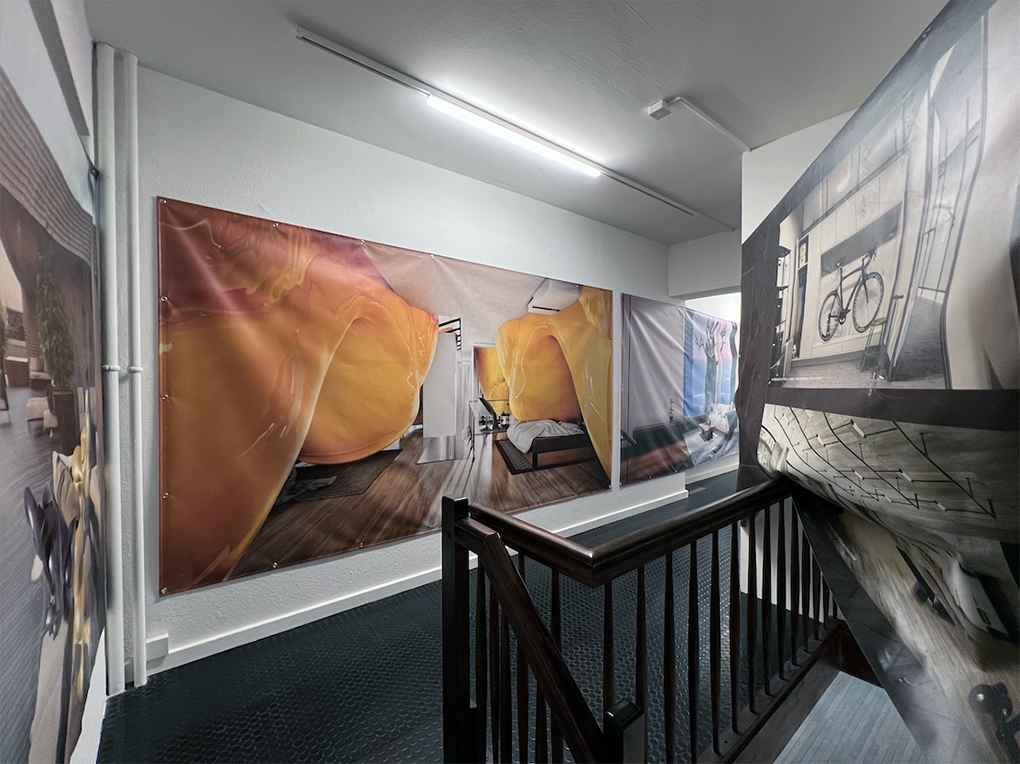
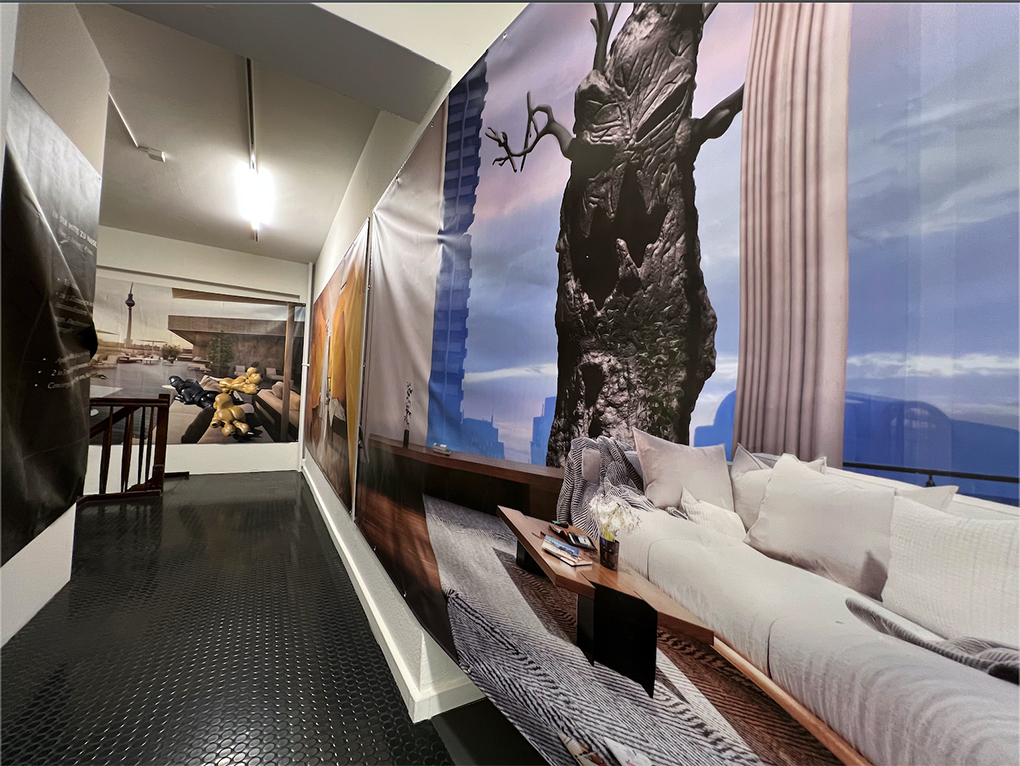
Title: Today’s Dream, Tomorrow’s Haunt
Artist: Anne de Vries
Year: 2025
Dimensions: Variable, immersive
Materials: CGI renders, UV prints on PVC
Description: By repurposing banners typically used as visualisations, around construction sites,
the work builds on the illusions embedded in development imagery—visualizing projected architecture and lifestyles for a near future.
Credits: CGI renders produced in collaboration with Leonardo Reuvenkamp.





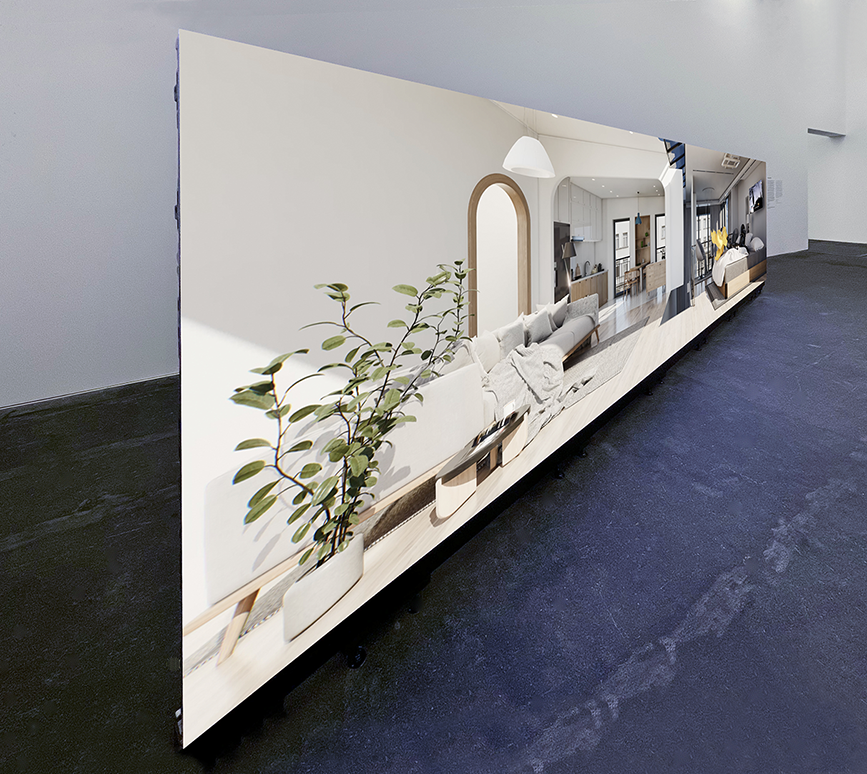
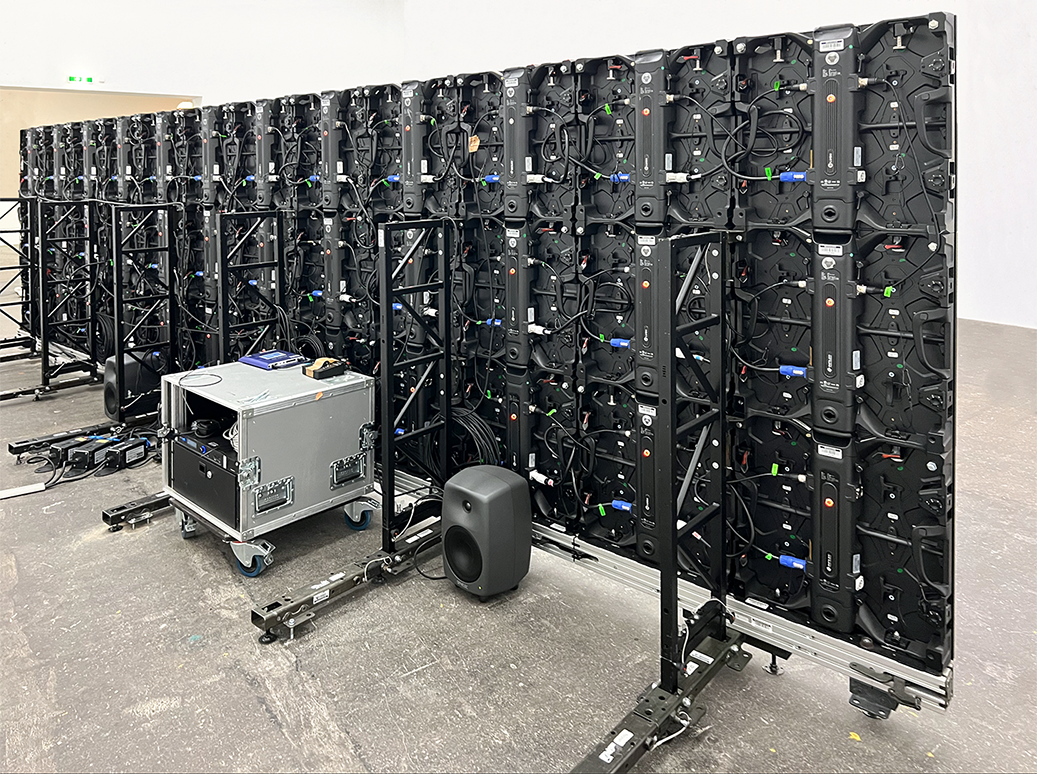
Title: STAMP ALERT – Home Dweller’s Journey
Year: 2024
Artist: Anne de Vries
In Collaboration With:
Contributors: Mansur Suri (main actor), Leonardo Reuvenkamp (3D animator)
Produced in Collaboration With: ODYSSEY, Cologne
Description: Life-sized video projection of a virtual apartment inhabited by the character De Wachter. The apartment also features the video STAMP ALERT, a fictional news program presented by Anya Demure.
Resolution: 7680 × 4320 pixels, stereo sound

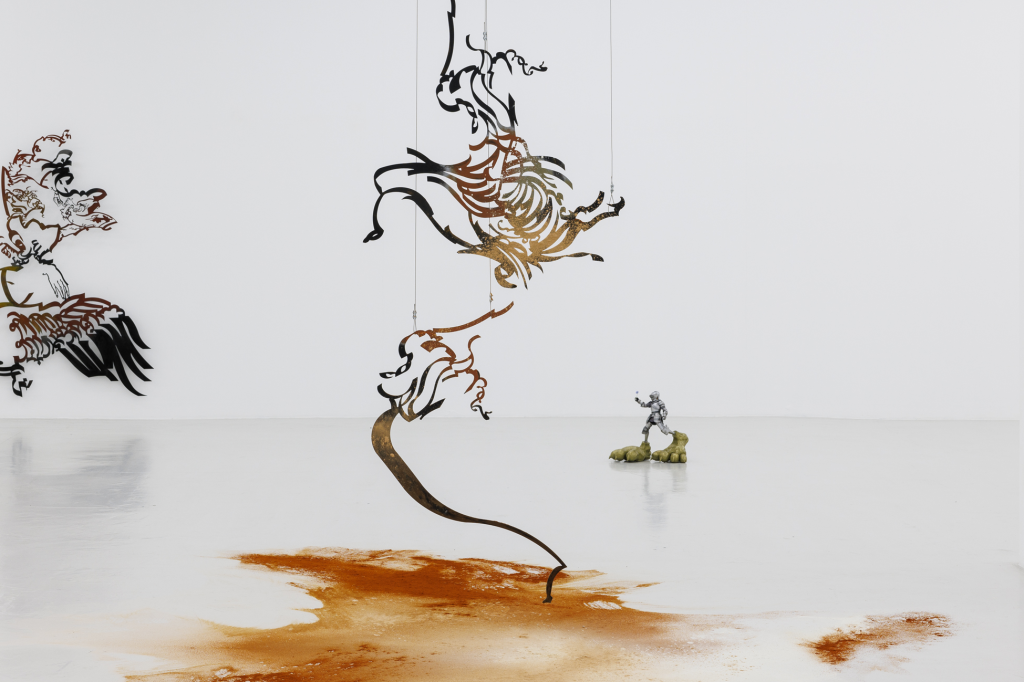


Documentation from the group exhibition ‘To Romanticize with Indecision’
Curated by Monia Ben Hamouda & Michele Gabriele.
With artworks by Monia Ben Hamouda, Andrew Birk, Anne de Vries, Michele Gabriele, Dorota Gawed̨ a and Eglė Kulbokaite,̇ Bradford Kessler. At Cassina Projects, Milan, 2024
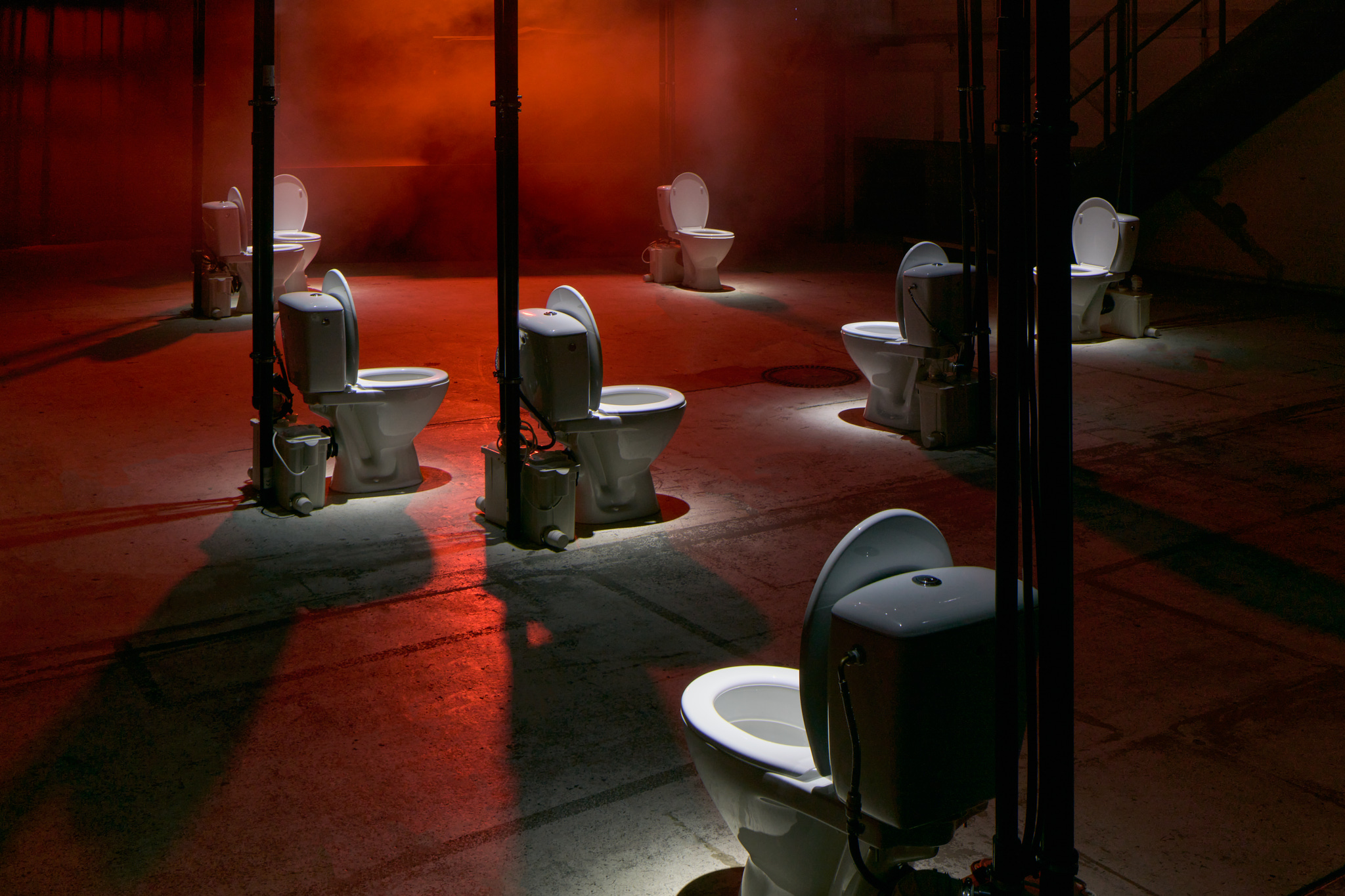










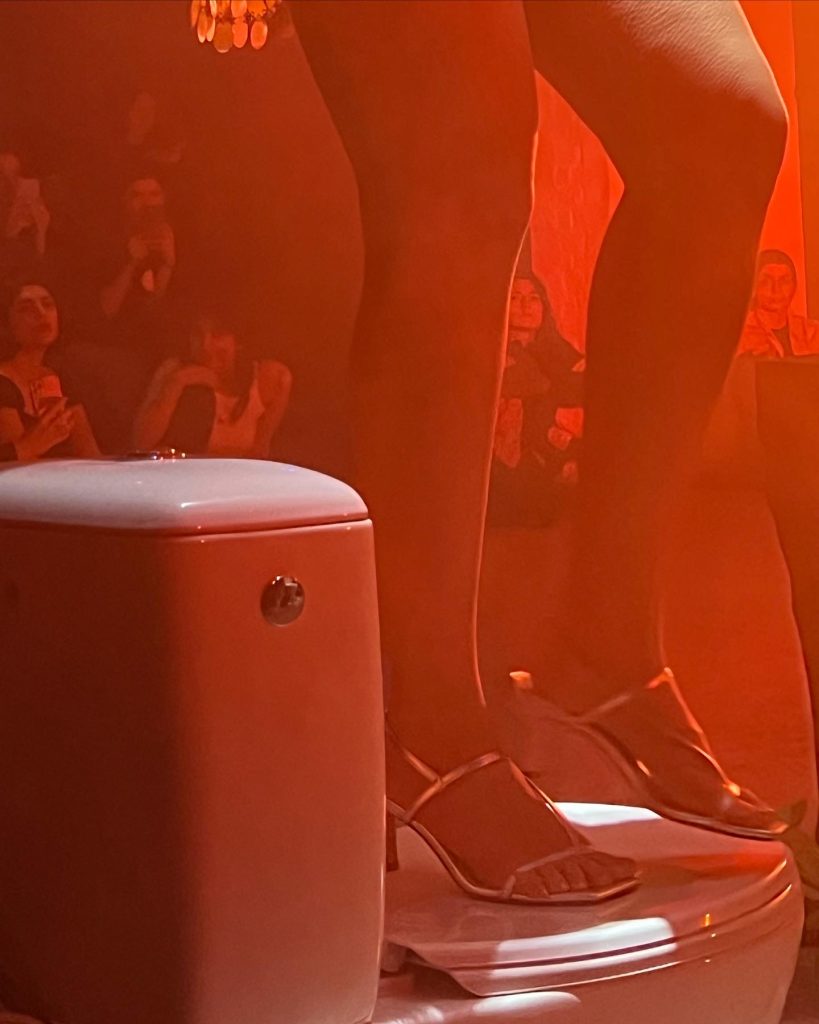
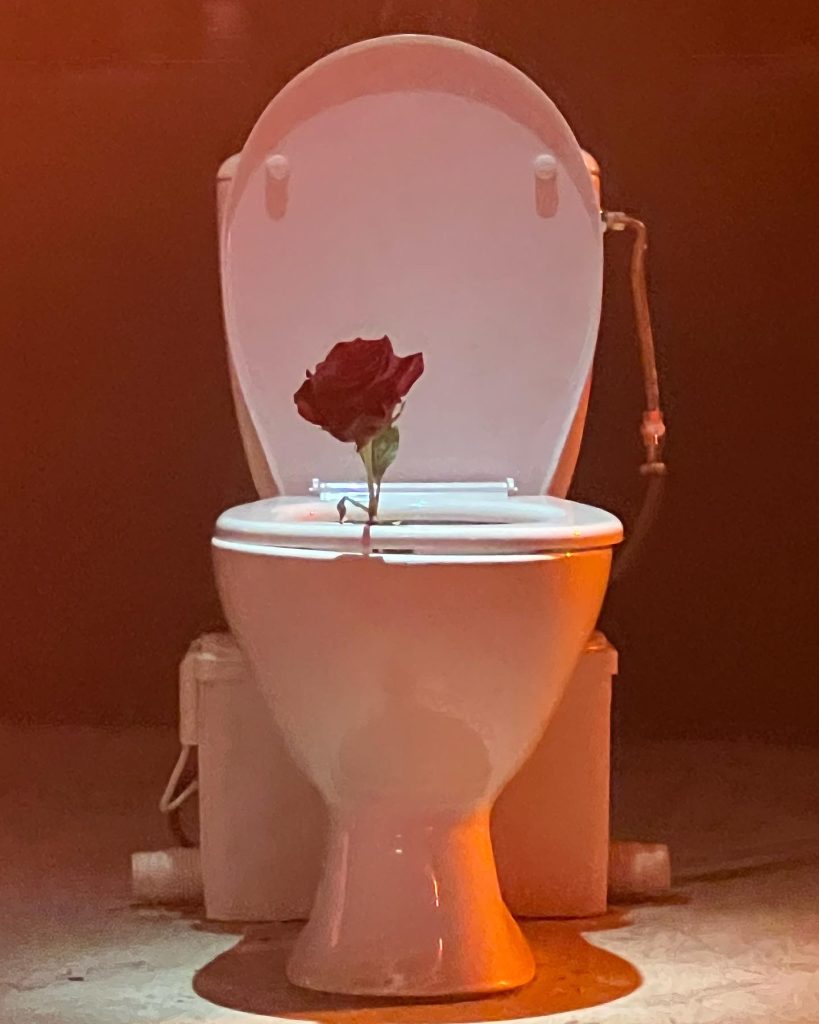

Title: TRAUMA UNCLOGGED
Year: 2023
Artist: Anne de Vries
Dimensions: Variable
Materials: 14 fully functioning toilets on a dance floor with a light and sound system
Description: This immersive installation features 14 fully functioning toilets on a dance floor, equipped with lights and a sound system. Serving as a stage, it hosted several performers, musicians, and the club night CLUB UNCLOG throughout a one-month exhibition period.
This first incarnation has been hosted and produced by Trauma in Berlin.
Event Program:
April 29th: Opening Night: Evita Manji (live) AMNESIA SCANNER (DJset) SCHIRIN (DJset)
May 4th: TRAUMA UNCLOGGED: PRICE (live performance)
May 11th: TRAUMA UNCLOGGED: Jan Vorisek (live) SADAF (live)
May 20th: CLUB UNCLOG: 7777 の天使, Dmitra, Dasychira, Jasmine Infiniti, DJ Mantis.



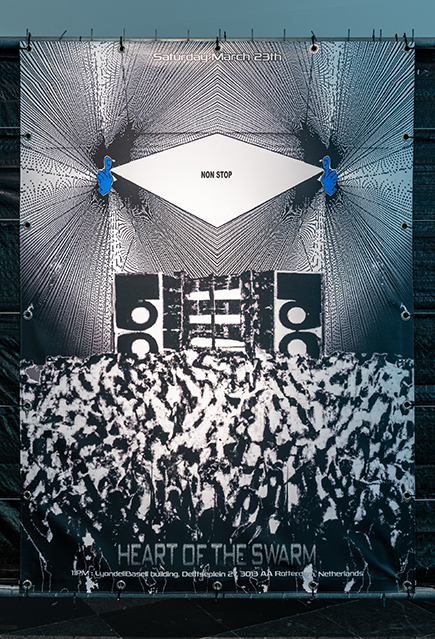
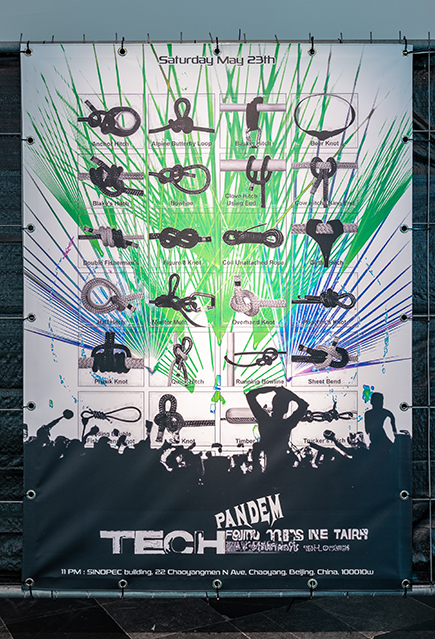
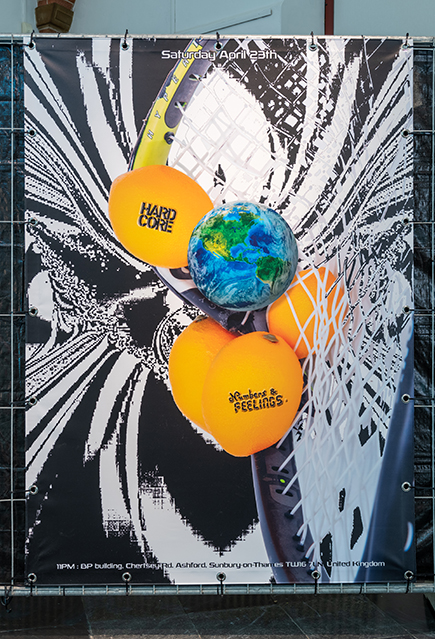
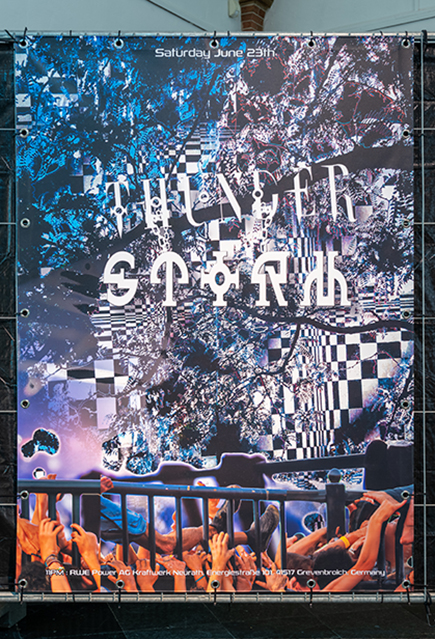
Title: In Control
Artist: Anne de Vries
Year: 2022
Dimensions: Variable
Materials: Fencing, prints on PVC
Description: Banners on the fencing advertise fictitious future events, featuring real locations and dates. It remains unclear whether these events signal a revolution or a party. The visuals, inspired by flyers for Tekno, Hardcore, and Bondage events, form a layered collage. Upon closer inspection, the locations reveal themselves as the headquarters of some of the world’s most environmentally destructive corporations.
Exhibited at: Frans Hals Museum, Haarlem



Title: Day Care Drill – Episode 02
Artist: Anne de Vries
Year: 2023
Description: This art installation features infantile but not innocent scenes, that include toy-like sculptures that can be played with.
Location: The headquarters of the ‘Parti Communiste Français’, inside the ESPACE building designed by Oscar Niemeyer in Paris.
Curated by: Kaleidoscope.
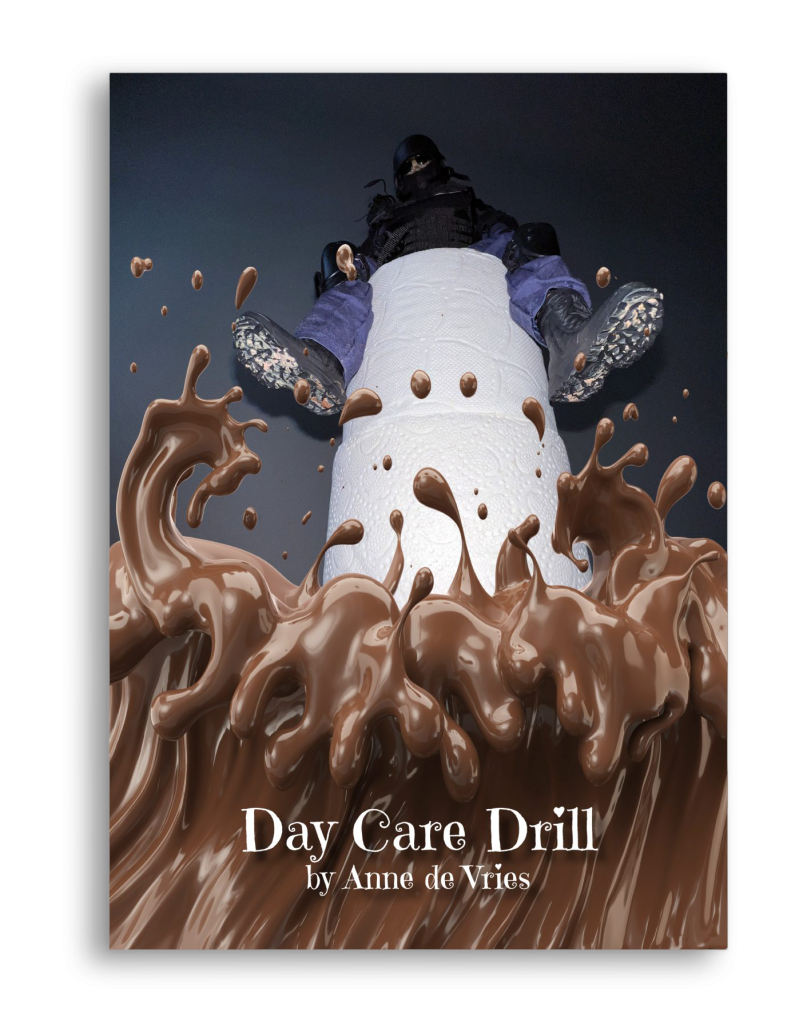
Invitation
Excretion is automatic, but how we do it is not. Parents are advised to teach their children how to use a toilet when they’re around 18-24 months, and diapers are substituted for toddler toilets. Scaled down for smaller limbs, they resemble the real thing but without the architectonic devices — doors, walls, dividers — that define their referent. For what is considered the most intimate of architectural spaces, privacy is earned not given. Like with most training techniques, these are performative objects, like stage sets, upon which the digestive rites of adulthood are mimed under the watchful gaze of parents.
Like children’s toilets, children’s toys are designed more for the buyer than the user. For example, when the toy company Hasbro released the first “G.I. Joe” in 1964, they coined the term “action figure” to appeal to gender-anxious mid-century American parents who didn’t want their boys playing with dolls. Since then, action figure has become the generic eponym for posable plastic toys marketed male — a wide range of products that shift with the times. Not long after the militaristic original hit shelves, cop-themed action figures emerged, including those released in conjunction with the 1970s crime drama show S.W.A.T., which chronicled the fictional adventures of a “Special Weapons And Tactics” team in California.
Violent delights marketed to children, whether action figures or video games, offer a projection screen for the adult world that makes them. For some, they’re the cause of all the blood and guts smeared across our grown-up world — a scapegoat for the AR-15s wielded by young adults (if not those by the men-in-blue who swat them down as they enter school). Others construe them as a cathartic device, or at least a palliative, for the violence that children perceive around them: a way to get your gusto for gore out of the system through play acting. Violence is presented as a socially-transmitted disease, and role-play as either predictive or prophylactic. Everyone eventually grows up, of course; some become cops themselves, while others become collectors. Today 1:6 scale action figures are tailored as much to children as adults — infantilized violence matured into a speculative market.
For DAY CARE DRILL, an exhibition at Blue Velvet Projects in Zürich, Anne de Vries brings his lion-in-knight’s-armor into a drama of toy policing. The exhibition constitutes the next chapter in the avatar’s twisted hero’s journey, which has unfolded across different spaces and pages throughout the last year. Previously the heraldic figure stomped its paws across landscapes of sand, first at Berlin’s Fragile Gallery and later at the former building of the famous Tresorclub. Not long after, the knight became De Wachter: a public sculpture perched on the roof of the Dutch secret service in Zoetermeer. At Blue Velvet Project, the monument peers domestic and dresses in drag. It invades a children’s nursery inflected with sadistic intent — a fever dream of infantilized power and infant power structures. 1:6 scale SWAT figures are made sticky with chocolate syrup, posed on cradles, and deflated by the brass-patinated, engorged paws of de Vries’ heraldic lion in armor. DAY CARE DRILL interrogates childhood tropes as a proxy for adulthood, when role-play delaminates. Characters become identities, props appear structural, and when the performance is misperformed, it signifies something else: artificiality.
Text by Nicholas Korody
The Exhibition is on view at Blue Velvet Projects until October 29th, 2022




Title: Home Alone
Artist: Anne de Vries
Year: 2022
Dimensions: 98 × 87 × 100 cm
Materials: Rusted metal coating, patina, carved rigid foam core, ceramic toilet, plastic pipes
Exhibition views from: Blue Velvet Projects, Zürich
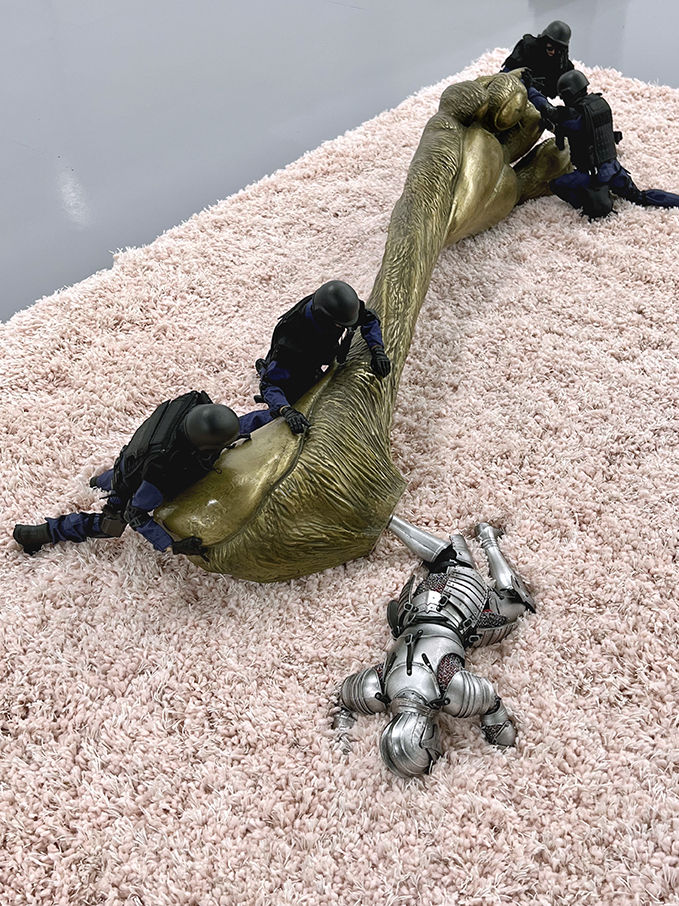










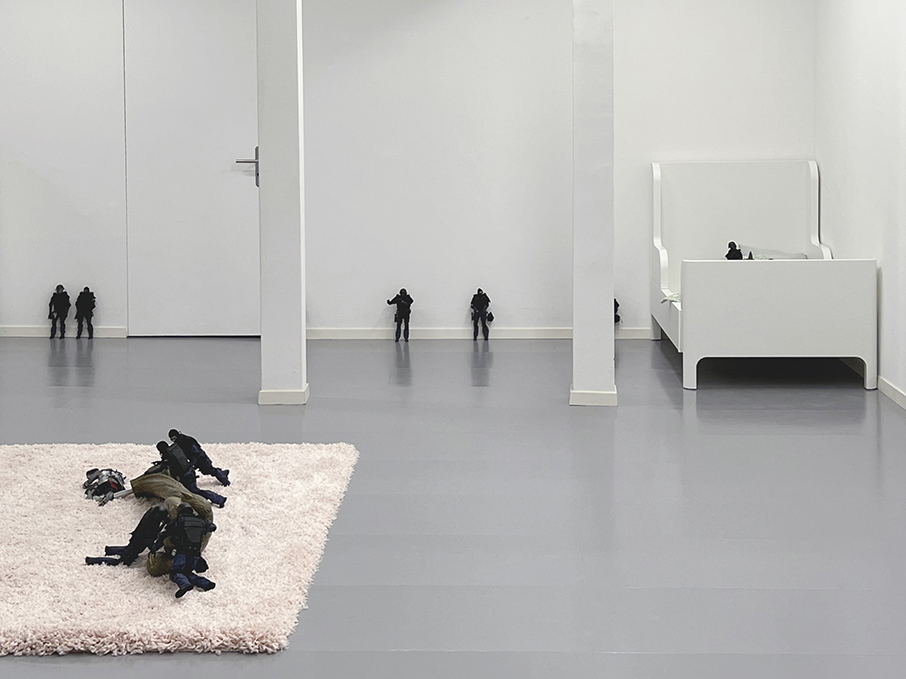



Title: The Great Turn
Artist: Anne de Vries
Year: 2022
Dimensions: Variable
Materials: Brass metal powder, patina, resin core, semi-customized 1/6 action figures
About: This art installation consists of a unique set of components to collect, install, and to be played with.
Exhibition views from: Blue Velvet Projects, Zürich





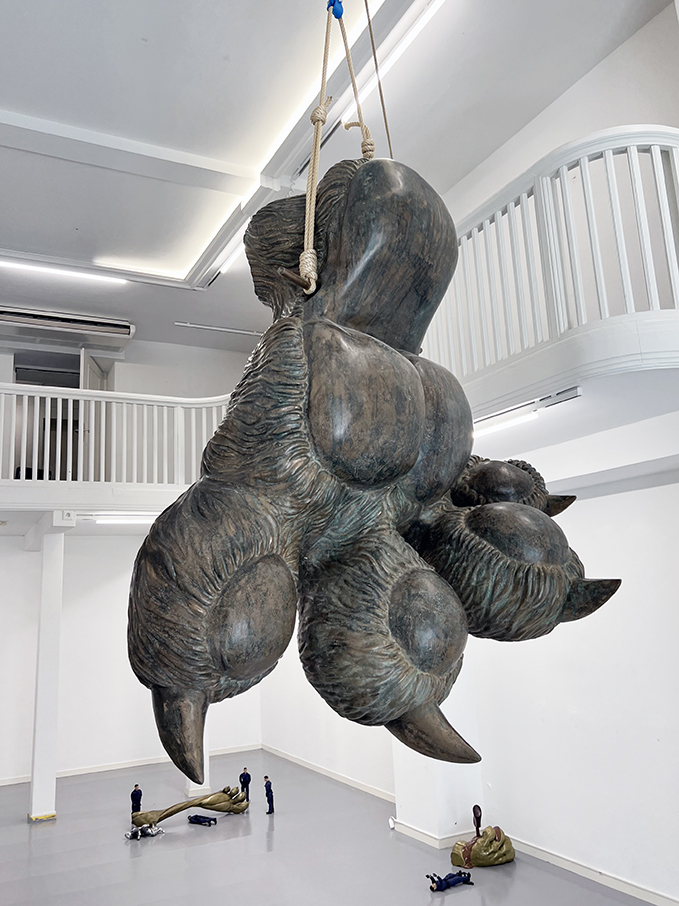








Title: Public Display
Artist: Anne de Vries
Year: 2022
Dimensions: 180 × 120 × 80 cm
Materials: Bronze coating, rusted patina, carved rigid foam core, metal bar, acrylic cables
Exhibition views from: Blue Velvet Projects, Zürich
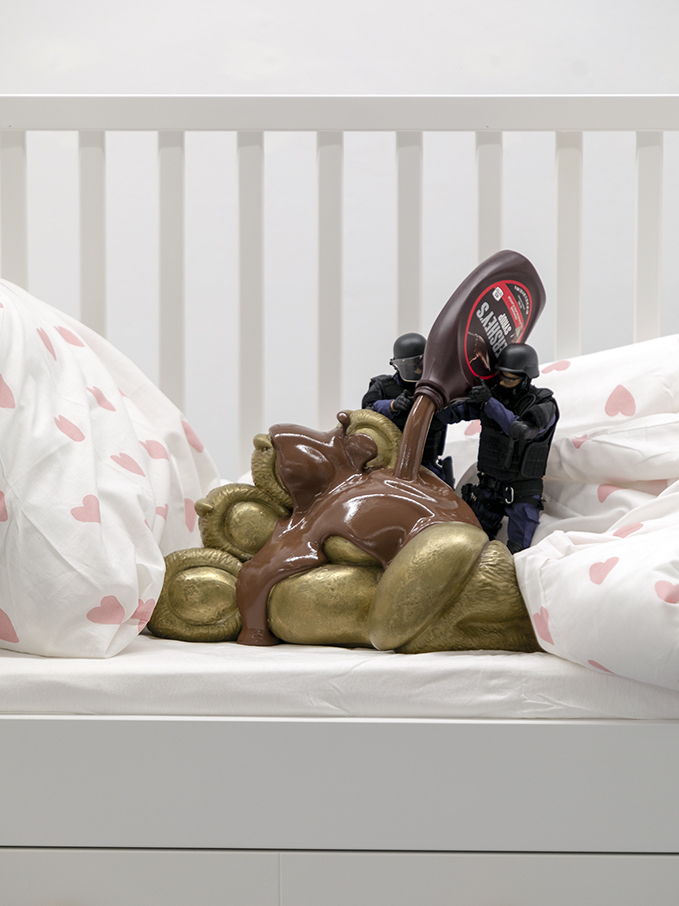







Title: Safe Space – Choco Relief
Artist: Anne de Vries
Year: 2022
Dimensions: Variable
Materials: Brass coating, patina, resin core, semi-customized 1/6 action figures
About: This art installation consists of a unique set of high-quality components to collect, install, and to be played with.






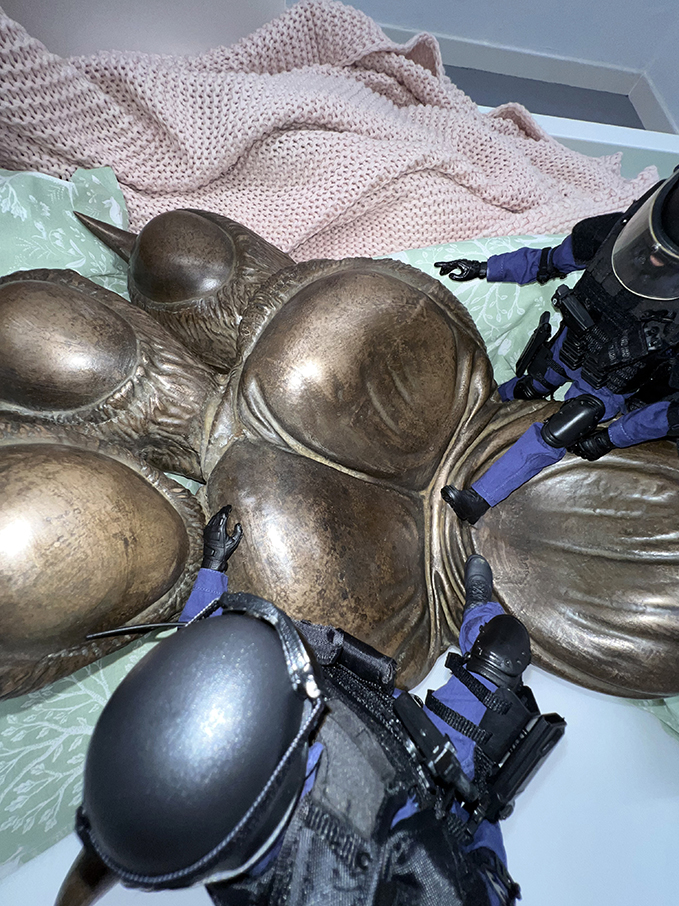





Title: SAFE SPACE – Tickle Play
Artist: Anne de Vries
Year: 2022
Dimensions: Variable
Materials: Bronze coating, patina, hard polylactic acid core, semi-customized 1/6 action figures
About: This art installation consists of a unique set of components to collect, install, and to be played with.
Exhibition views from: Blue Velvet Projects, Zürich










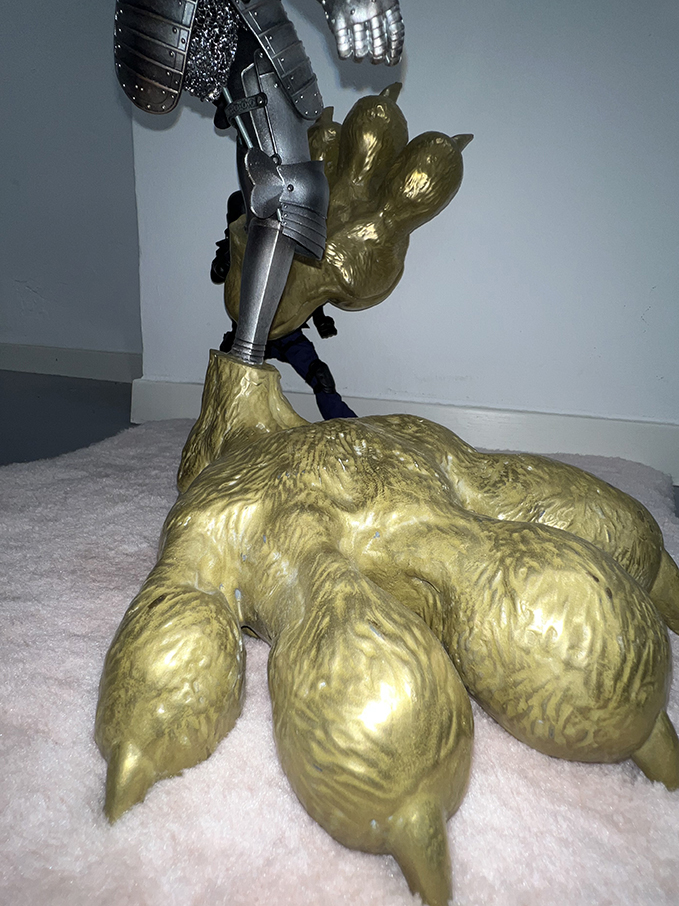
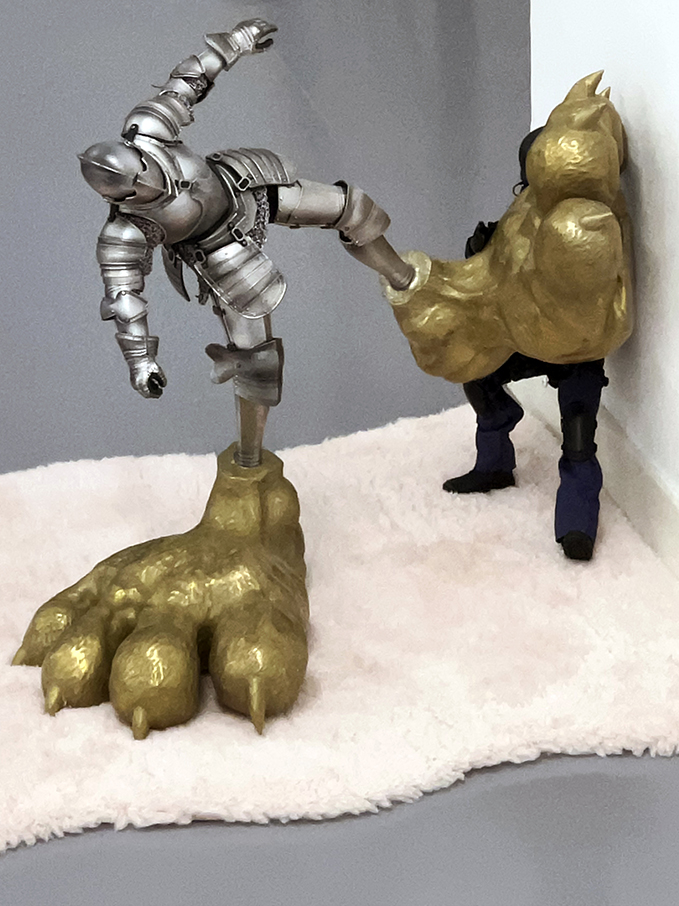



Title: SAFE SPACE – Tickle Play
Artist: Anne de Vries
Year: 2022
Dimensions: Variable
Materials: Bronze coating, patina, hard polylactic acid core, semi-customized 1/6 action figures
About: This art installation consists of a unique set of components to collect, install, and to be played with.
Exhibition views from: Blue Velvet Projects, Zürich


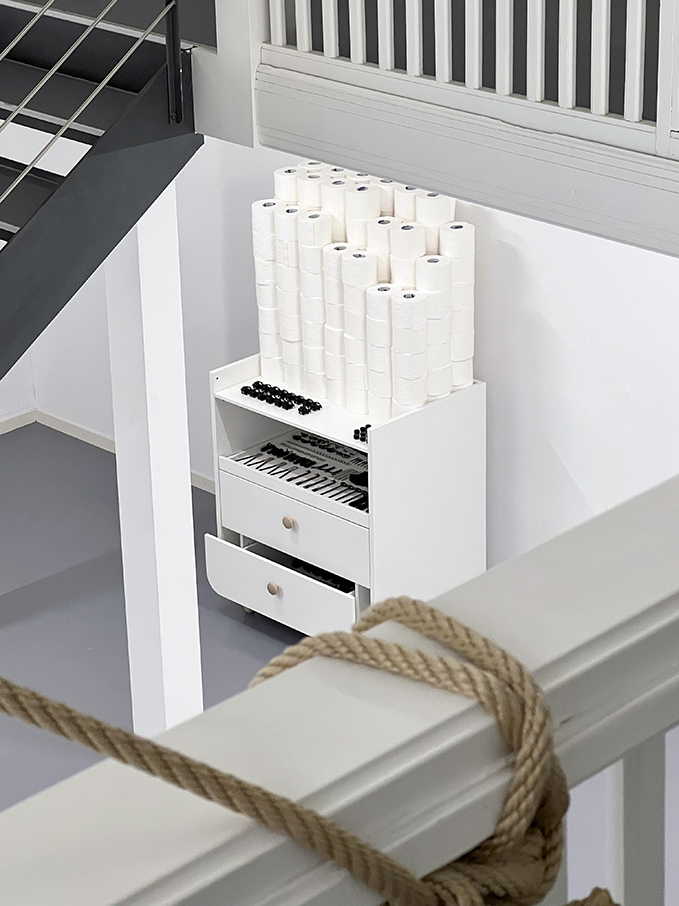






Title: Day Care Drill
Artist: Anne de Vries
Year: 2022
Dimensions: Variable
Materials: Archive for ‘Special Weapons and Tactic tools’ in the bathroom cabinet, 150 rolls of toilet paper
About: This art installation consists of a unique set of components to collect, install, and to be played with.
Exhibition views from: Blue Velvet Projects, Zürich


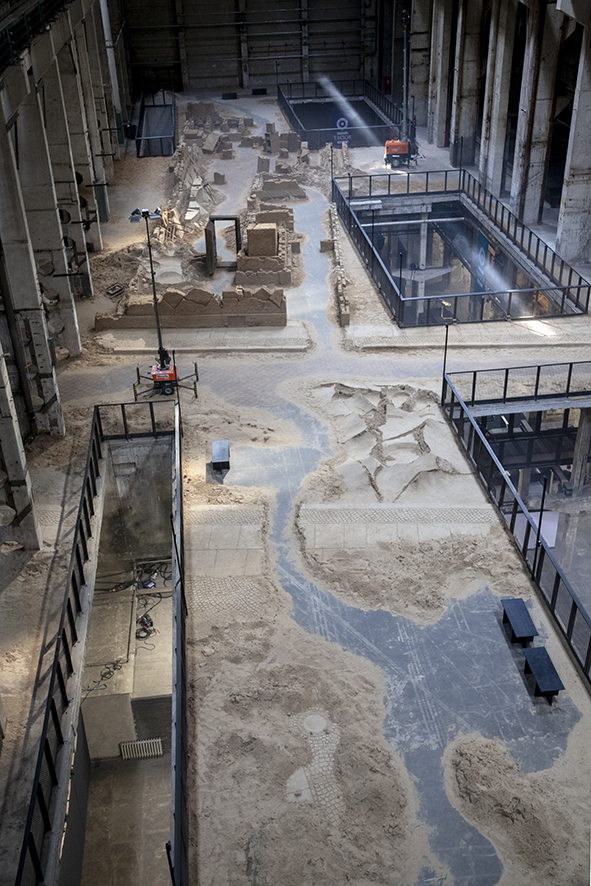


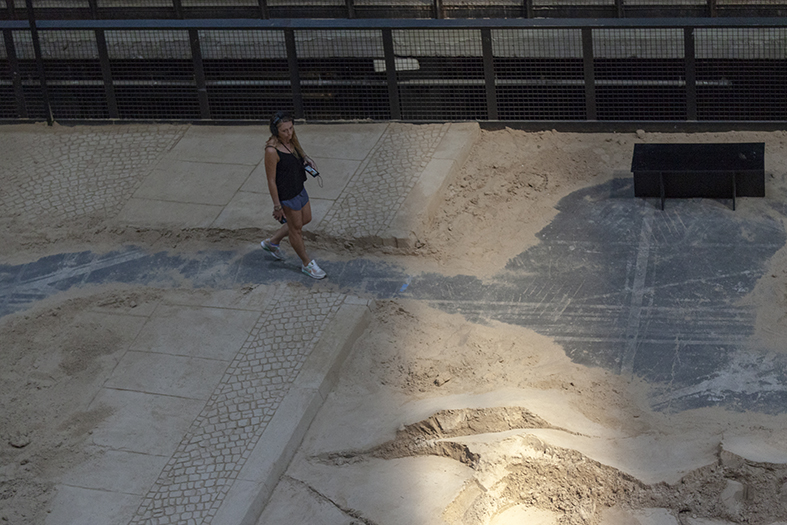
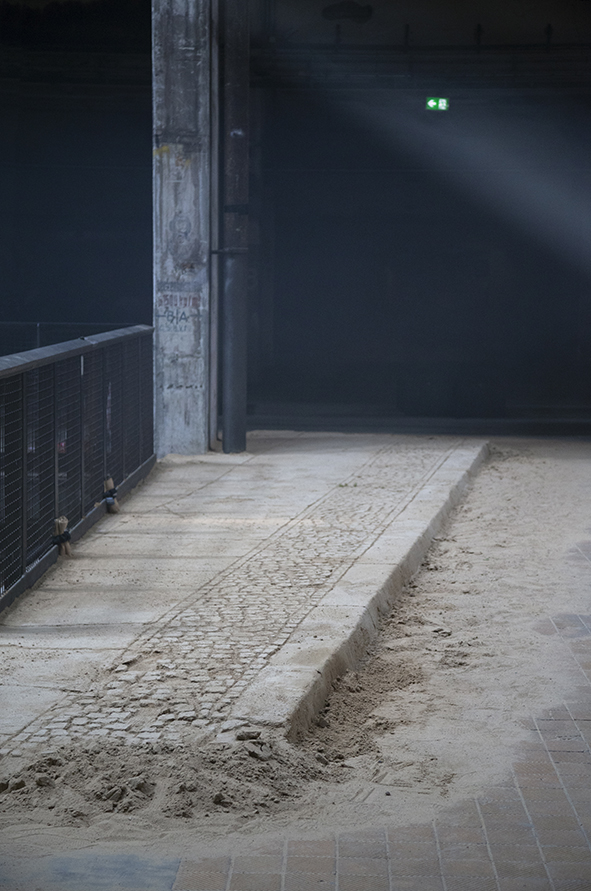
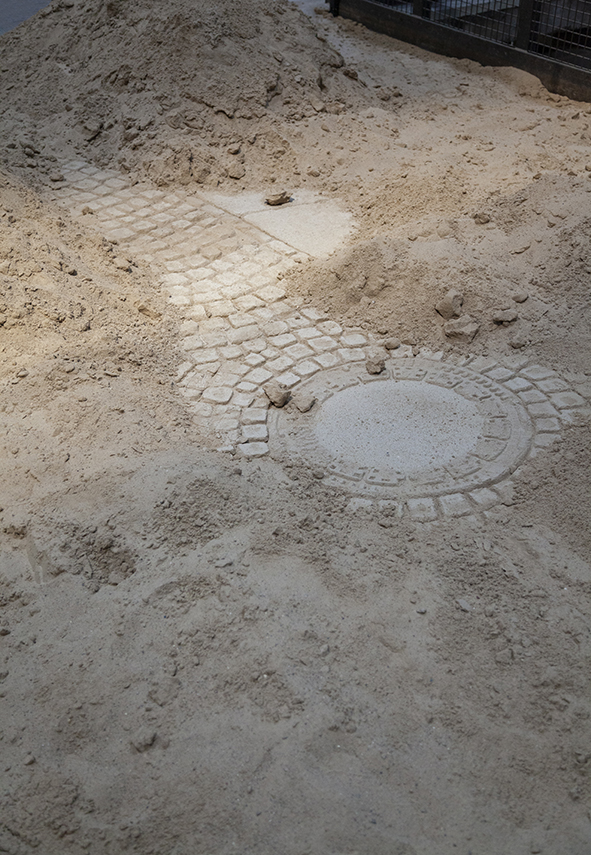
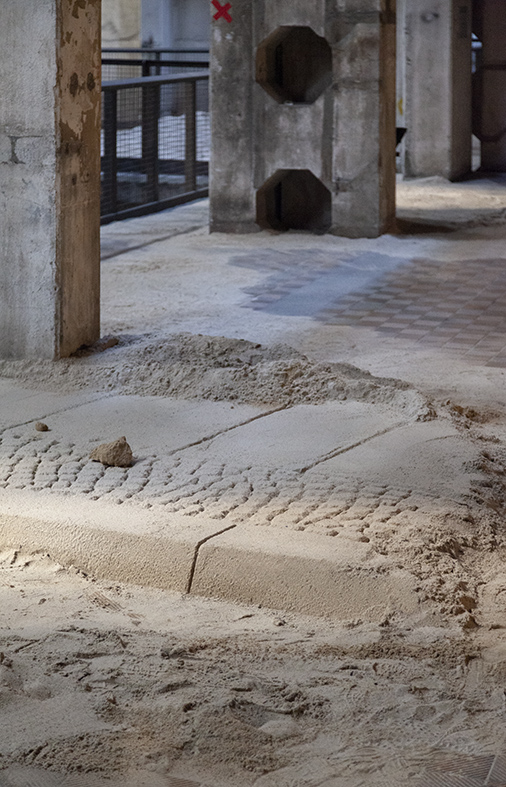

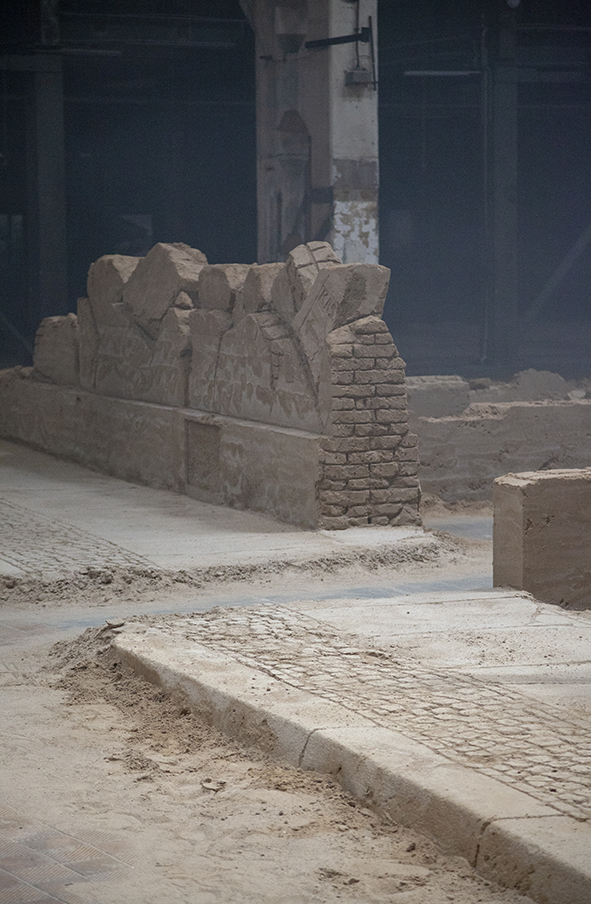

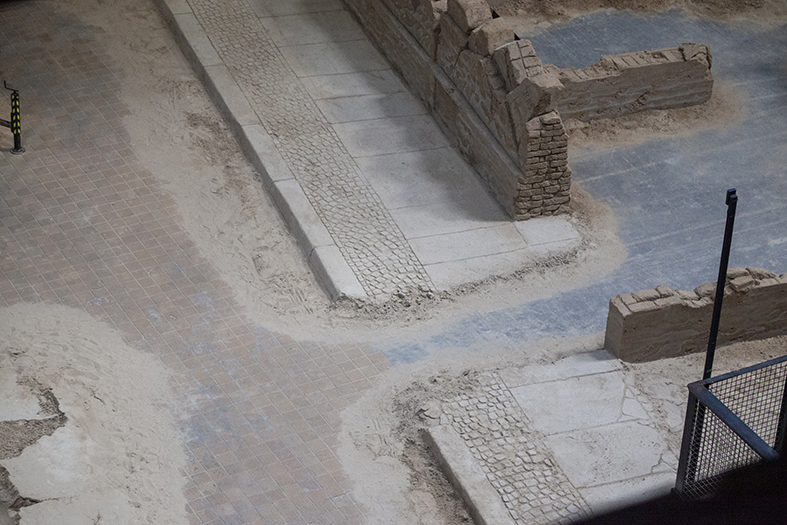
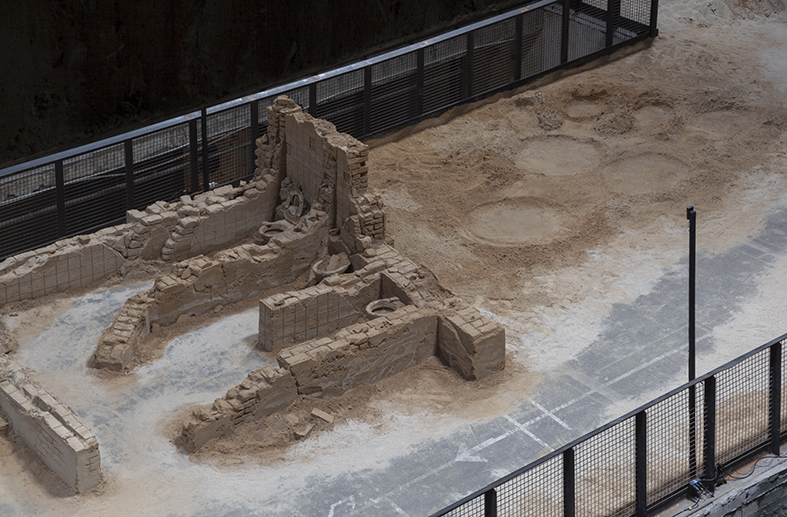


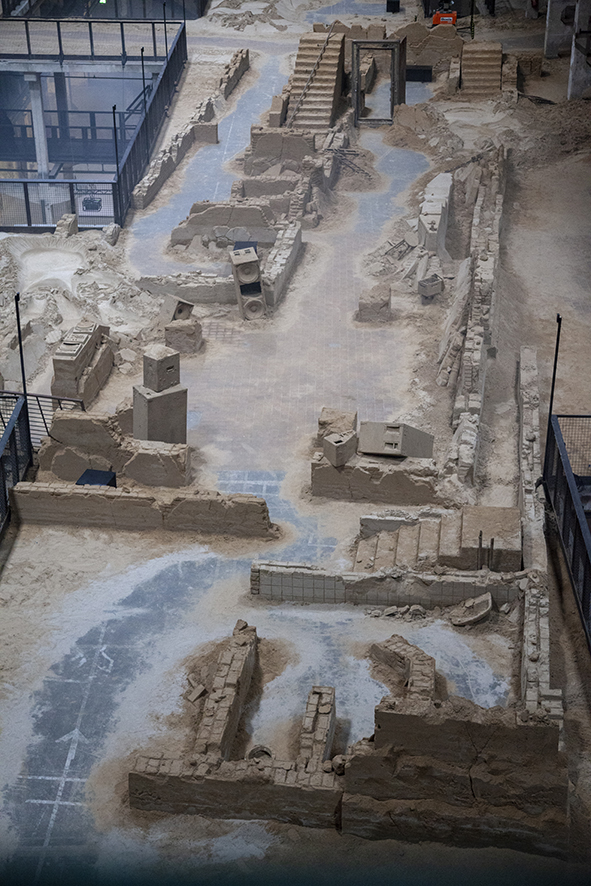

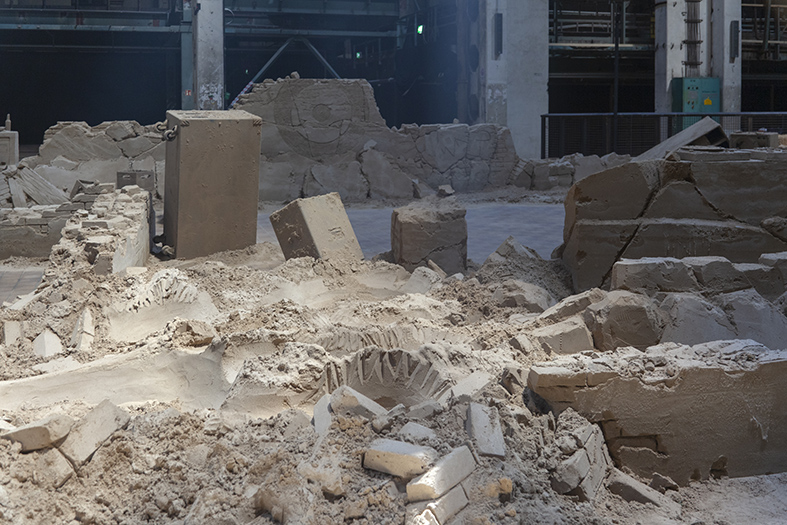



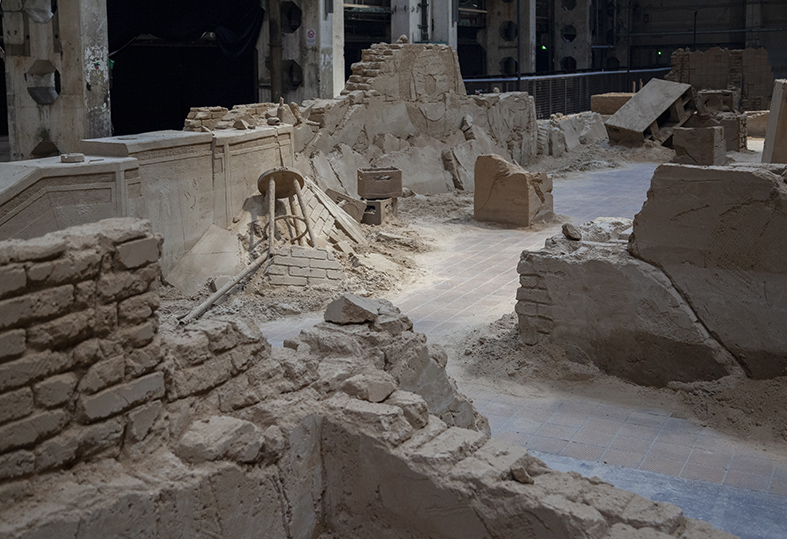

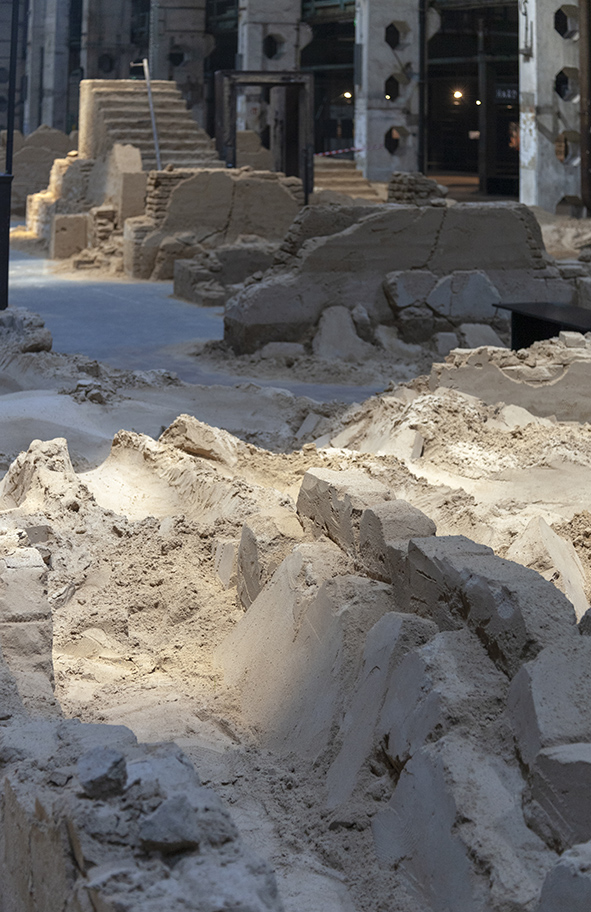

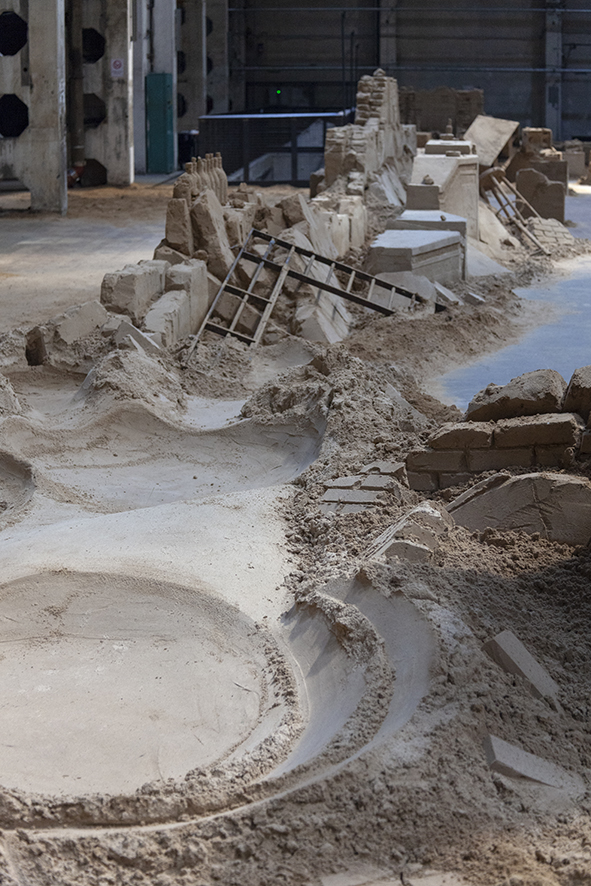
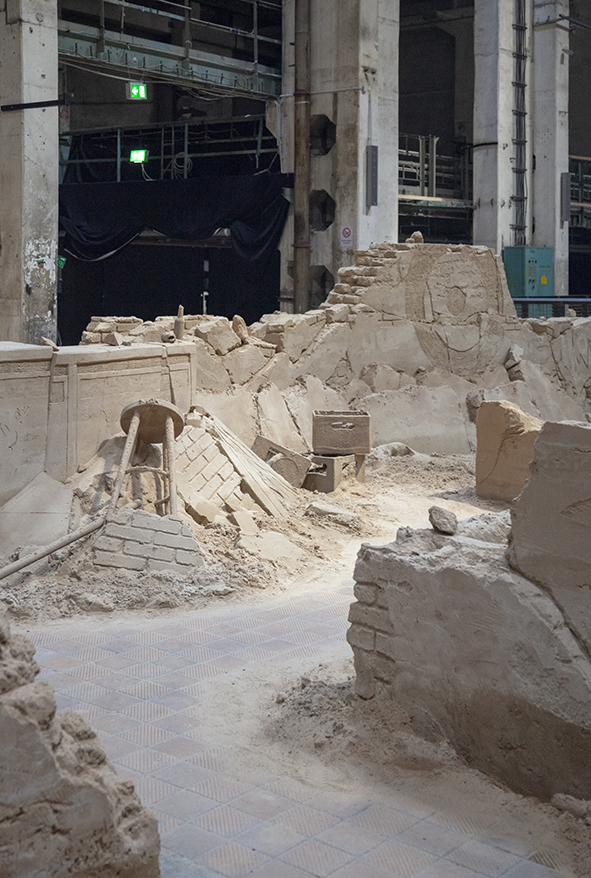



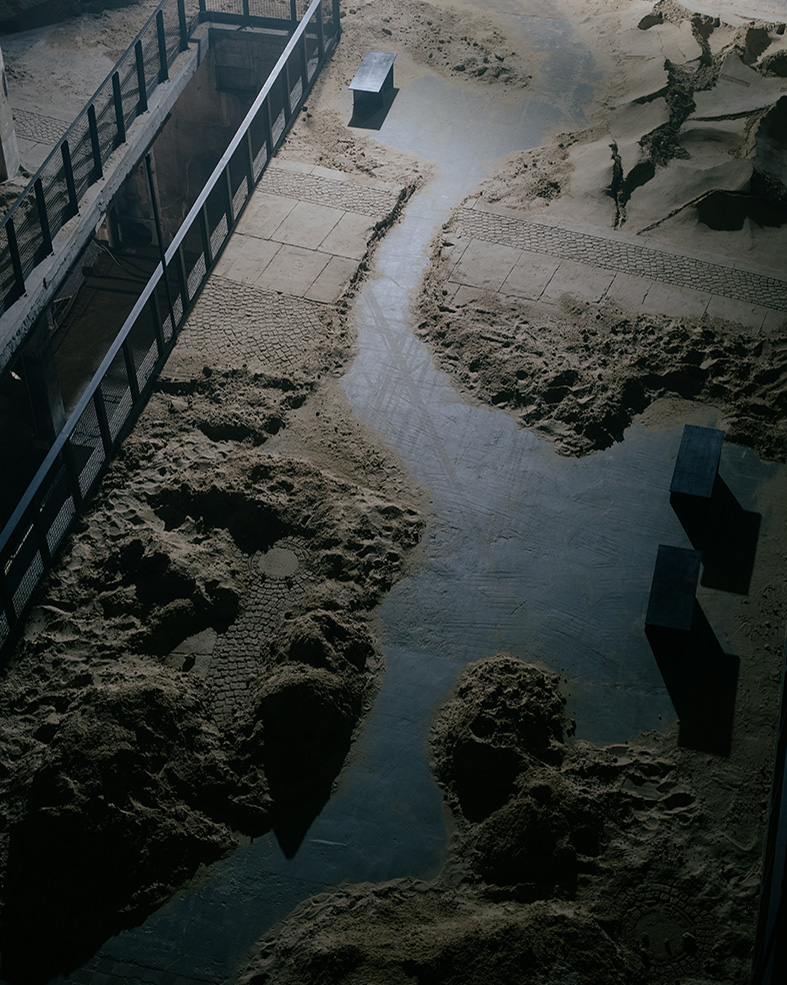
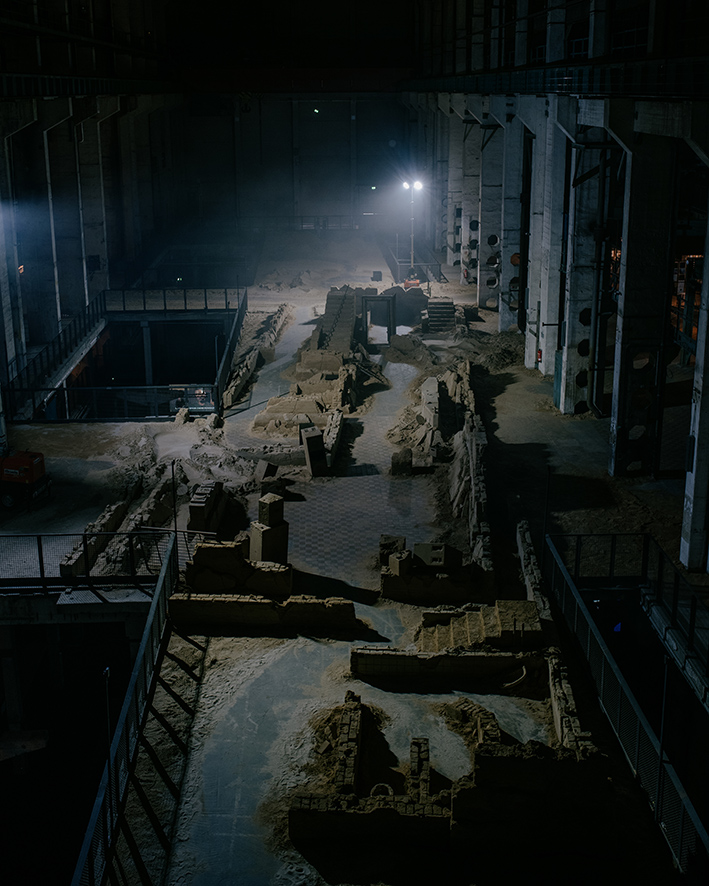





Title: STOMPING GROUNDS
Artist: Anne de Vries (in collaboration)
Curators: Adriano Rosselli, Odessa Evelyn Malke
Researcher: Sven von Thülen (der Klang der Familie)
Sand Carvers: Bouke Atema, Jeroen Advocaat
Sound Designers: Rowan Ben Jackson, Odysseas Constantinous
4D Sound Programming: Usomo
Location: Kraftwerk Berlin
About: The art installation Stomping Grounds is a 1:1 replica made from sand of the giant gold vault underneath the Jewish-owned Wertheim building, which after a turbulent history and the fall of the Berlin Wall in 1989 became the cradle of techno music from Detroit, Chicago, the UK, and Germany, known as Tresor.




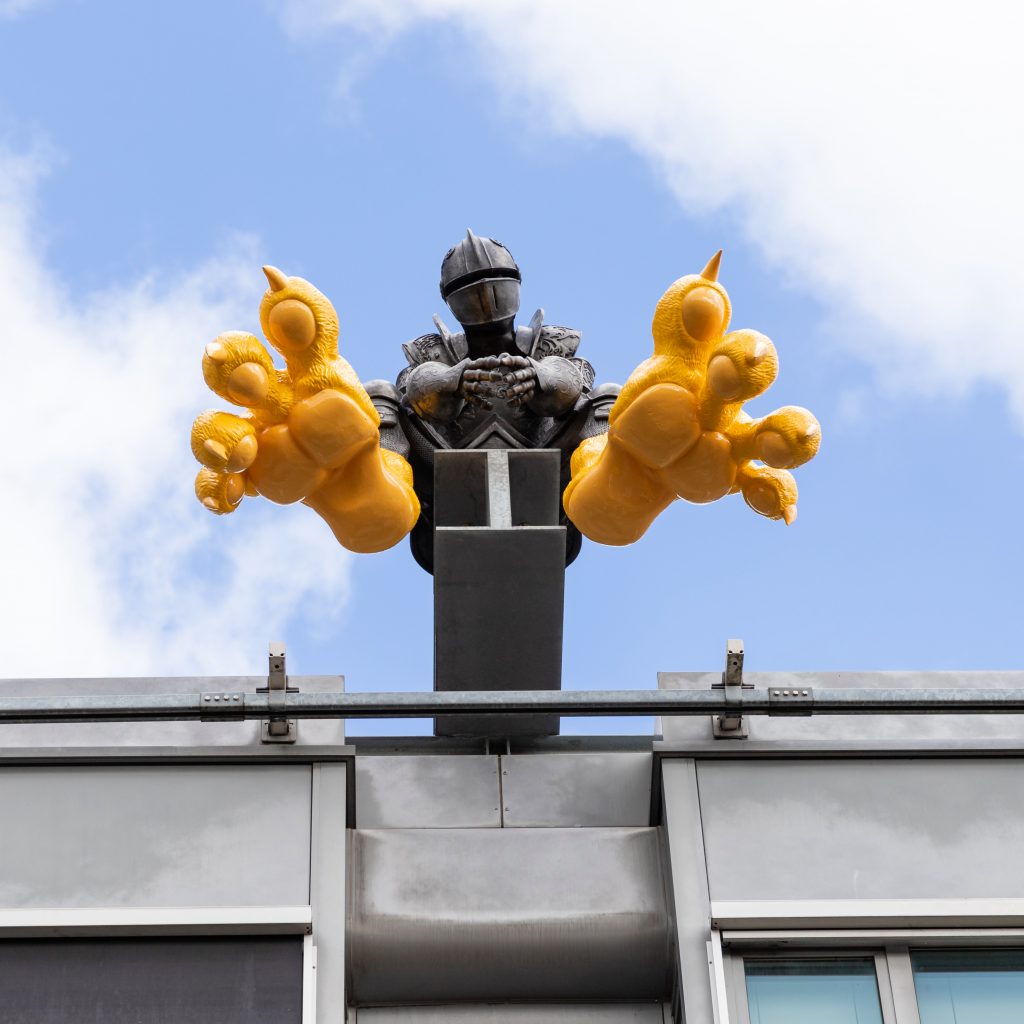


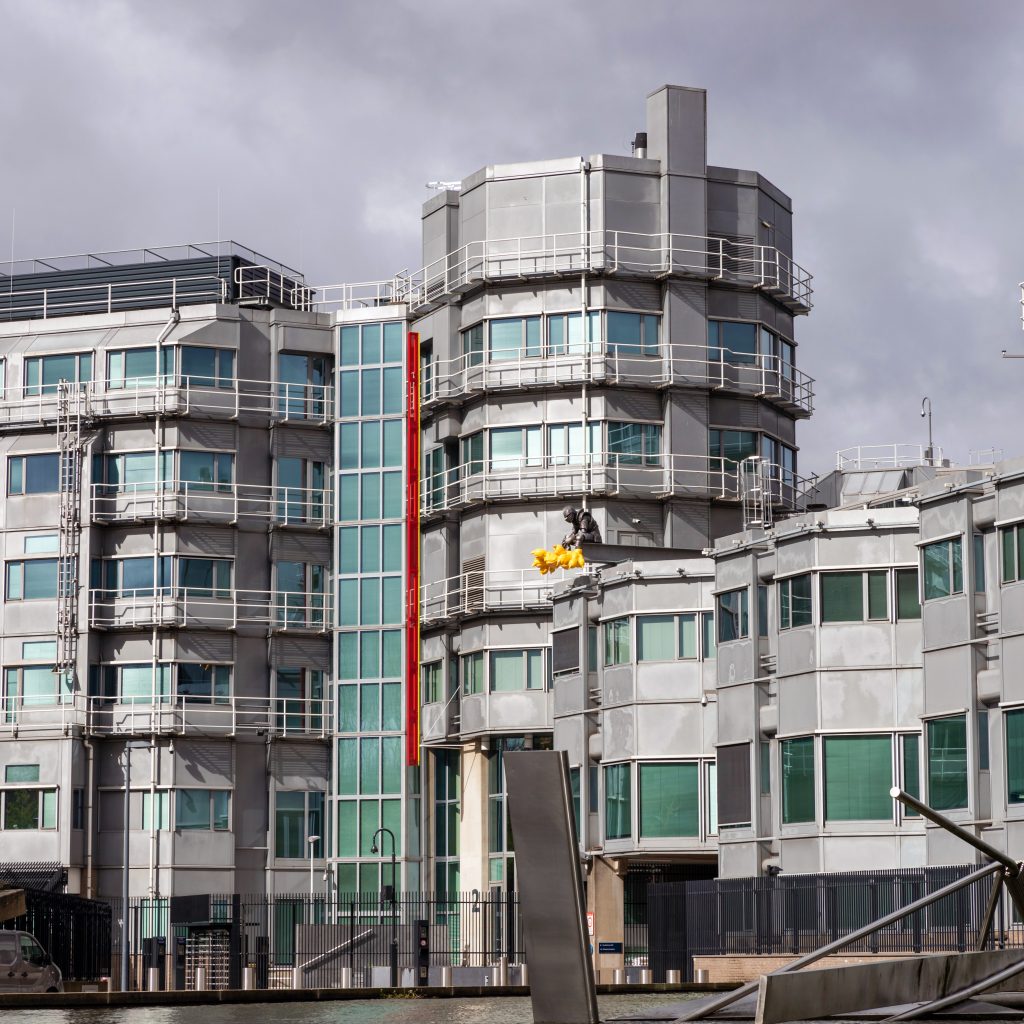
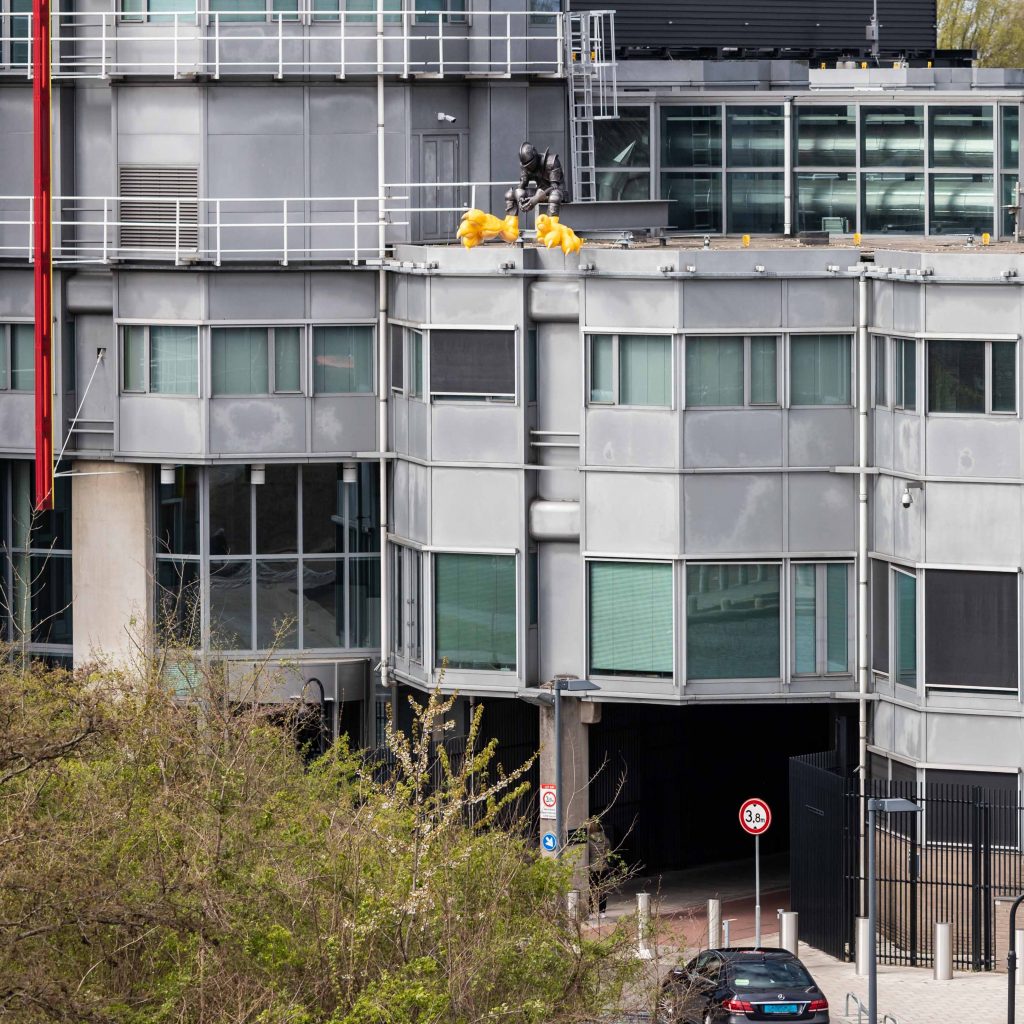
Title: De Wachter
Artist: Anne de Vries
Year: 2022
Materials: Aluminium, lacquer, and wax
Dimensions: 200 × 200 × 180 cm
Description: ‘De Wachter’ is a commissioned sculpture situated on top of the building that serves as the headquarters of the Dutch Secret Service, located in Zoetermeer.
Curator: Melchior Jaspers

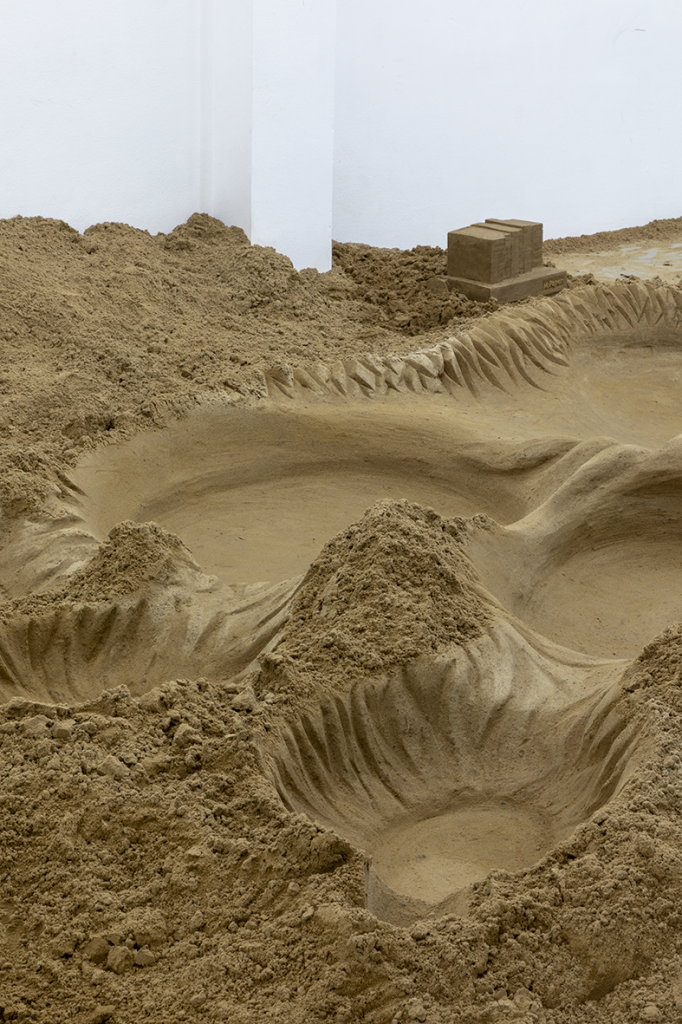




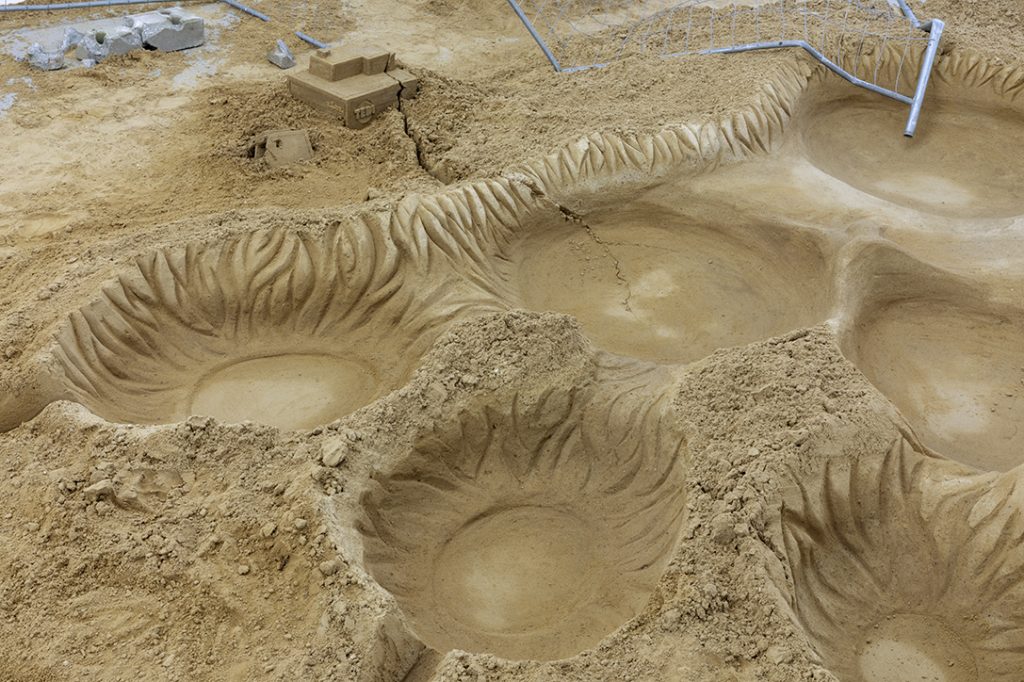














Title: HEAVY LOAD
Artist: Anne de Vries
Year: 2021
Dimensions: Variable
Materials: Sand, fences, prints on PVC
About: Historically, the right to bear arms was hereditary — a sexually-transmitted inheritance from parent to child, like the color of your eyes or the deed to a home. Heraldry developed out of this, a state-regulated economy of signs demonstrating that the bearer, or his ancestor, was legally entitled to wield a weapon. Like a mise en abyme, this visual system involved layers of meaning. Mere possession of a family crest demonstrated a certain social standing, but its specific form also carried weight. For instance, the so-called “king of beasts,” a lion, implied strength, nobility, or courage in the battlefield. But over time, these direct semantic connections weakened, between the animal and its depiction, as well as between a coat of arms and knighthood. Heraldic designs eventually came to signify simply the product of a birthright: generational wealth, which is to say, power. Sand itself doesn’t signify power, but it makes it work. A vast and obscure extractive industry turns shorelines into the glass skyscrapers that compose the skylines of Alpha global cities. Sand is both a major resource within the contemporary global economy and the origins of its symbolic representation. That is, like the relationship between the living lion to its stylized double on a heraldic crest, the shifting reality of sand haunts the visual embodiment of finance capitalism as architectural form. For HEAVY LOAD, an exhibition at Fragile in Berlin, Anne de Vries has filled the space with 15 tons of sand. Impressed in its surface are the chopped and screwed traces of corporate logos, neighboring buildings, and the pawprints of a knight cannibalized by its own herald, put on podophilic display.
Text by: Nicholas Korody
Sand carving: In collaboration with sand sculpture: Bouke Atema
Curator: Jonas Wendelin
Exhibition views from: FRAGILE Berlin


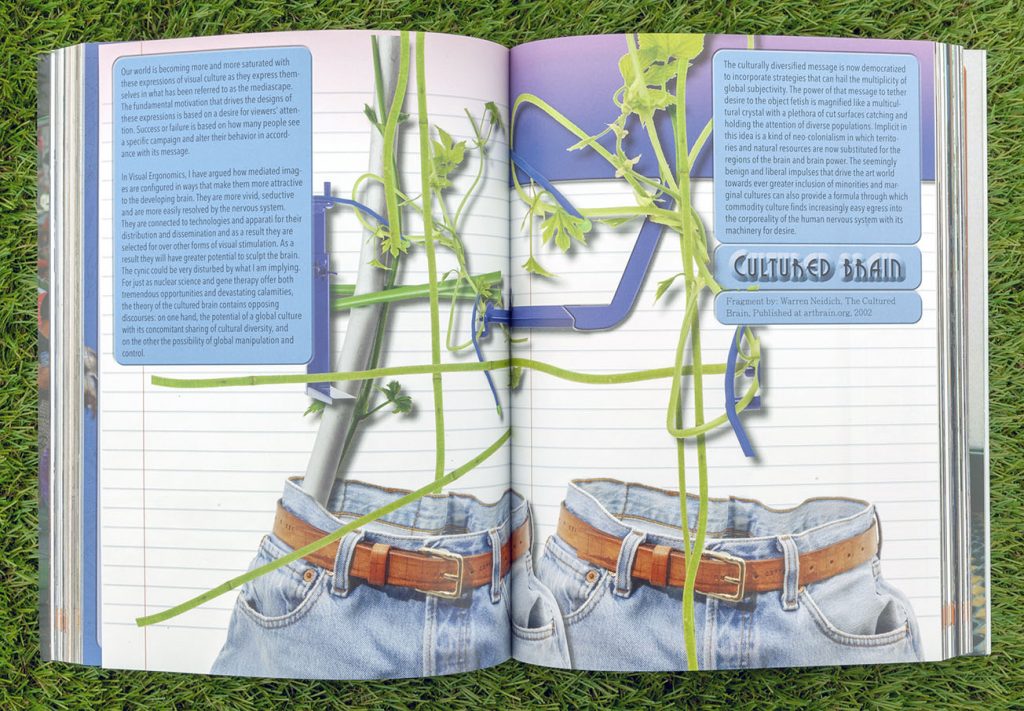
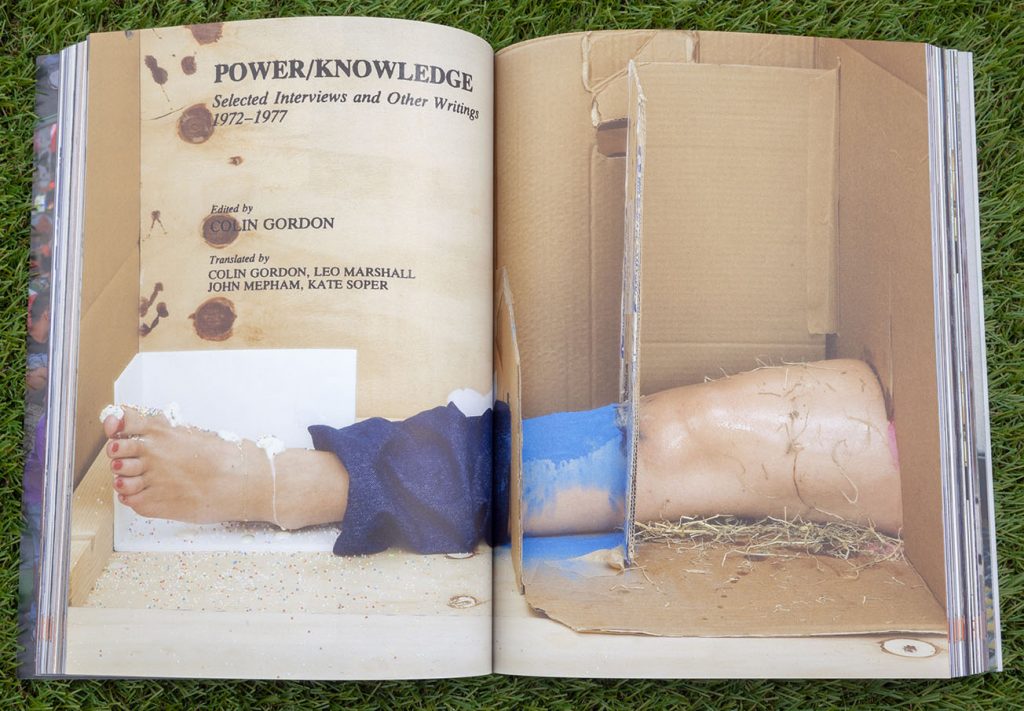

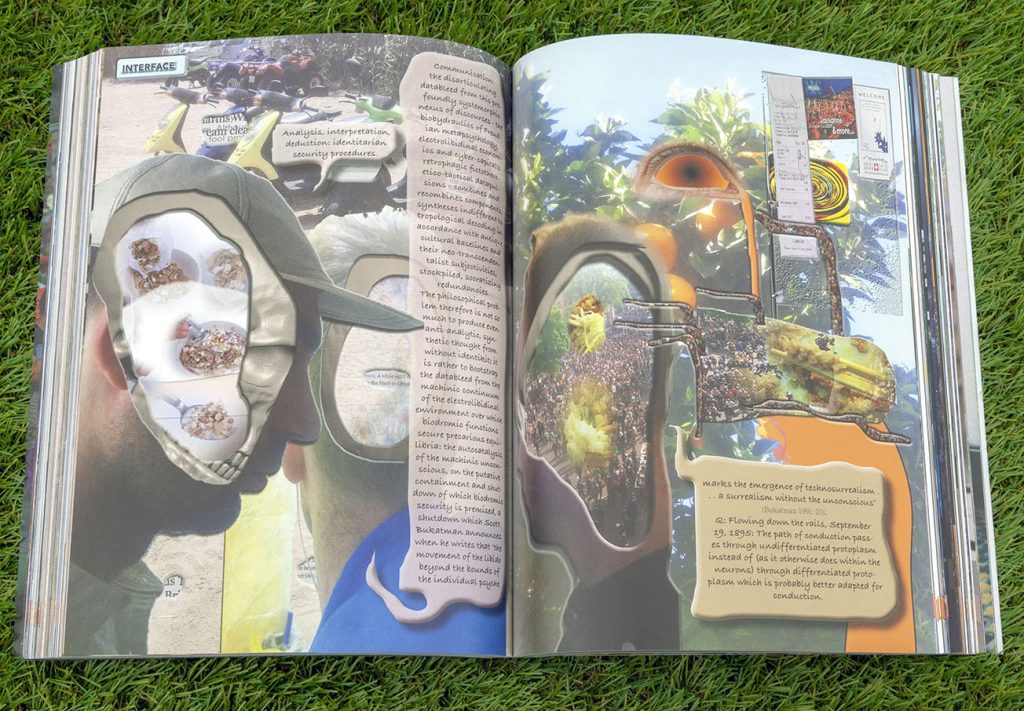




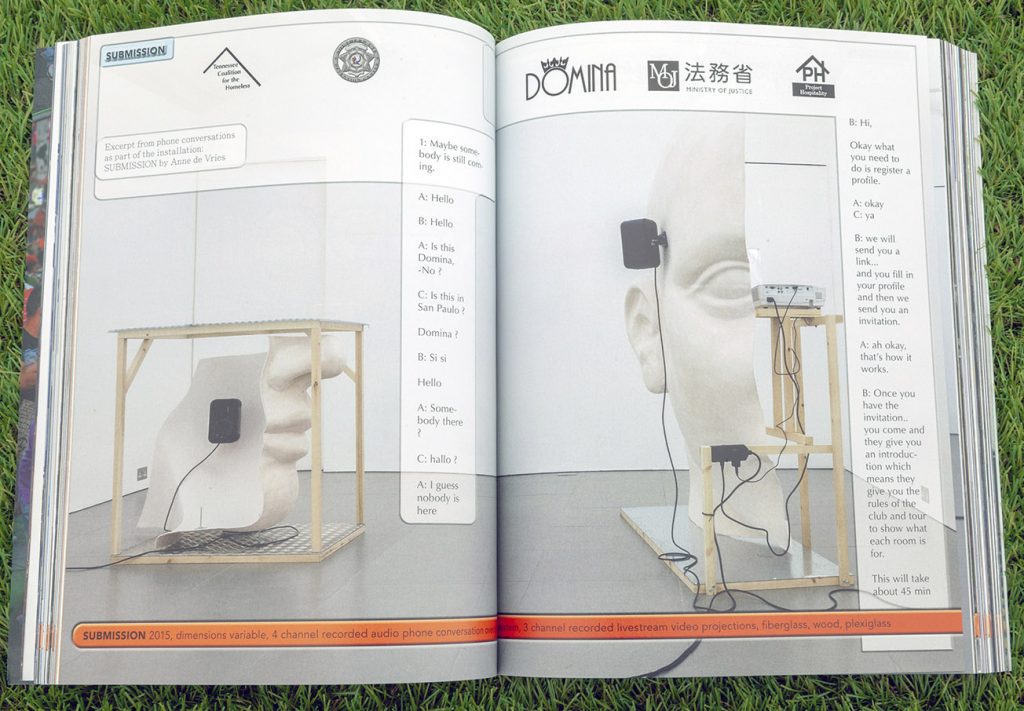
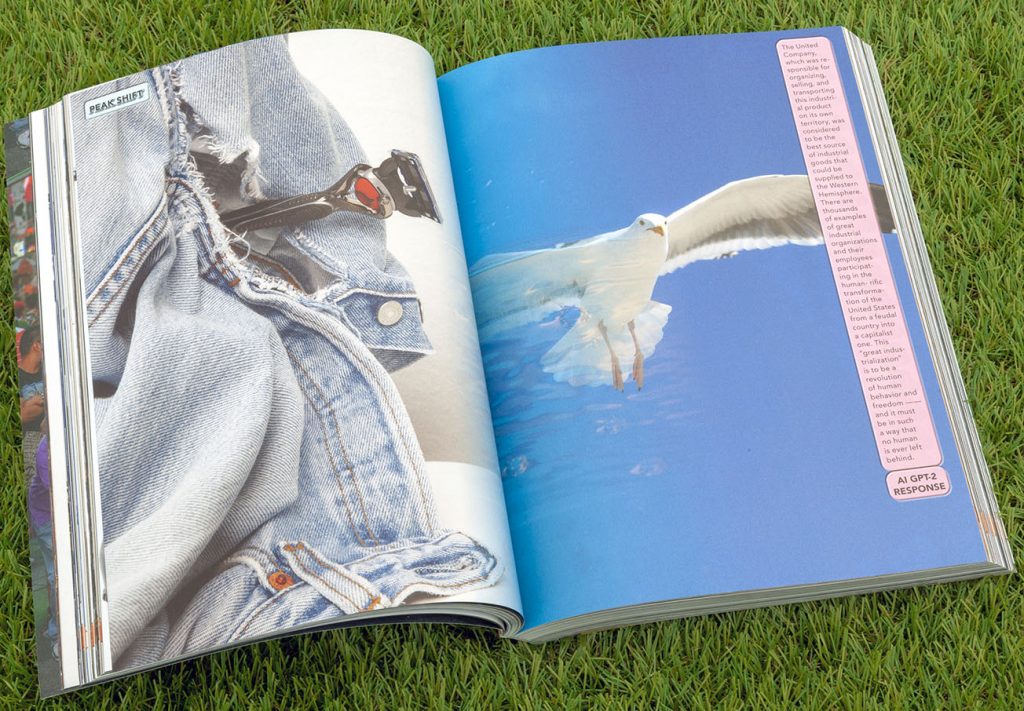

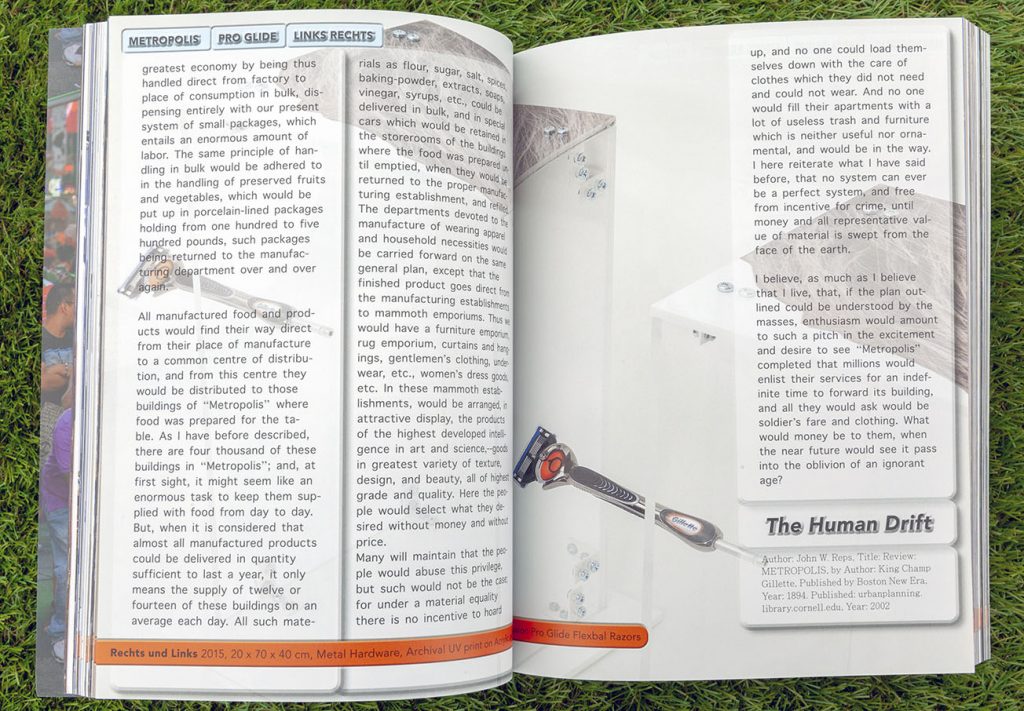




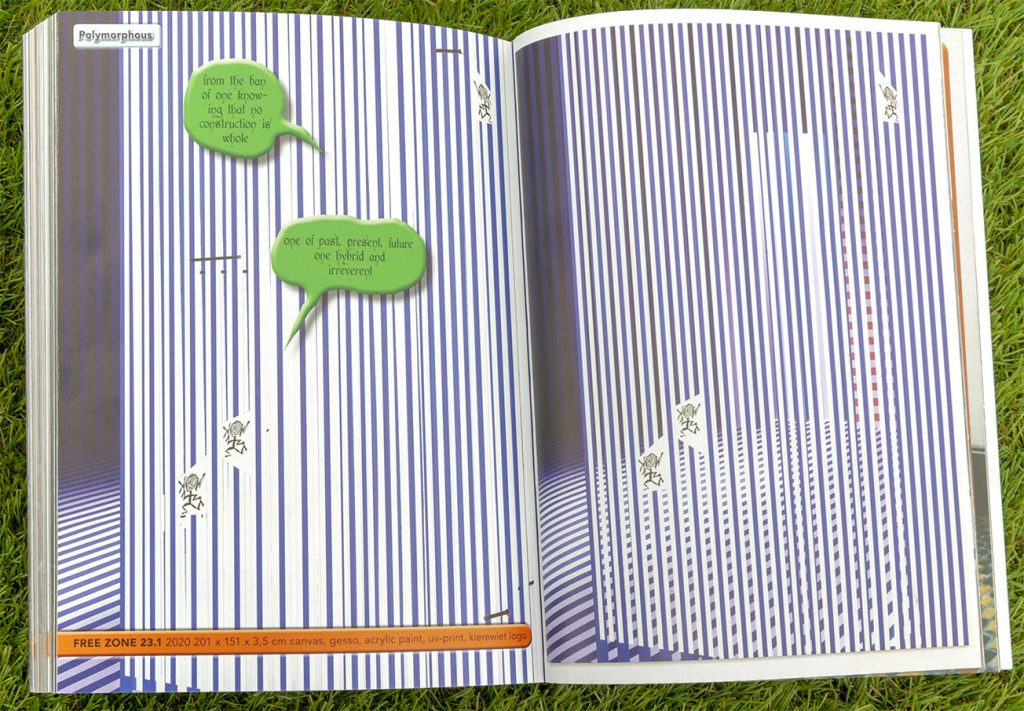
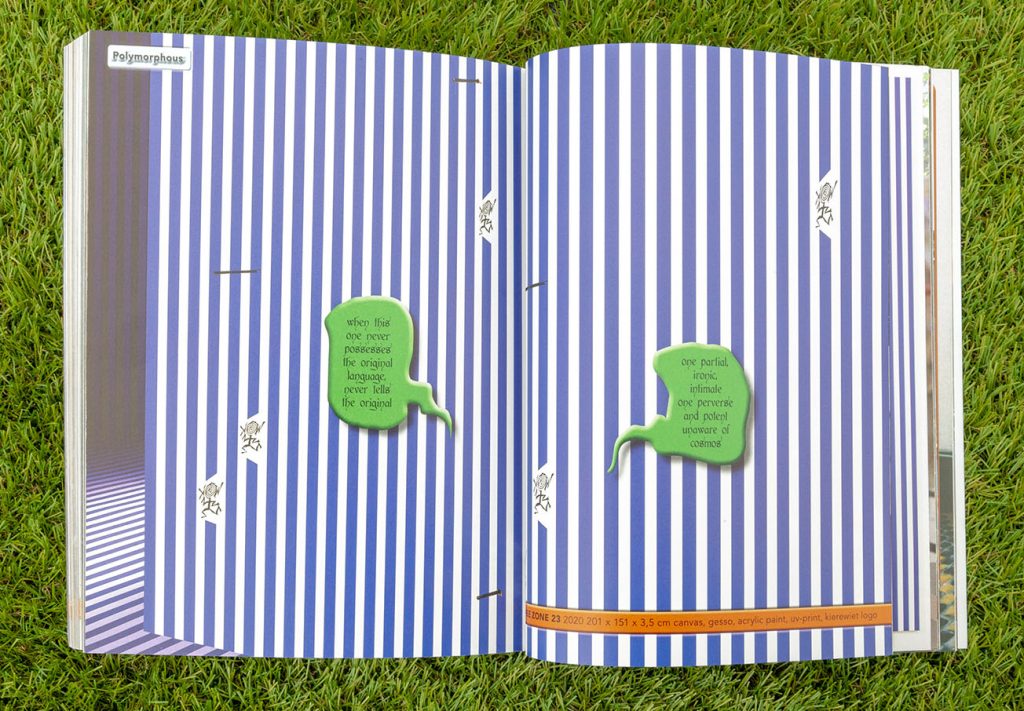


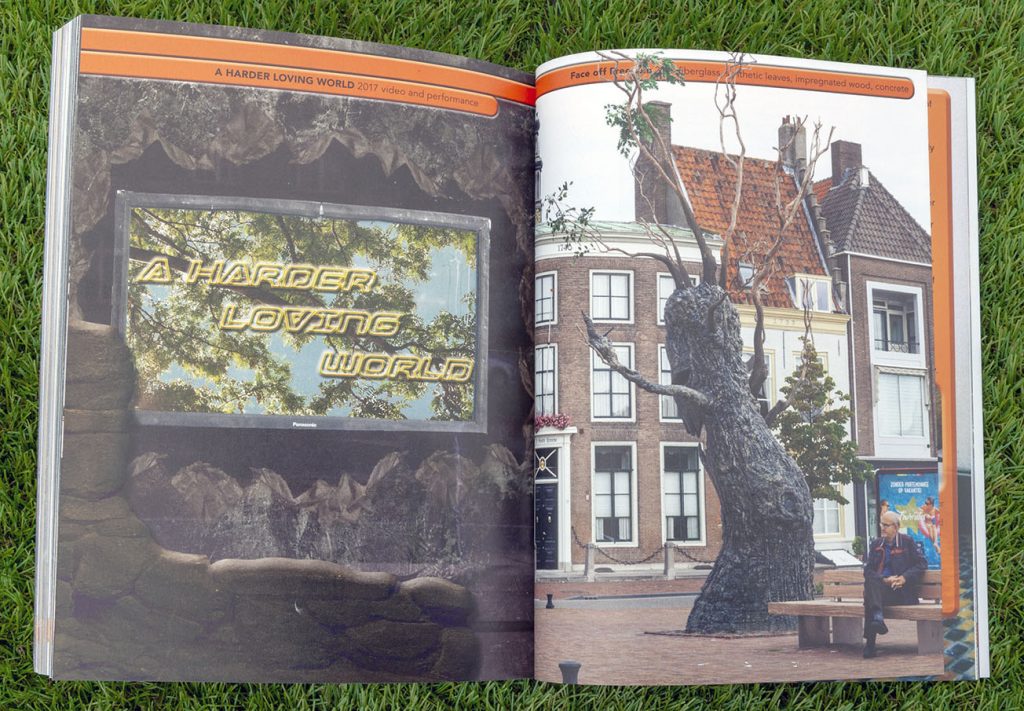

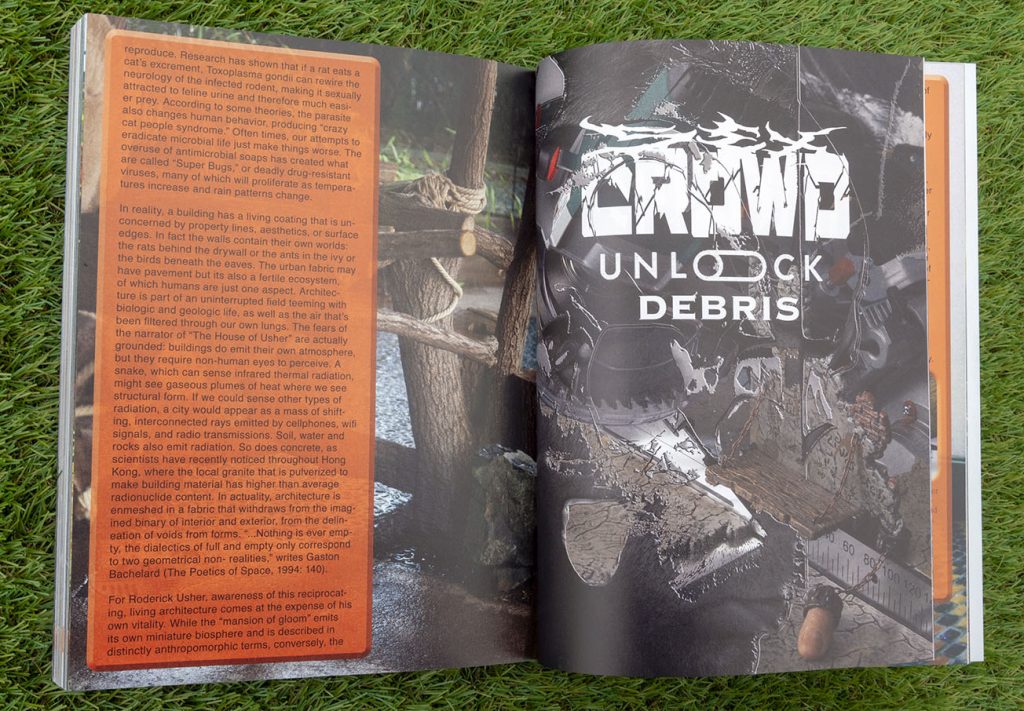
Title: Deep Scroll
Artist: Anne de Vries
Year: 2022
Format: 380-page artist publication
Publisher: Onomatopee
Produced in collaboration with: AISSystem and Onomatopee
About: Deep Scroll is a 380-page artist publication by Anne de Vries, produced in collaboration with AISSystem and Onomatopee. This first edition features contributions from a diverse group of artists, writers, philosophers, and theorists including:
Amelia Groom, Iain Hamilton Grant, Nicholas Korody, Theodore Gracyk, Gary Allen, Jesse Paul Crane-Seebach, Jenna Sutela, Alain Badiou, Ariella Aïsha Azoulay, Steve Goodman (Kode9), Robert Minto, Sarah Friend, Marcel Mrejen, Dorota Gawęda & Eglė Kulbokaitė, William Kherbek, Sam Jacob, among others.
The publication explores new modes of perception shaped by contemporary digital environments and media flows, engaging with both philosophical and aesthetic dimensions of networked culture, Instead of explaining concepts, Deep Scroll performs them. The concept of rhizomatic thinking (non-hierarchical, non-linear) is all over Deep Scroll. The book doesn’t “argue” in a traditional way, it sprawls.
Published by: Onomatopee Projects, Eindhoven
Supported by: Mondriaan Fonds
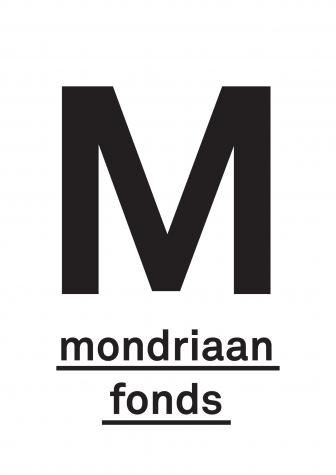


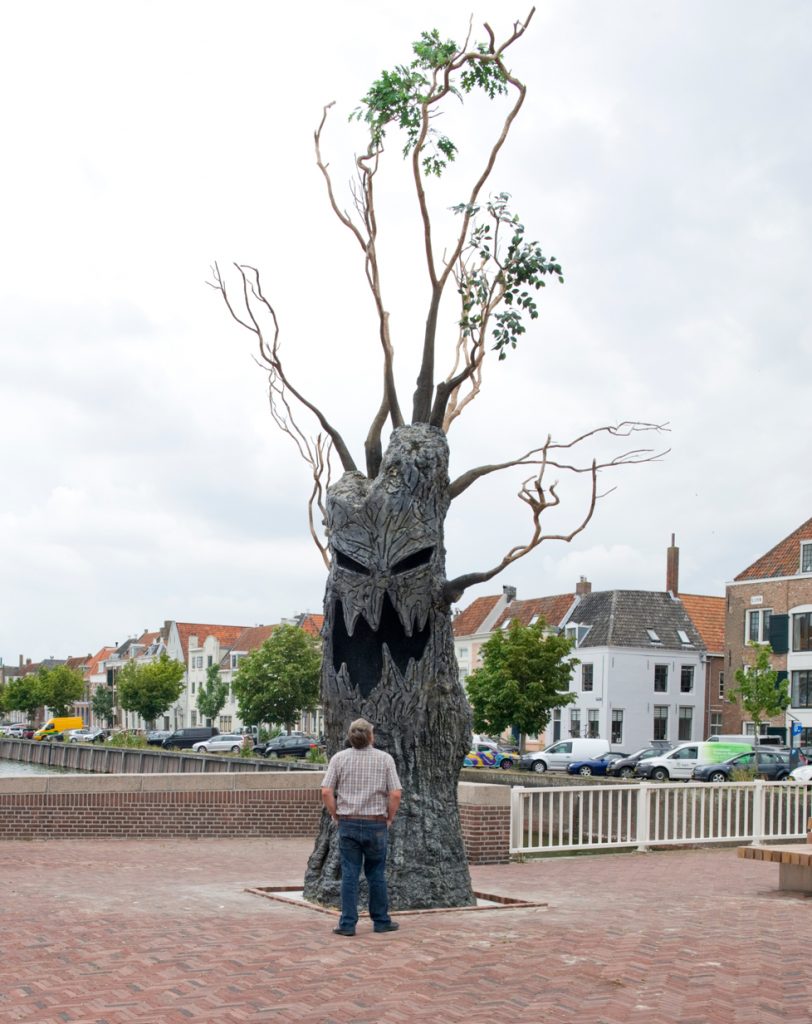


Title: FACE YOUR FREEDOM / SAVE THE WORLD
Artist: Anne de Vries
Year: 2017 – 2025
Dimensions: 800 cm tall
Exhibition views from:
FAÇADE 2017 — Middelburg, The Netherlands;
MOMENTUM 10 – Nordic Biennale 2019 — Norway;
Centraal Museum Utrecht 2020–21 — The Netherlands
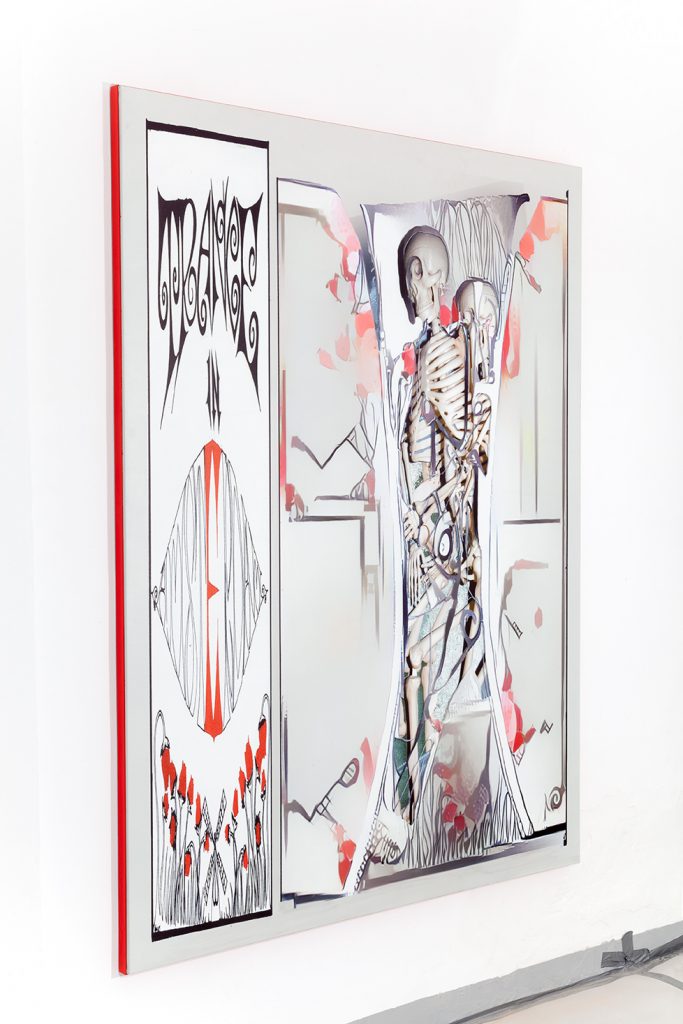

Title: Trance in Amsterdam – RETURNS
Artist: Anne de Vries
Year: 2020
Size: 201 x 151 x 3.5 cm
Materials: 380 g linen canvas, gesso, acrylic paint, oil paint, photography, AI-script, Epson UltraChrome K3 archival print, aluminum stretcher, aluminum artist frame with coating.









Title: Lost in Time, Tech and Space
Artist: Anne de Vries
Year: 2020
Dimensions: 480 x 160 x 145 cm
Materials: Hard foam, metal, aluminum, coating, high-duty robe.


Title: Détournement 023
Artist: Anne de Vries
Year: 2020
Dimensions: 79 x 59 x 1.4 inch / 201 x 151 x 3.5 cm
Material: Cotton canvas 380 g, gesso, acrylic paint, photography, kierewiet logo, UV-print, aluminum stretcher.
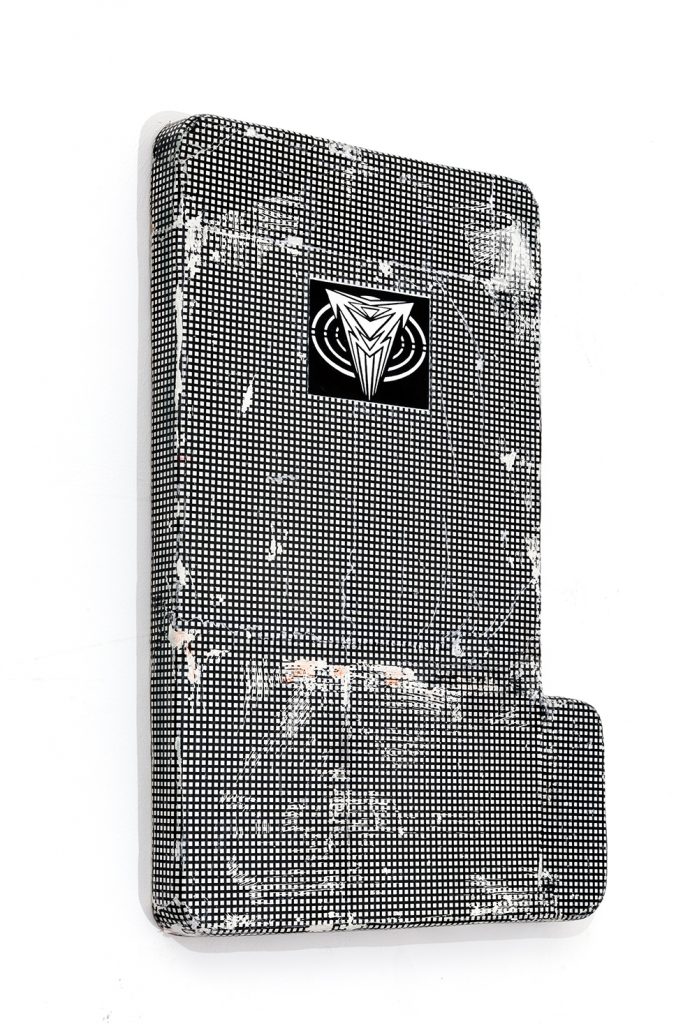

Title: T.A.Z.
Artist: Anne de Vries
Year: 2018
Dimensions: 85 x 56 x 5.5 cm / 33.5 x 22 x 2.2 inch
Materials: Chinese ink, acrylic paint, laser print transfer, gesso, narkotek logo, and hard polystyrene (XPS).
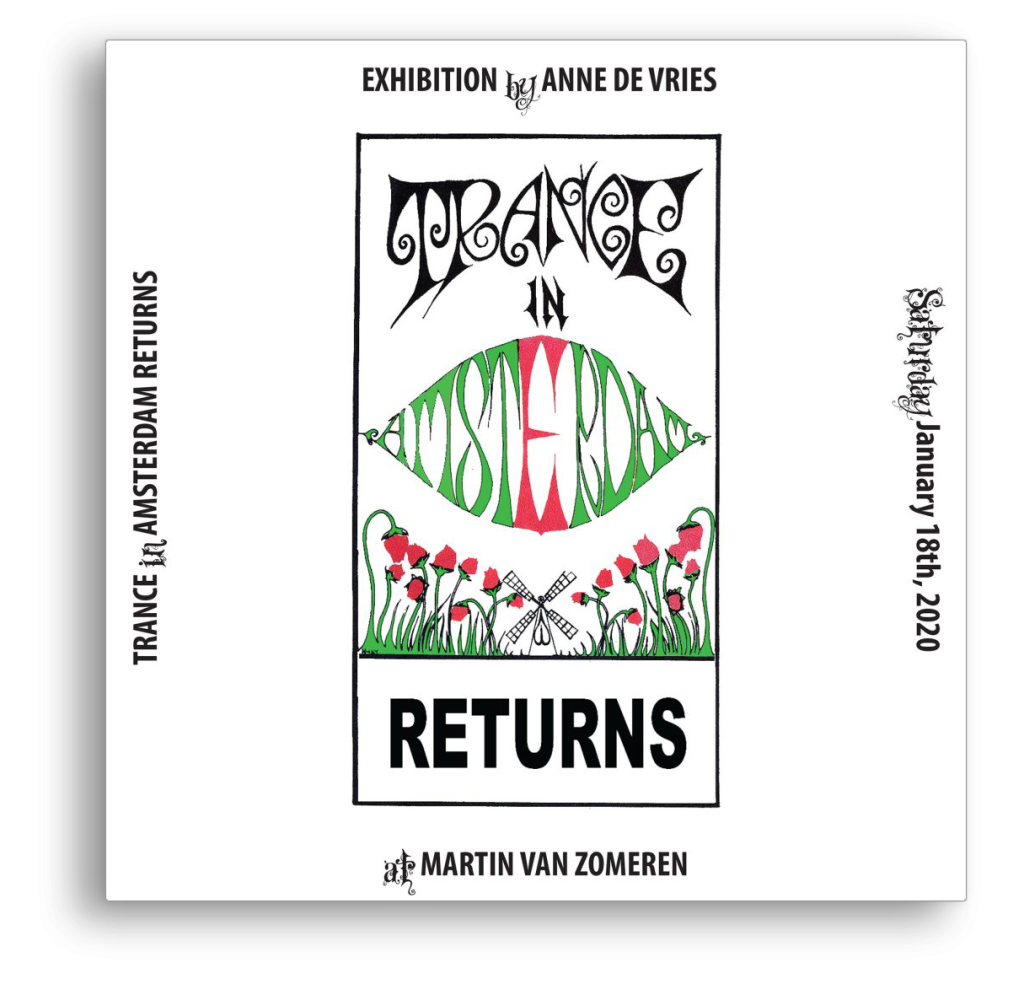
Invitation
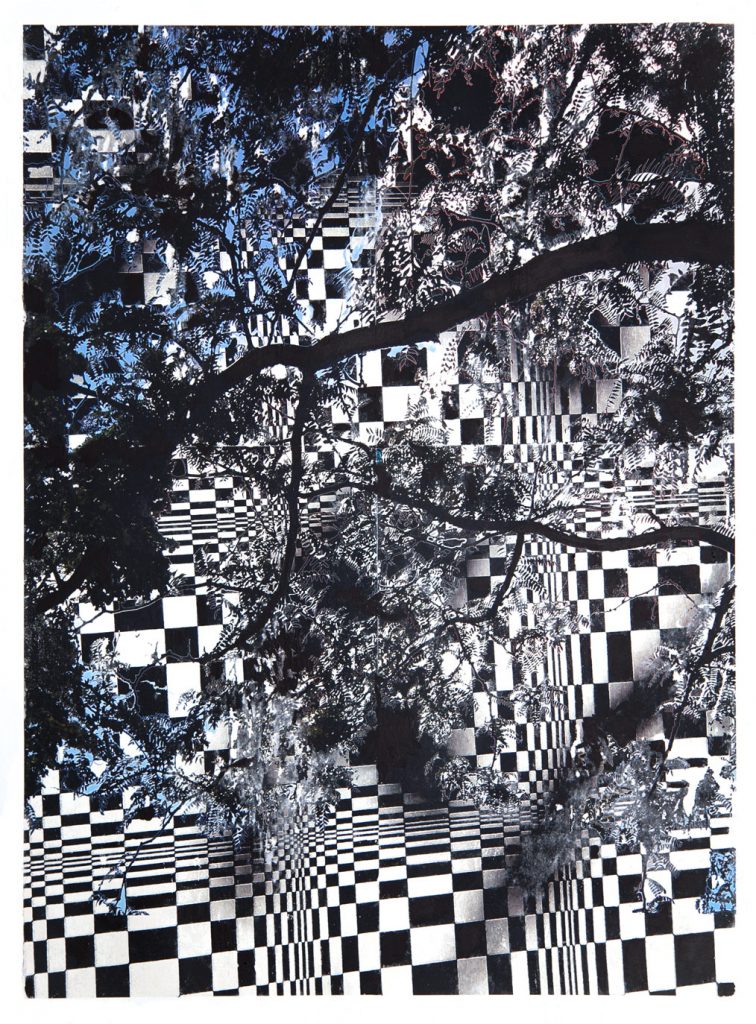
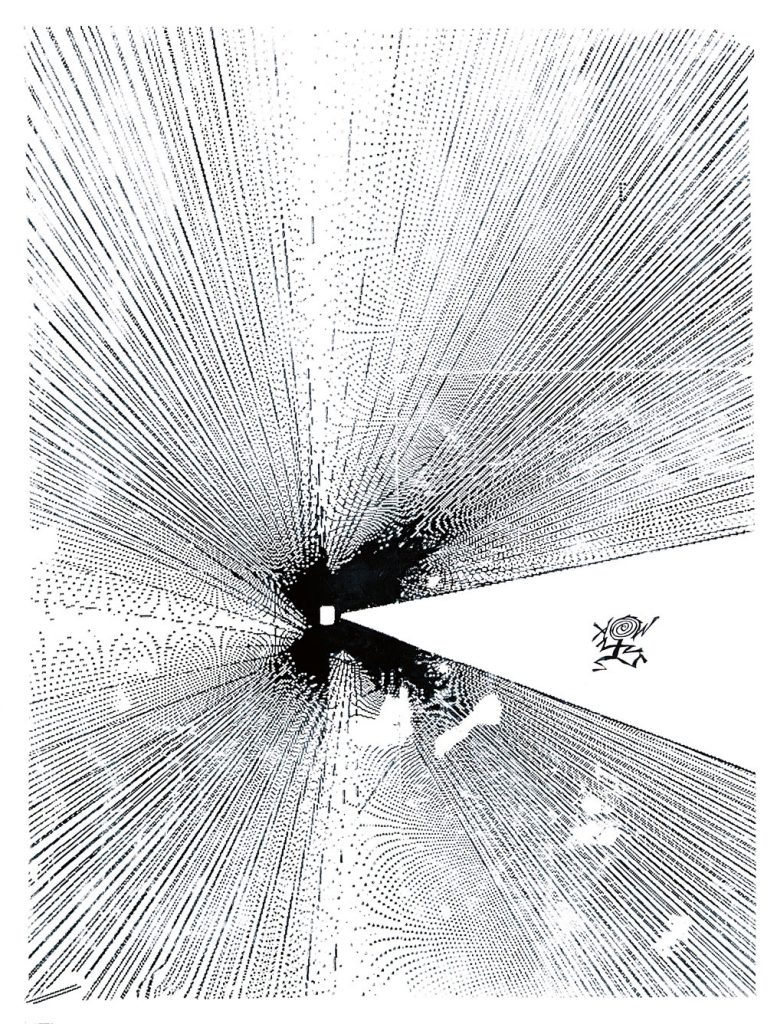
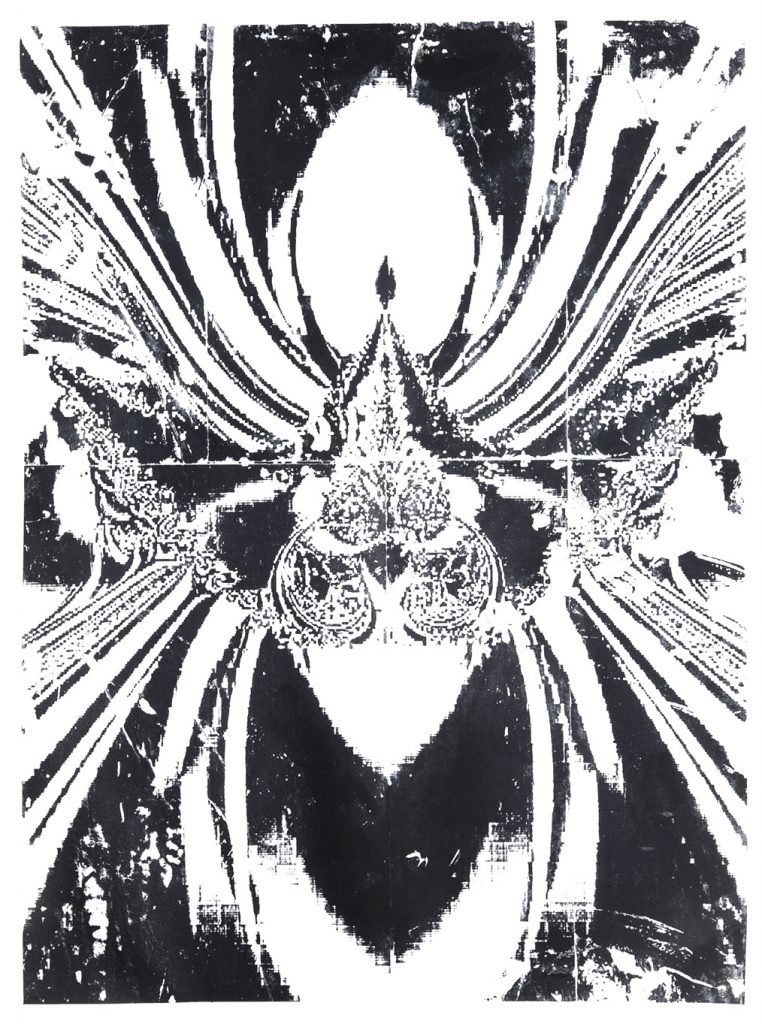
Title: KETENDER STUDIES B/W
Artist: Anne de Vries
Year: 2017
Dimensions: 760 x 560 mm
Materials: Works on 140 lb / 300 gsm Winsor & Newton watercolor paper.


Title: No Fear Deep Joy, Be Careful
Artist: Anne de Vries
Year: 2020
Dimensions: 153 x 80 x 7.5 cm
Materials: CNC-machined hard foam, coating, Deep Joy logo, nails.


Title: Windy
Artist: Anne de Vries
Year: 2020
Dimensions: 200 × 150 cm
Materials and Techniques: Linen canvas (380g), gesso, acrylic paint, UV print.
Includes a photograph of trees near the Chelsea Piers, visual elements from The Rat God by Richard Corben (specifically, hands), and a rendered image of a Paris apartment by Bertrand Benoit. Mounted in an oakwood artist frame.


Title: Anarchy in the Hive Mind
Artist: Anne de Vries
Year: 2020
Dimensions: 191 × 141 × 4.5 cm
Materials and Techniques: Linen canvas (380g), gesso, photographic imagery of flowers, cartoon bees and hornets, CGI, UV print.
Mounted on a double wooden stretcher with an aluminum artist’s frame.









Title: Lost in Time, Tech and Space
Artist: Anne de Vries
Year: 2018
Material: steel, polyethylene, coating.
Dimensions: 598 x 134 x 125 cm
Documentation from: ‘Hybrids‘ curated by Chris Driessen & David Jablonowski at Lustwarande in Tilburg, The Netherlands

Title: Campaign Tech 2016
Artist: Anne de Vries
Year: 2017
Materials: acrylic paint, UV-print on PVC, aluminum truss system



Title: Salsa
Artists: Anne de Vries and Alberto De Michele
Year: 1999
Dimensions: Variable
Materials: Dancefloor with a sound sequence, and 5,000 packages of Mustard, Duck, and Soy Sauce placed on the floor to walk and dance on.
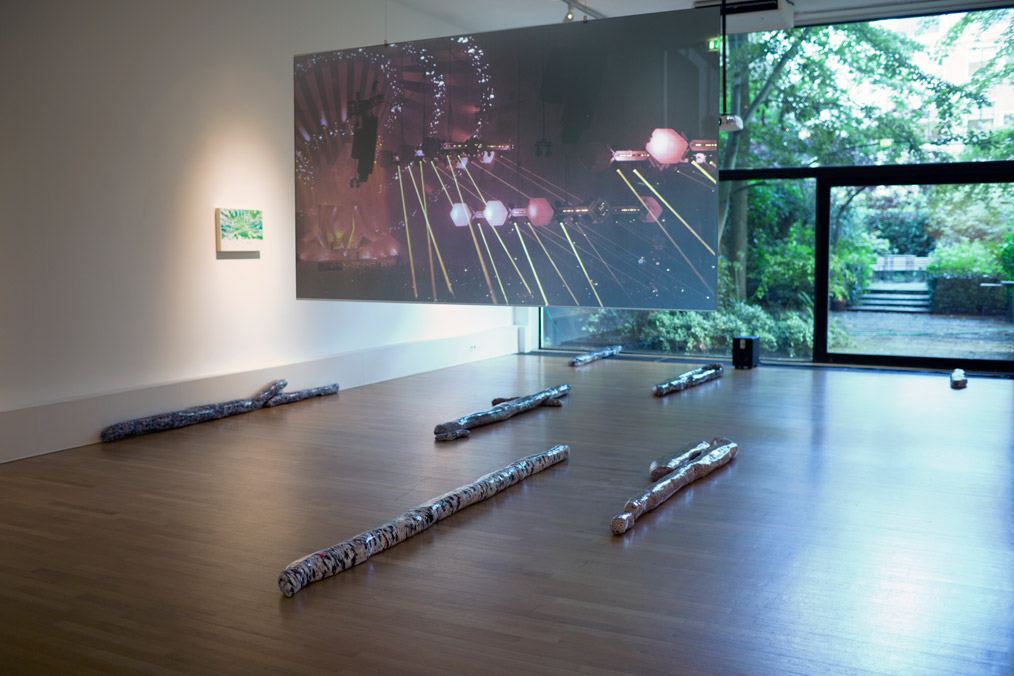

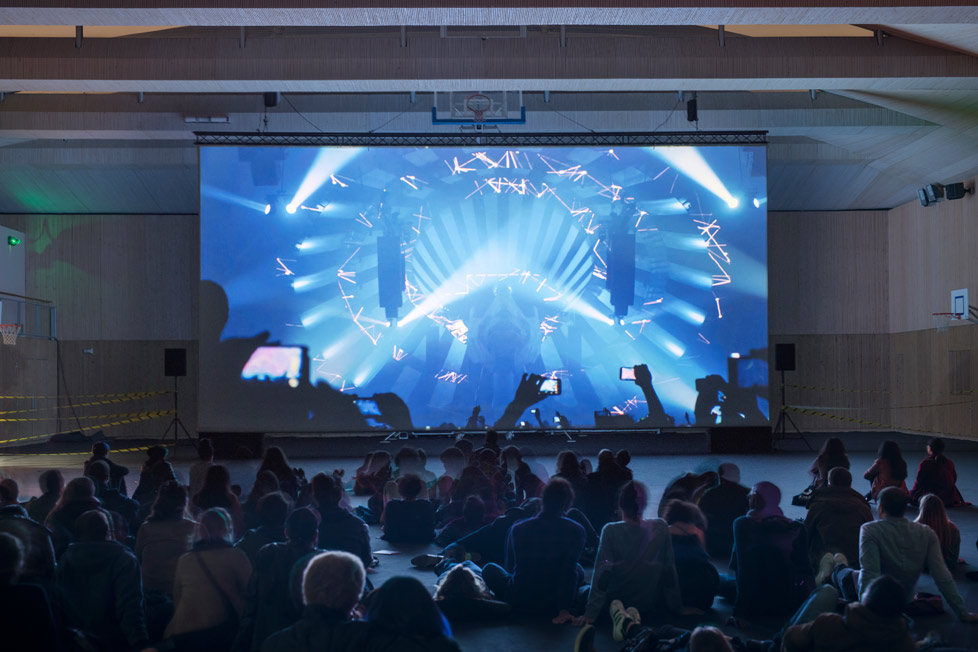

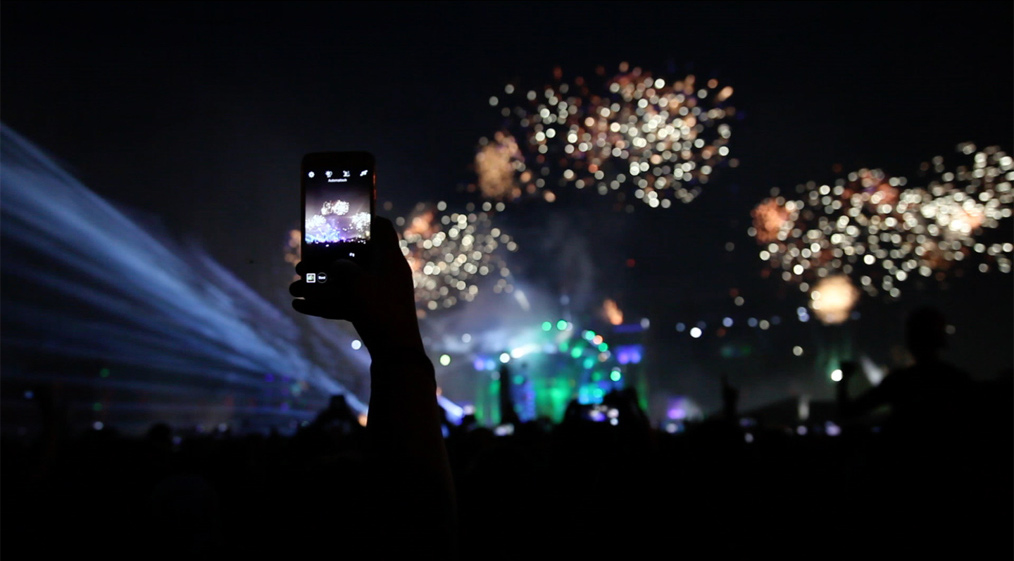
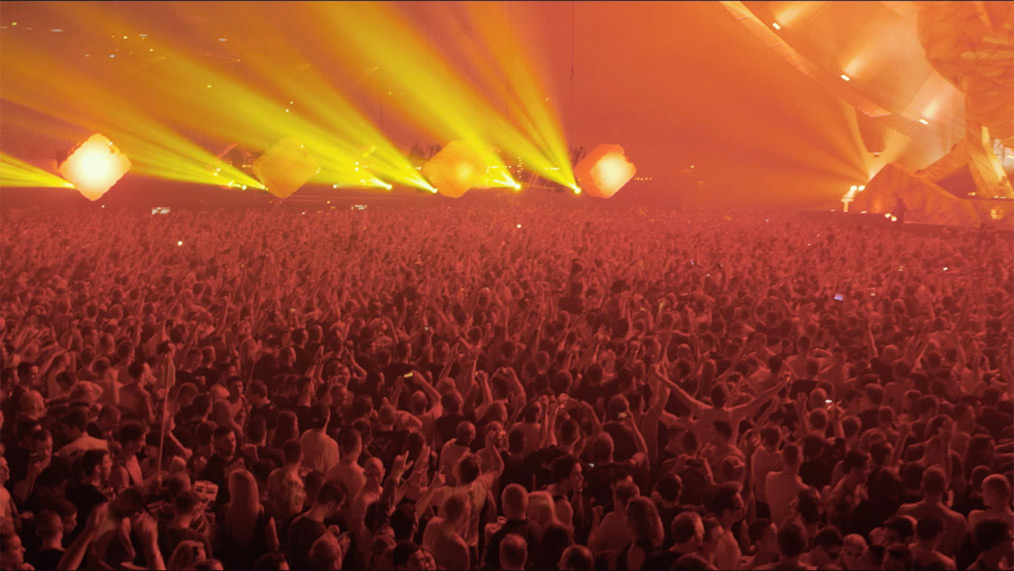






Title: Critical Mass: Pure Immanence
Artist: Anne de Vries
Year: 2015
Video: Full HD with stereo sound
Screen dimensions: 300 x 135 cm
Duration: 11-minute loop
Camera, video editing, lyrics, and music arrangement by:
Anne de Vries and Q-dance, including AquaDome, LPIN-AX, Phill Niblock, Thomas Ankersmit, and others.
Video stills and documentation from:
the 9th Berlin Biennale, KW Institute for Contemporary Art, Nuit Blanche Paris, Cell Projects London, Fries Museum, and Foam Museum.
Flash Art Magazine: Issue 311 “Transformation Through Depoliticization” by Anne de Vries, 2016, ONLINE/PRINT/PDF
Cover artist: Anne de Vries
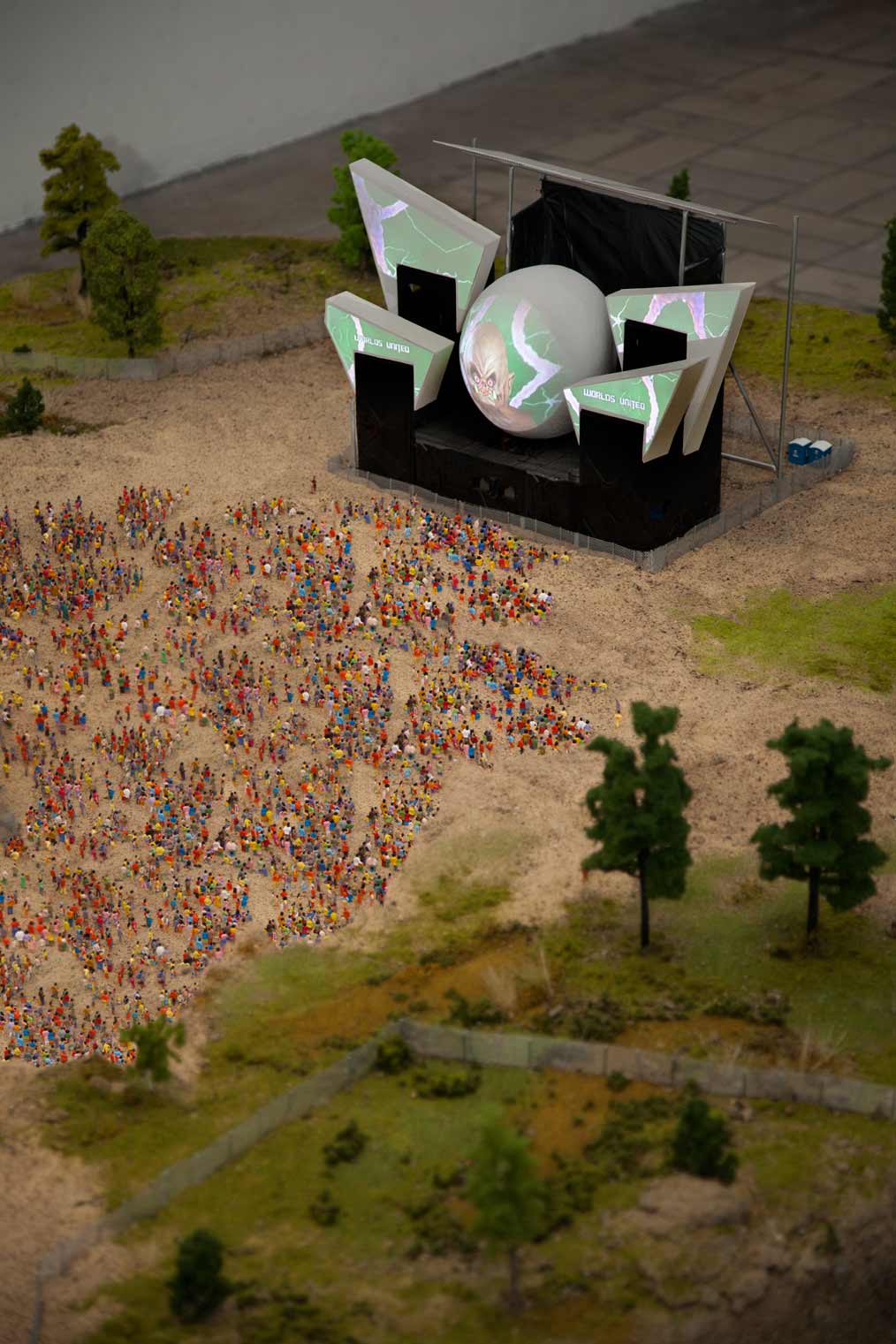
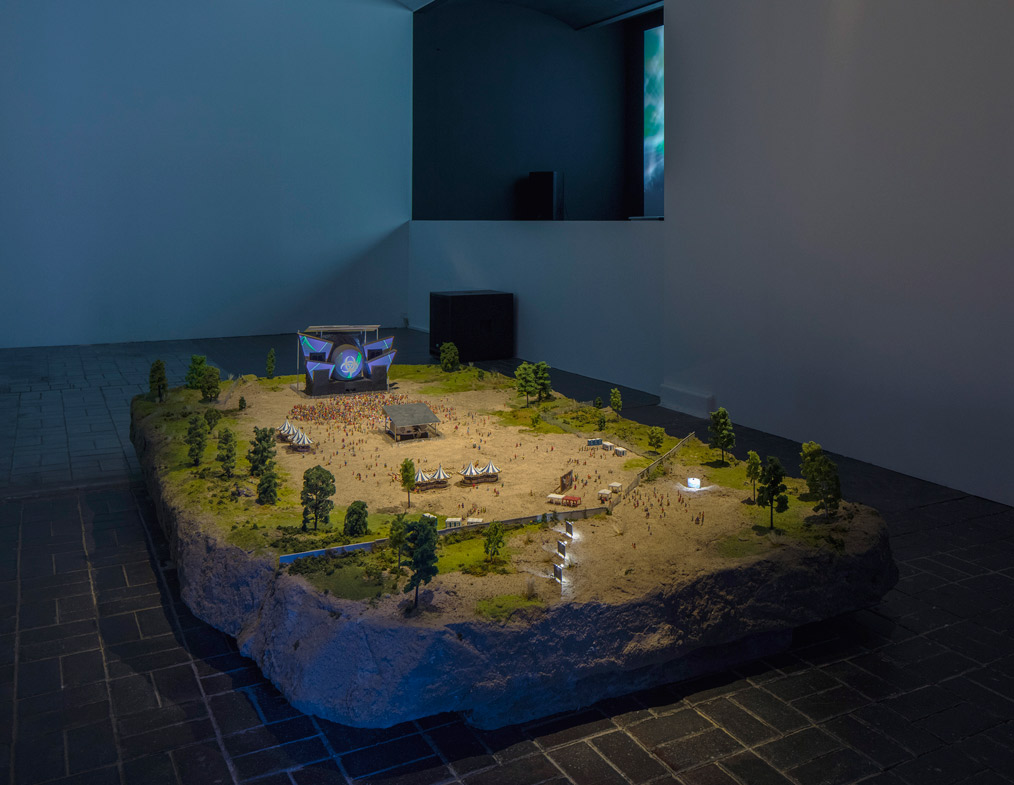
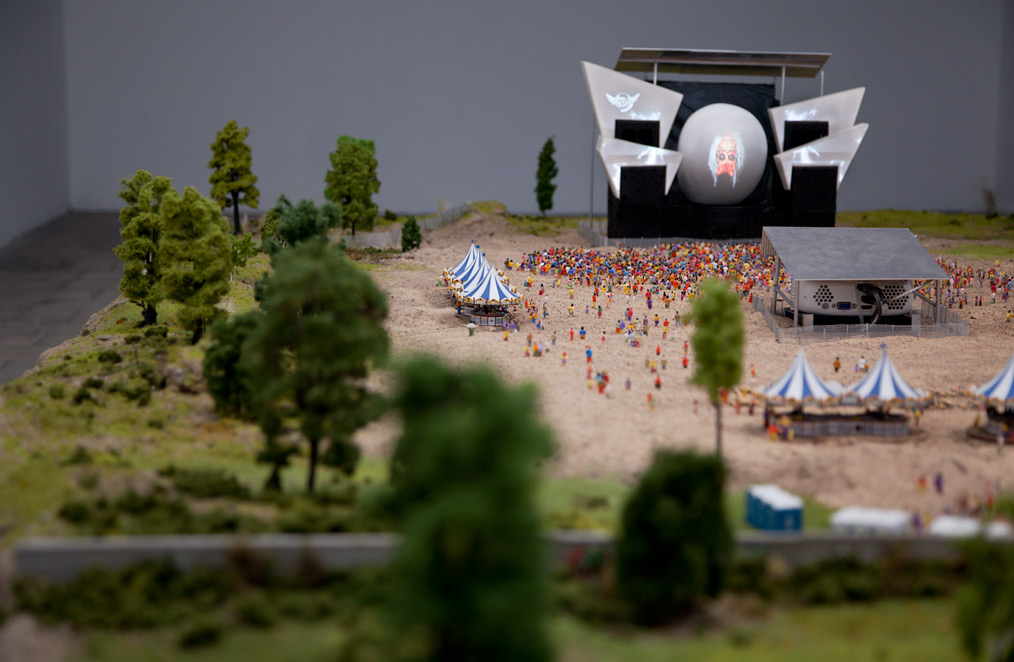
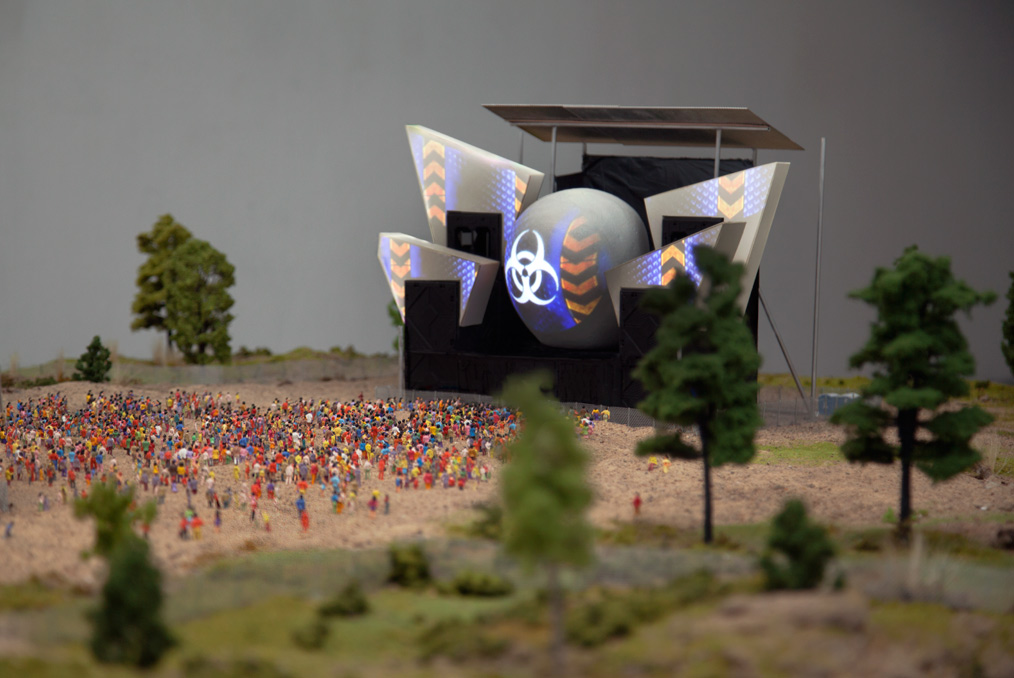
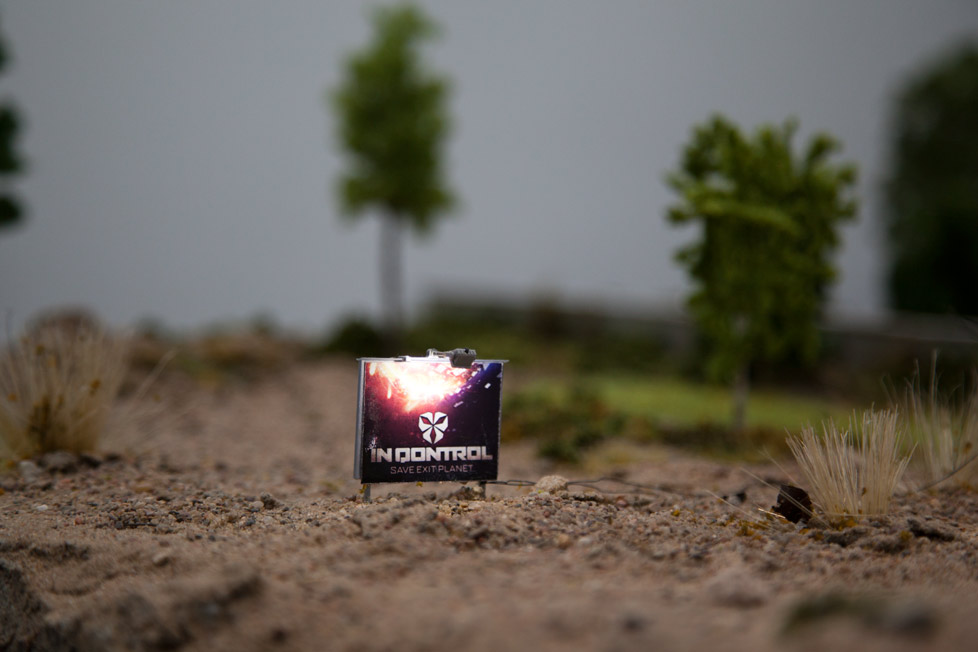
Title: Oblivion
Artist: Anne de Vries
Year: 2016 and 2018
Dimensions: 380 x 200 x 60 cm
Materials: Sand, stones, wood, plastic, aluminum, paint, PVA, styrofoam, miniature advertisement campaign, miniature graffiti, miniature truss system, miniature LED projector, miniature Hi-Fi system.
About:
Oblivion is a hardstyle event diorama at a scale of 1:87, featuring several texts produced specifically for this installation.
Exhibition views from:
The 9th Berlin Biennale at KW in Berlin; Fries Museum in Groningen; KUMU Museum in Tallinn.
Read more about this project HERE in Flash Art Magazine.
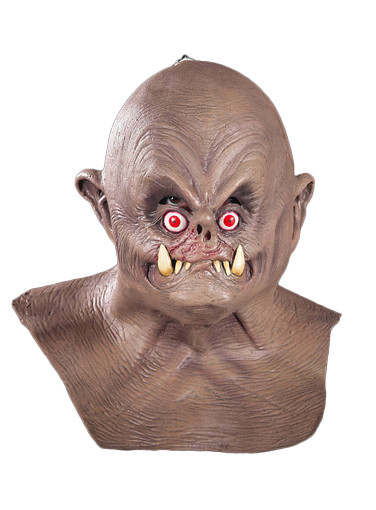

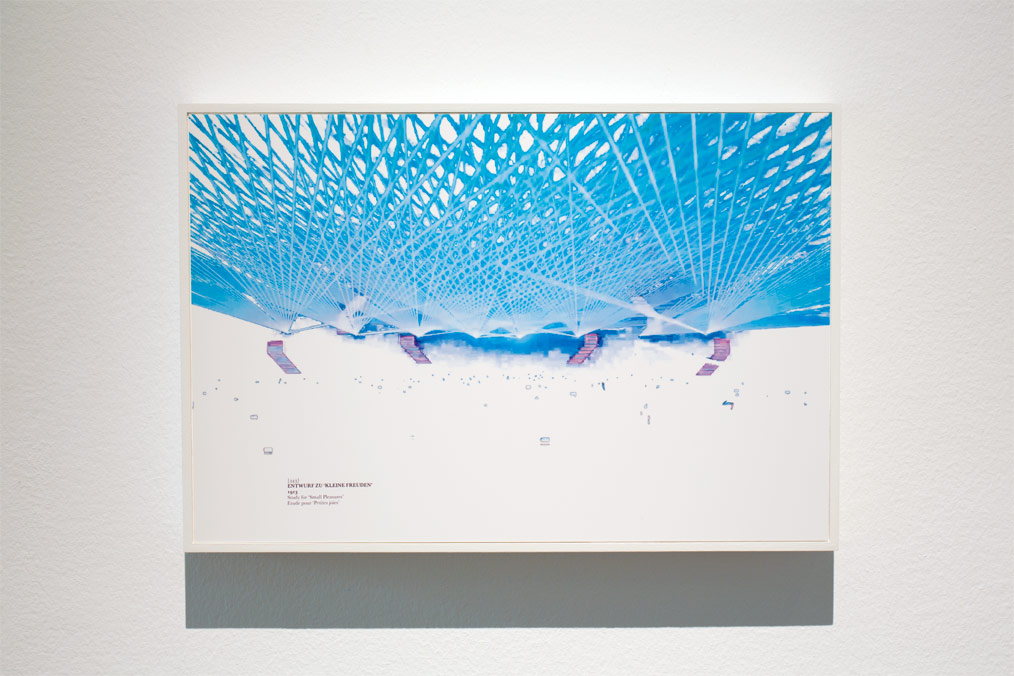


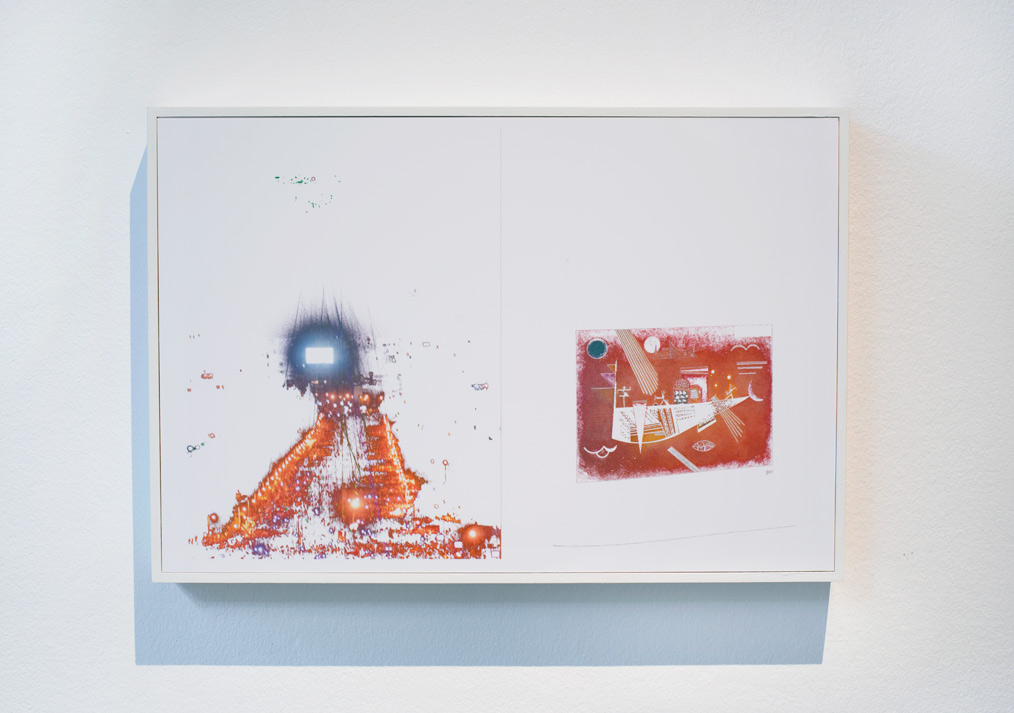


Title: Entwurf zu ‘kleine Freude’ / Étude pour ‘Petites joies’
Artist: Anne de Vries
Year: 2015
Dimensions: 517 × 347 × 50 mm
Edition: Unique, signed
Materials: Archival UV print on Photo Forex, wooden frame with acrylic paint
Techniques: Digital collage combining photographs taken by the artist at various crowd gatherings with laser light shows, and visual elements from works by Wassily Kandinsky.
The title references Kandinsky’s compositions and writings on the relationship between people, music, and color.

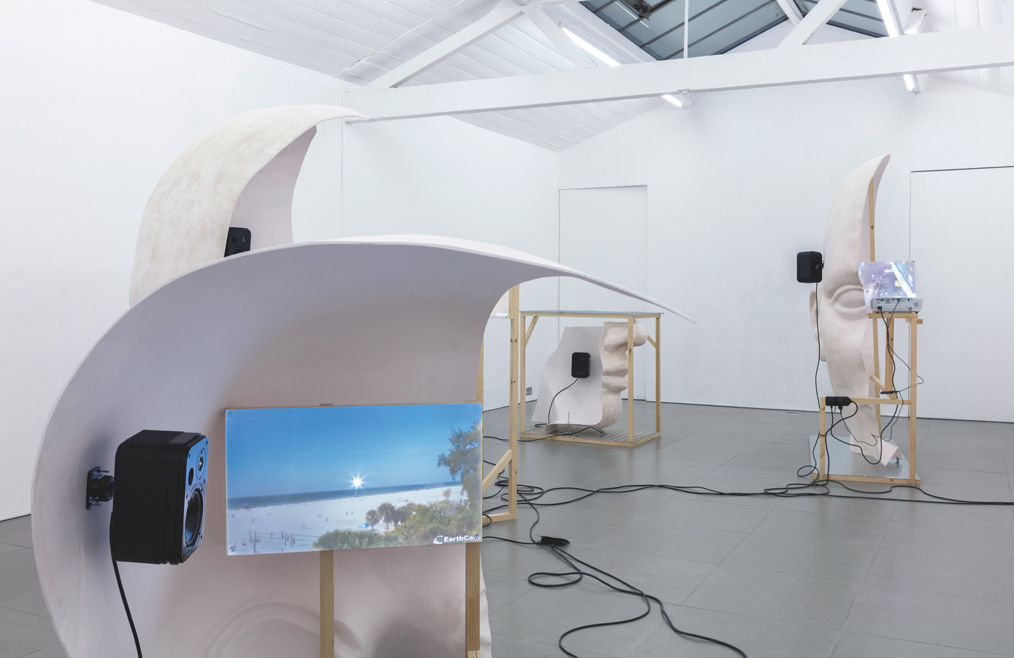
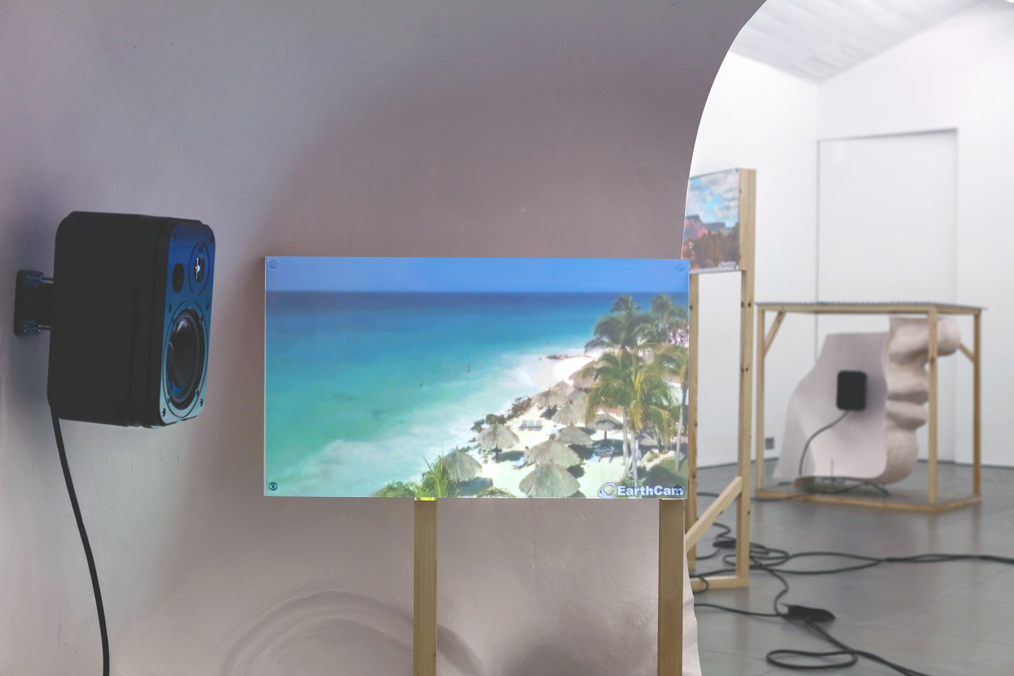
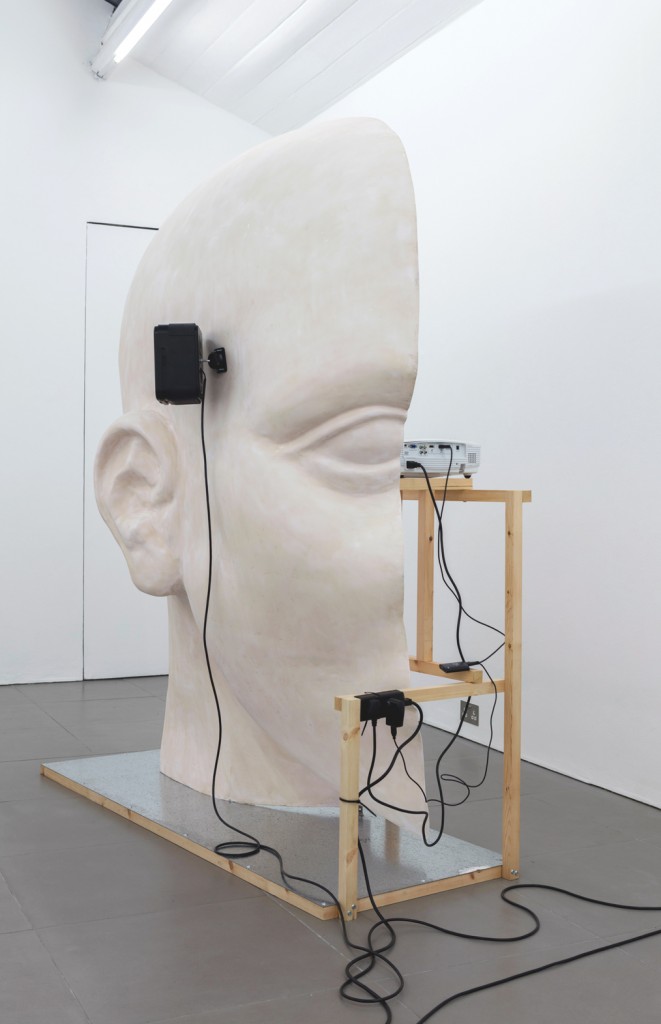



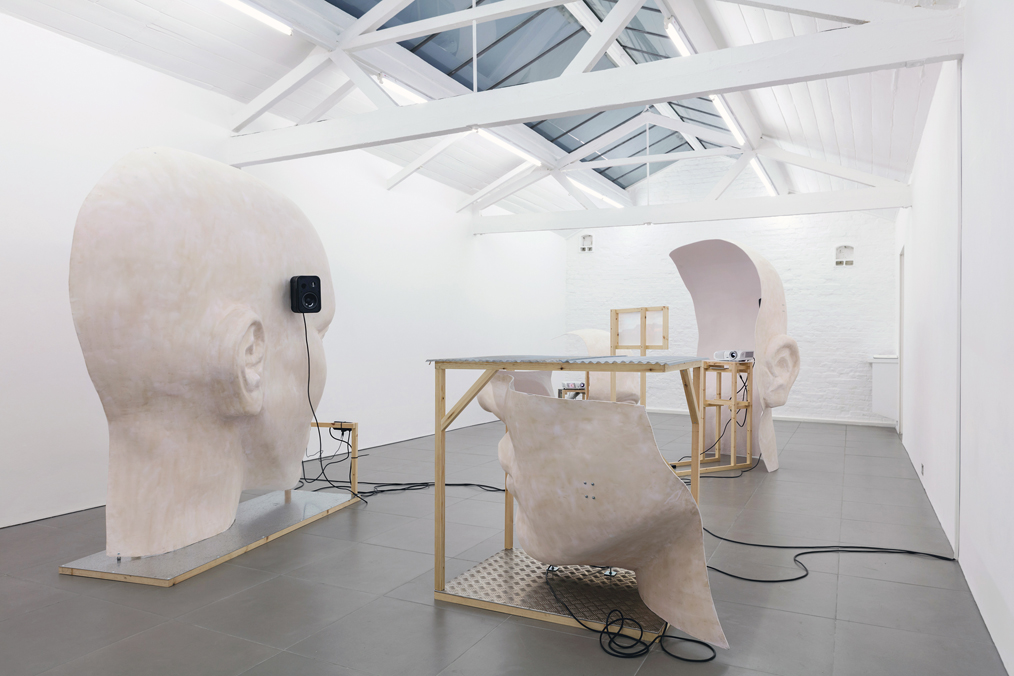



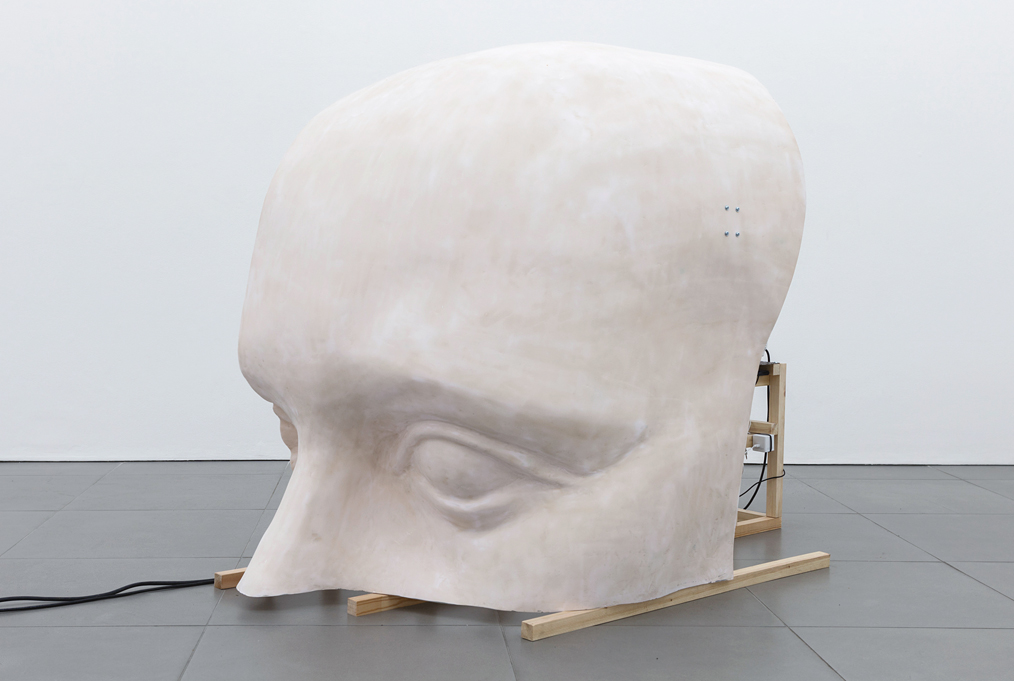


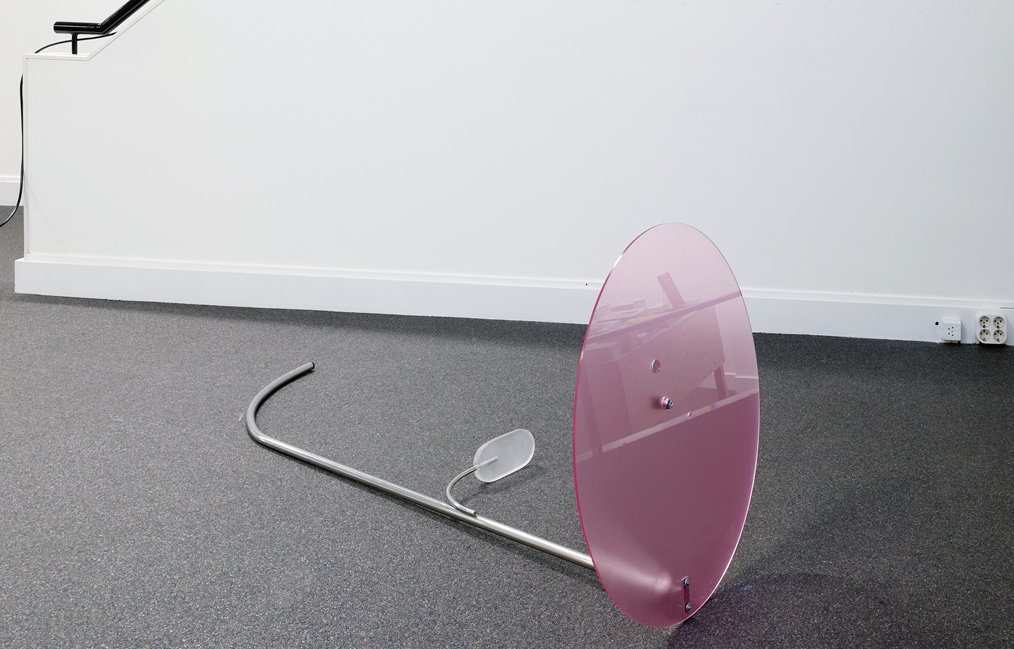
Title: Submission
Artist: Anne de Vries
Year: 2015
Dimensions: Variable
Materials: 4-track audio, video live streams, fiberglass, wood
About:
Inside the first gallery, Submission pulls together threads of the human psyche by exploding the concept of a head into a variety of architectural structures and symbolic representations—paired with the very technologies we use to stimulate thought and communication. Live-streamed screens of global locations transport viewers from the bustling streets of Times Square, New York City to the tranquil stillness of a South American birdwatching site. Time zones shift to accommodate the viewer’s perception of presence.
Each makeshift architectural shelter contains conversations between a mediator—commissioned by the artist—and representatives from a range of disparate global institutions: monasteries, shelters, detention centers, swingers clubs, and meditation retreats. Through interviews that explore each institution’s philosophy and mission, a layered soundscape emerges. The resulting audio simulates overlapping codes, rituals, and beliefs that begin to blend into one unified sonic texture.
Technology assumes an anthropomorphic form, and the dialogue reveals the merging of psychological, institutional, and technological environments. Language fragments into AI-like loops, suggesting the human mind as both subject and extension of the automated tools it creates.
Exhibition views from:
Solo exhibition Submission at Cell Project Space, London
Solo exhibition Public Cortex at Onomatopee, Eindhoven
Hybrid Layers at ZKM | Center for Art and Media, Karlsruhe

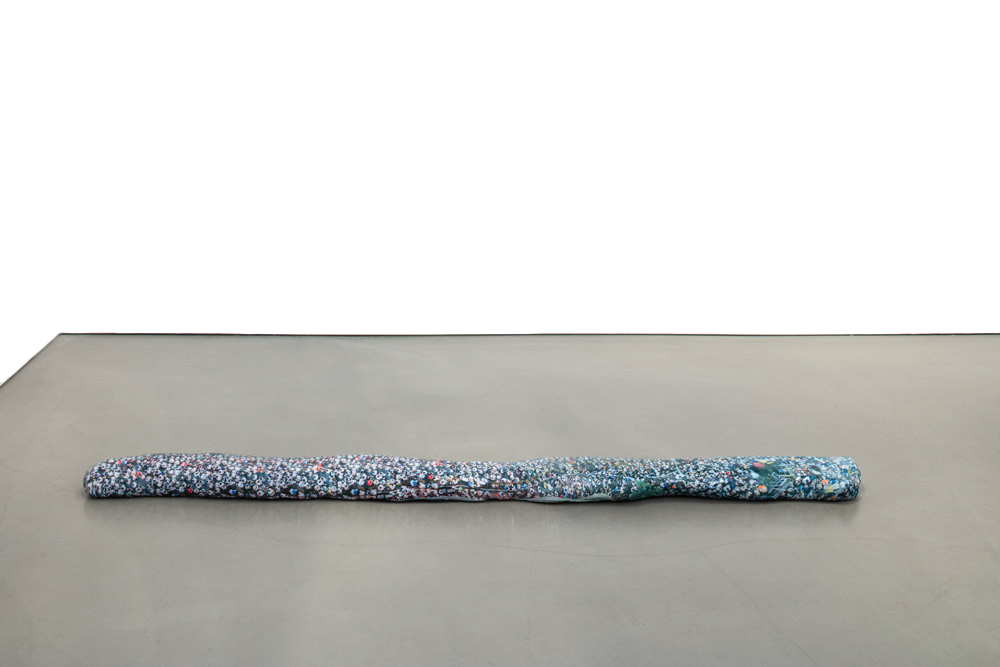









Title: Boids
Artist: Anne de Vries
Year: 2015
Dimensions: Various
Materials: Polystyrene with UV print on vinyl wrap
Subject Matter:
Composed of photographic imagery from a range of social, political, and religious gatherings, including:
Conceptual Background:
Before feathers enabled flight, they first evolved in dinosaurs for terrestrial functions—such as thermal regulation, camouflage, or signaling. Over geological timescales, these structures were co-opted into entirely new uses, eventually granting birds the power of flight. In evolutionary biology, this phenomenon is known as exaptation: a trait originally evolved for one purpose that is later repurposed for another.
Recent computational models of E. coli suggest that many traits begin as exaptations. This concept counters deterministic views of biology, emphasizing instead contingency and transformation. If forms and functions in nature can be radically retooled—enabling creatures to fly over mountains or swim through oceans—it is because matter itself is inherently open, mutable, and devoid of fixed essence.
The world is constantly reconfiguring itself. Structures we see today may serve vastly different purposes tomorrow. Each moment offers a new configuration—dependent, impermanent, and full of latent potential. The artworks in Boids engage with this idea: that form, function, and meaning are fluid, and that the universe, like the self, is continually becoming.
Installation views from E_MERGE at Foam Museum, Amsterdam and ‘Asdzáá nádleehé‘ curated by Timur Si-Qin at Andrea Rosen Gallery, New York





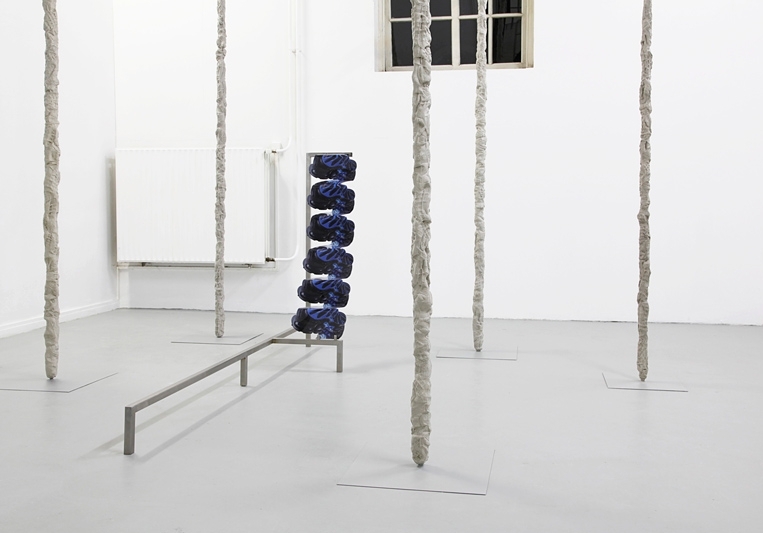

Photo by Andrea Rossetti
Title: Trails Rising
Artist: Anne de Vries
Year: 2011
Dimensions: Variable, from 223 cm up to 12 meters high
Materials: Plastic, sand, metal
About:
The sculpted totem poles Trails Rising are composed of sand mixed with epoxy clay, marked by the tread patterns of various sneakers. These imprints—shaped by ergonomic footwear designed to enhance bodily performance—form a record of movement that merges into collective patterns across a mutable surface. The work evokes a sense of shared motion, as if solitary runners converge in a symbolic and physical ascent.
Referencing Constantin Brancusi’s Infinite Column—a WWI memorial in Târgu Jiu symbolizing ascension—the installation reinterprets monumentality through a layered, process-driven lens, challenging essentialist ideas of transcendence and enhancement.
Exhibition views from:
Sandy Brown, Berlin
Éric Hussenot, Paris
Fluxia, Milano
The Composing Rooms, London
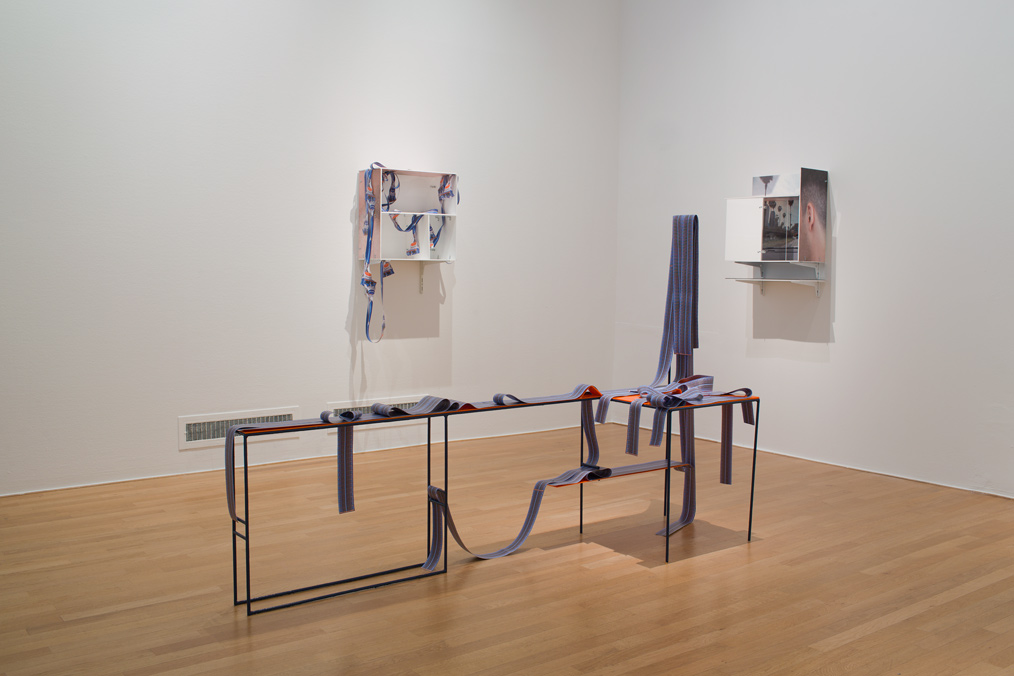








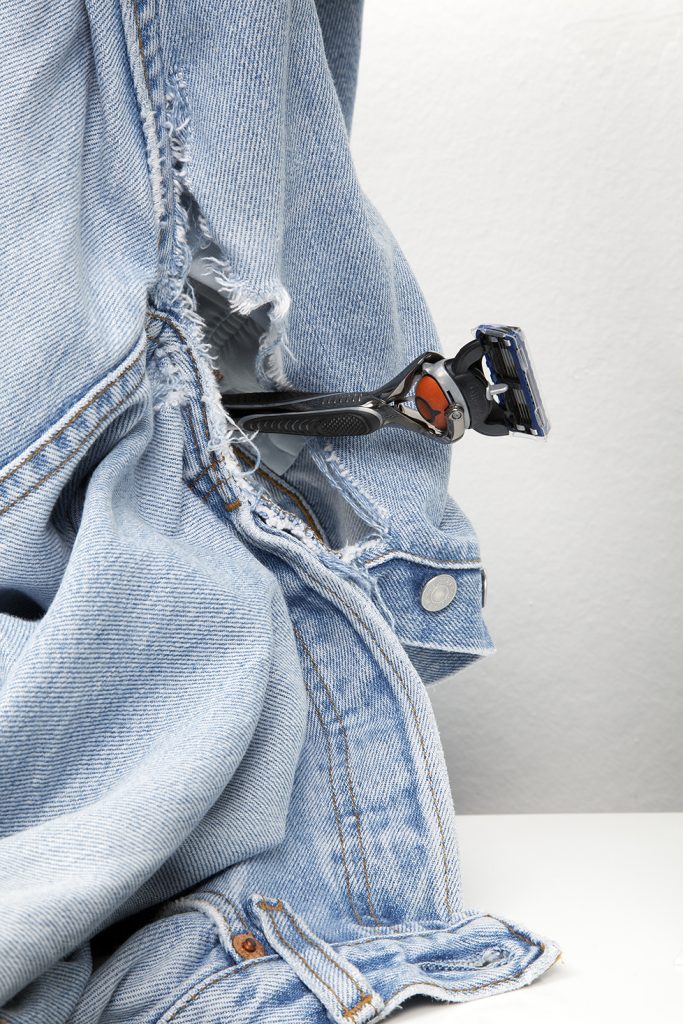






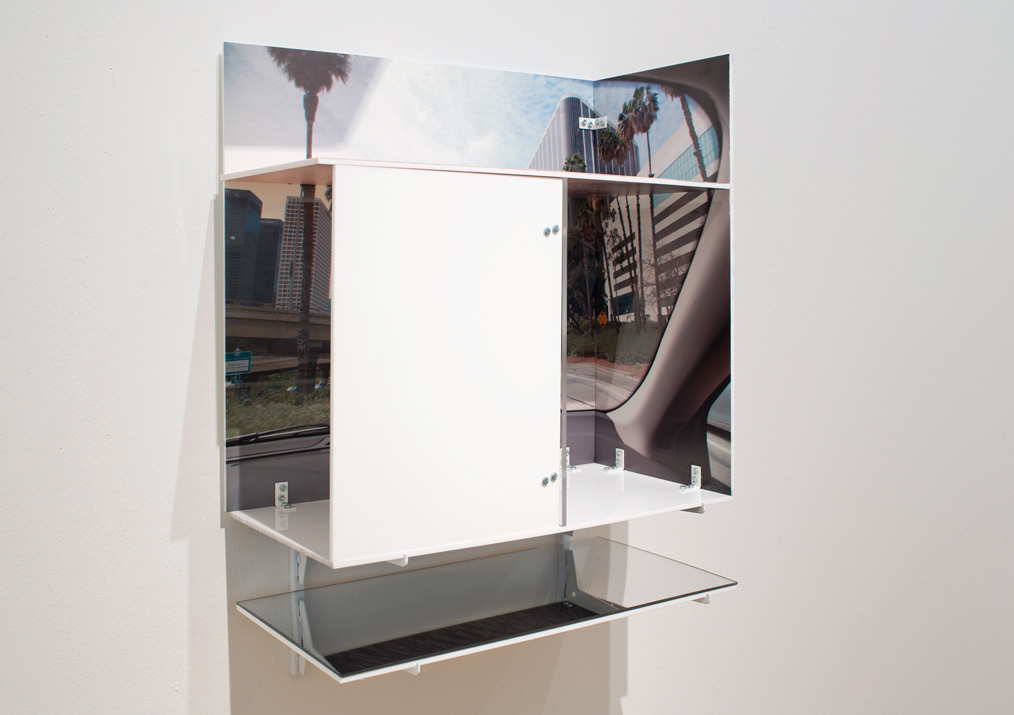

Title: GILLETTE’S, IDEAL CITY PROPOSAL
Artist: Anne de Vries
Year: 2014
Dimensions: Various
Materials: Double-sided UV prints on Photo Forex, PVC, mirror, coated metal hanging system, screws, Gillette razors, clothing.
Conceptual Background:
This body of work draws inspiration from The Dream of King Camp Gillette and his radical proposal for a future urban society. Before becoming known for inventing the safety razor and establishing a major industrial enterprise, King Camp Gillette (1855–1932) authored several books and pamphlets outlining his vision for a transformed economic and social system.
In his first major tract, The Human Drift, Gillette proposed the creation of a single, highly organized, technologically advanced megacity called “Metropolis.” Designed to house the entire population—excluding agricultural and rural labor—this urban complex would be constructed using cutting-edge materials and systems. Gillette envisioned this society as being administered by “The United Company,” a unified organization responsible for producing, manufacturing, and distributing all necessities of life.
Although often grouped with utopian literature such as Edward Bellamy’s Looking Backward, Gillette’s proposal reads not just as speculative fiction, but as a sincere (if eccentric) urban and social engineering plan. As both an inventor and idealist, Gillette’s “Metropolis” functions as a kind of verbal prototype—an industrial-era working model of a unified and optimized future city.
Artistic Approach:
Through precision photographs of Gillette’s shaving products, used as the basis for sculptural forms and visual layering, this work explores the intersections of utopian architecture and the refined industrial design of Gillette’s iconic shaving systems.


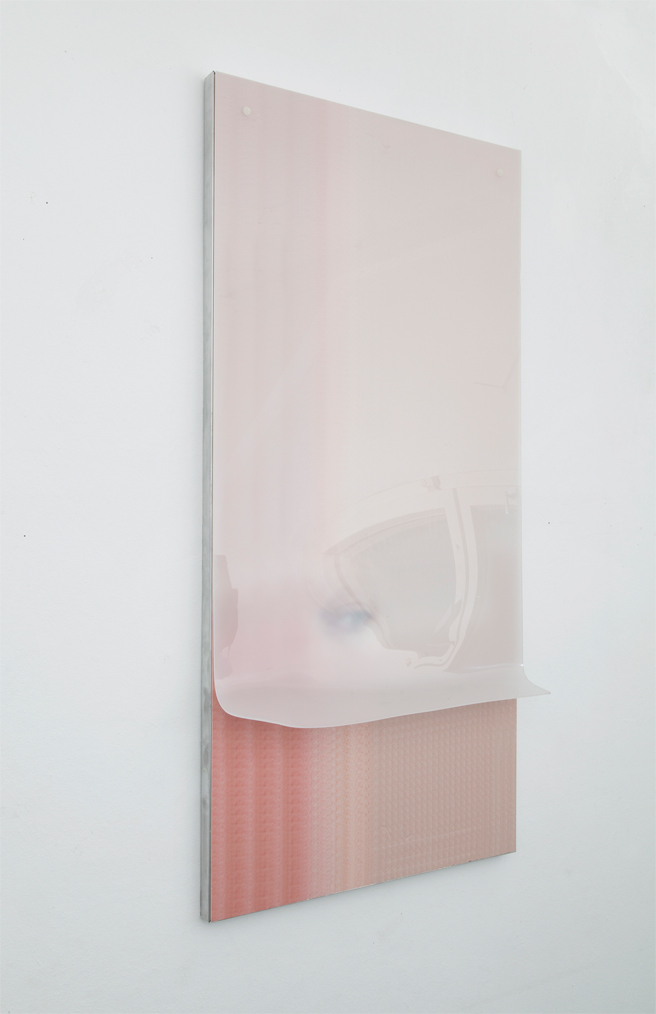

Title: Around the Eye
Artist: Anne de Vries
Year: 2013
Materials: Digital print on extruded polystyrene (XPS), plexiglass, aluminum frame


Title: Steps of Recursion on rail – ICG
Artist: Anne de Vries
Year: 2012
Dimensions: 135 × 110 × 75 cm
Materials: Steel frame, UV print, plastic
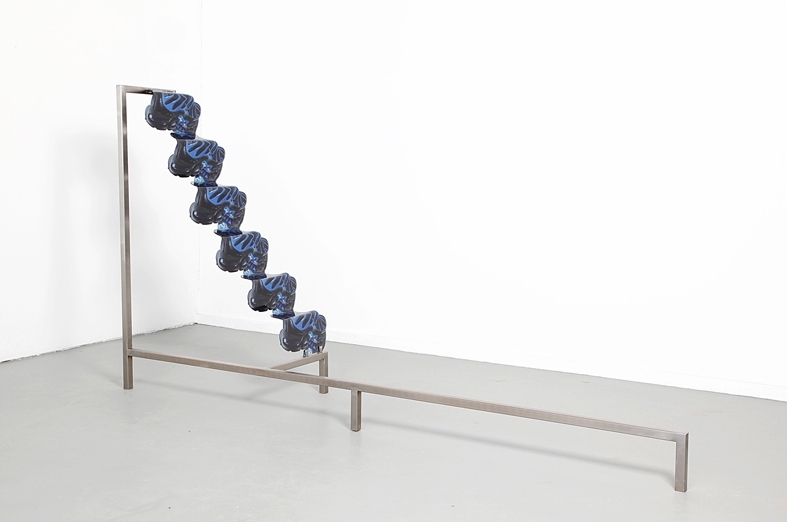


Title: Steps of Recursion – Tuned
Artist: Anne de Vries
Year: 2012
Dimensions: 220 × 150 × 65 cm
Materials: Stainless steel construction with photographic prints on plastic
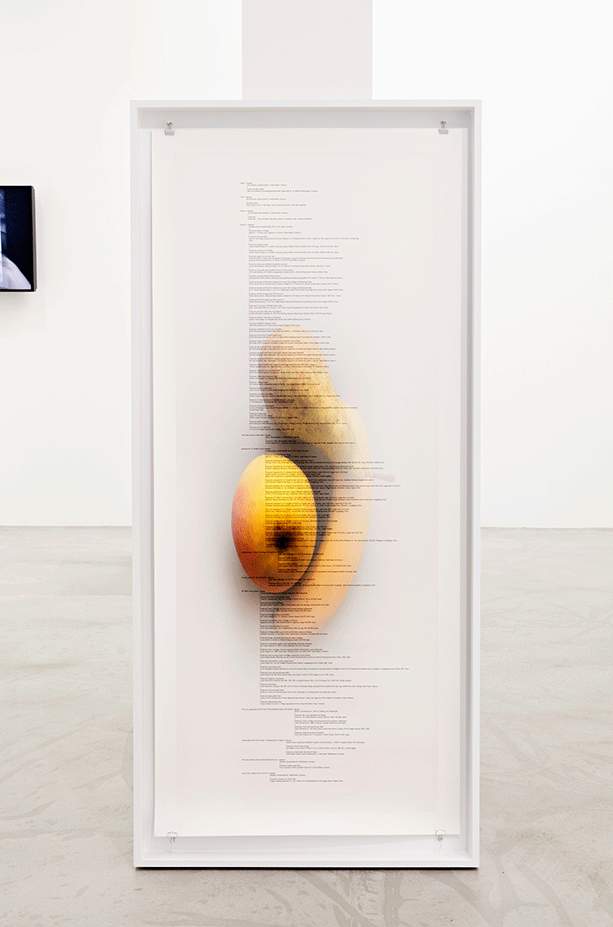






Title:
Image Transfers – Apple, Pear and Banana
Image Transfers – Apple, Avocado and Lemon
Artist: Anne de Vries
Year: 2012
Dimensions: 160 × 70 cm
Materials: Digital print on photo paper
About:
These two digital prints deconstruct their own production process. Beginning as still-life photographs of supermarket fruit, the image journeys through the digital pipeline—lens, sensor, wiring, computer components, software—until it materializes as ink on paper, hung on the wall with hooks and clips.
The deceptively simple arrangement is layered with an informational panorama that reveals the production chain’s circumstances and locations, positioning the fruit as the final eventuation of this global process. Superimposed in small type over the still-life are inscriptions including the retailer’s name and address and the primary production companies involved, tracing the artwork’s roots in today’s global economy.
Exhibition History:
Winterthur Museum in Winterthur; Frans Hals Museum in Haarlem; Foam Museum in Amsterdam; Sandy Brown in Berlin; Nest Museum, Den Haag; Martin van Zomeren, Amsterdam



Titles:
Image Transfer: Jalapeños, Rucola, Peanuts
Image Transfer: Jalapeños, Peanuts, Champignons
Image Transfer: Rucola, Jalapeños, Peanuts
Artist: Anne de Vries
Year: 2019
Dimensions: 160 × 70 cm (each)
About:
These digital prints deconstruct their own production process. Beginning as still-life photographs of supermarket produce captured by a digital camera, the image travels through the entire digital pipeline—lens, sensor, wiring, computer components, software—until it materializes as ink on paper, hung on the wall with hooks and clips.
The deceptively simple arrangement is layered with an informational panorama that reveals the circumstances and locations of the production chain, positioning the produce as the final eventuation of this global process. Superimposed in small type over the still-life are inscriptions including the retailer’s name and address and the primary production companies involved, tracing the dynamic roots of the artwork’s production in today’s global economy.


Title: CAVE2CAVE2CAVE
Artist: Anne de Vries
Year: 2019
Dimensions: Overall width 700 cm, comprising 150 × 100 × 3.5 cm stretchers
Materials: UV-RGB-W print on mirror-coated PVC; aluminum P35 stretchers with aluminum artist frames

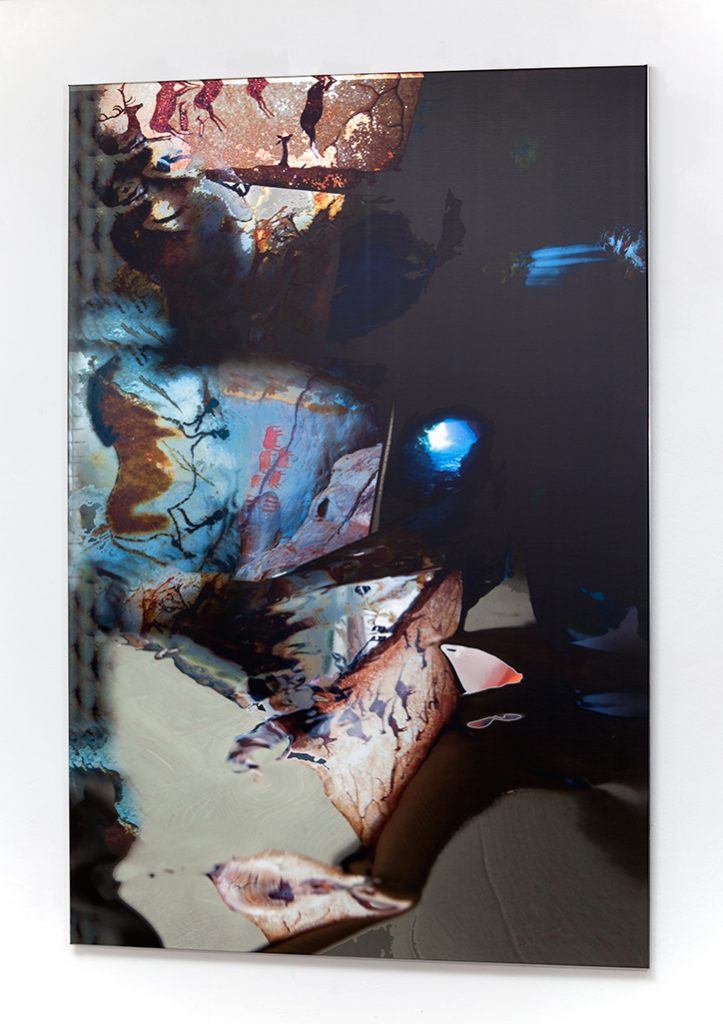




Titles:
CAVE2CAVE_1379, CAVE2CAVE_0671, CAVE2CAVE_0807,
CAVE2CAVE_9850, CAVE2CAVE_1339, CAVE2CAVE_0613
Artist: Anne de Vries
Year: 2019
Dimensions: 150 × 100 × 3.5 cm (each)
Materials: UV-RGB-W print on mirror-coated PVC, mounted on aluminum P35 stretchers, housed within aluminum artist frames
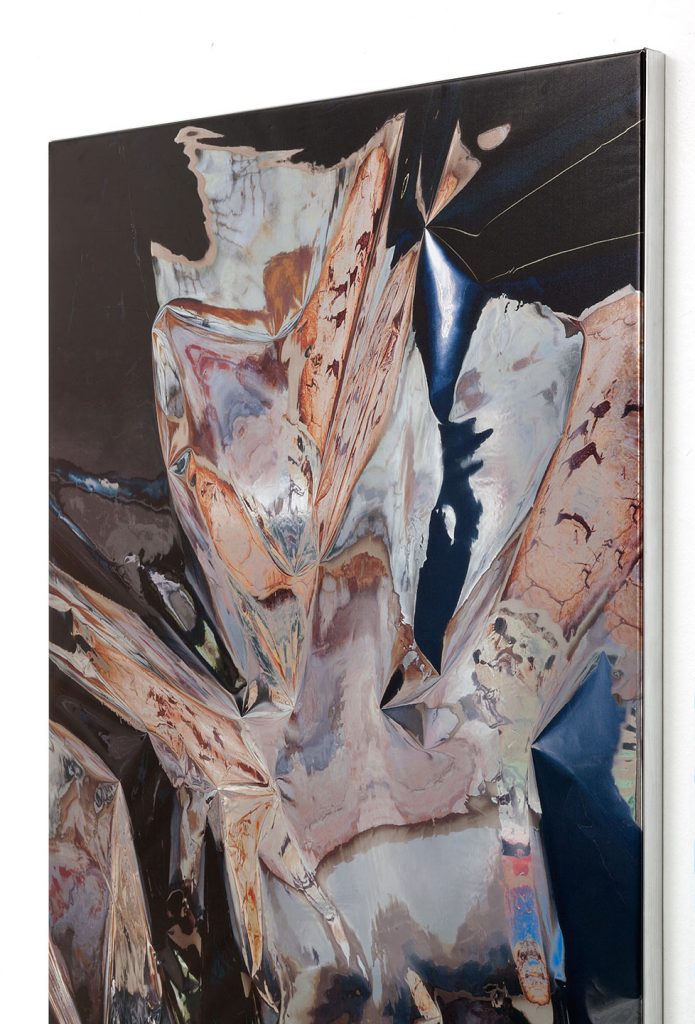




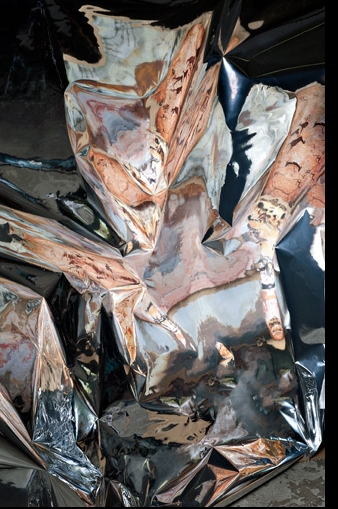

Title: CAVE2CAVE
Artist: Anne de Vries
Year: 2011–2019
Dimensions: 130 × 100 cm (51.18 × 39.37 in)
Materials: UV print on mirror foil, aluminum frame
About:
This work features photographs of wrinkled reflections of cave paintings, UV-printed onto mirror foil stretched over a frame. The reflective surface creates a dynamic interaction between image and environment, emphasizing the interplay of history and contemporary technology.

Two artworks, Interface – Easy Jet and Interface Mushashi, were installed in the exhibition RUIS, curated by Melanie Bühler and acquired by the Frans Hals Museum, Haarlem.


Title: Interface – Downstairs
Artist: Anne de Vries
Year: 2014
Dimensions: 164 × 124 cm
Materials: Two digital prints on Photo Forex sheets with CNC cut-outs; painted wooden frame
Exhibition:
Exhibition views from Folklore Contemporain II featuring sculptures by Sebastien …
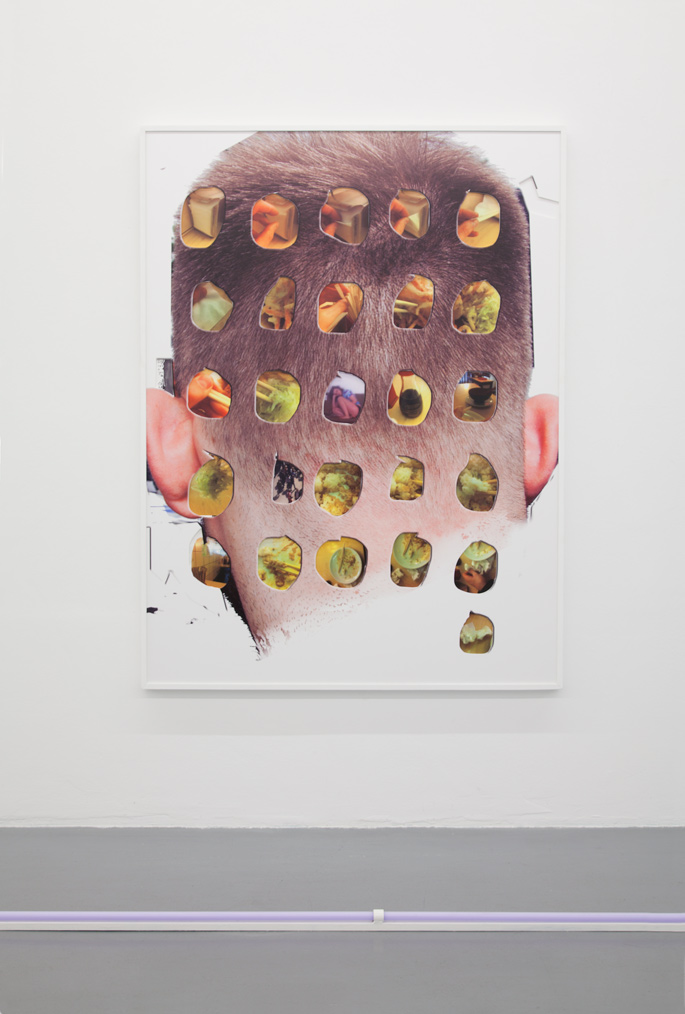

Title: Interface – Musashi
Artist: Anne de Vries
Year: 2014
Dimensions: 164 × 124 cm
Materials: Two digital prints on Photo Forex sheets with CNC cut-outs; painted wooden frame.



Title: Interface – Il Casolare
Artist: Anne de Vries
Year: 2014
Dimensions: 164 × 124 cm
Materials: Two digital prints on Photo Forex sheets with CNC cut-outs; painted wooden frame.

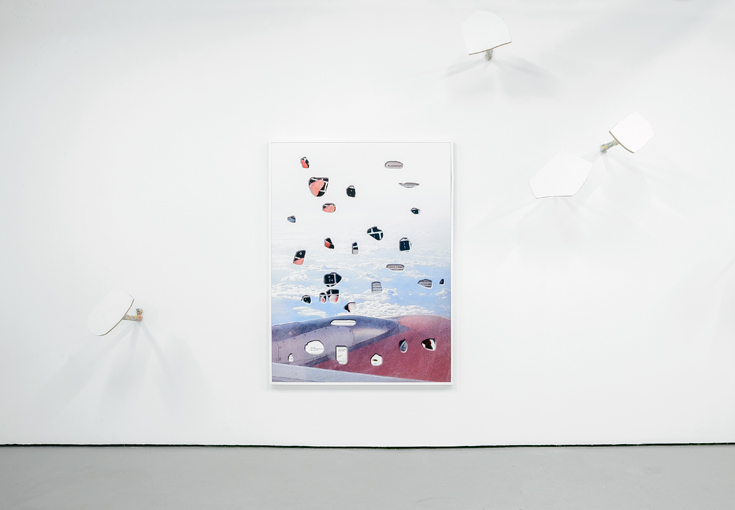
Title: Interface – Easy Jet
Artist: Anne de Vries
Year: 2014
Dimensions: 164 × 124 cm
Materials: Two digital prints on Photo Forex sheets with CNC cut-outs; painted wooden frame


Title: Mind Management
Artist: Anne de Vries
Year: 2013
Dimensions: 200 × 65 × 175 cm
Materials: Stainless steel, digital monochrome print on milled plexiglass.

Title: Places to See
Artist: Anne de Vries
Year: 2013
Dimensions: 260 × 65 × 160 cm
Materials: Stainless steel, digital monochrome print on milled plexiglass
Edition: Unique
Copyright: Anne de Vries
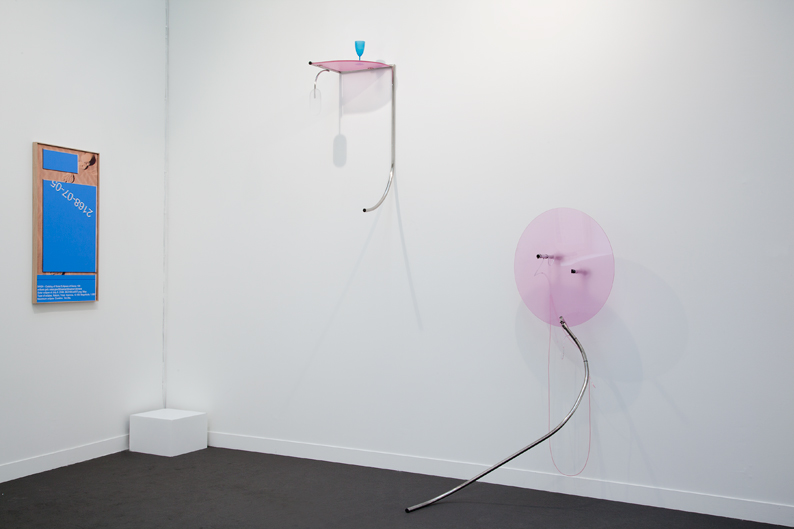
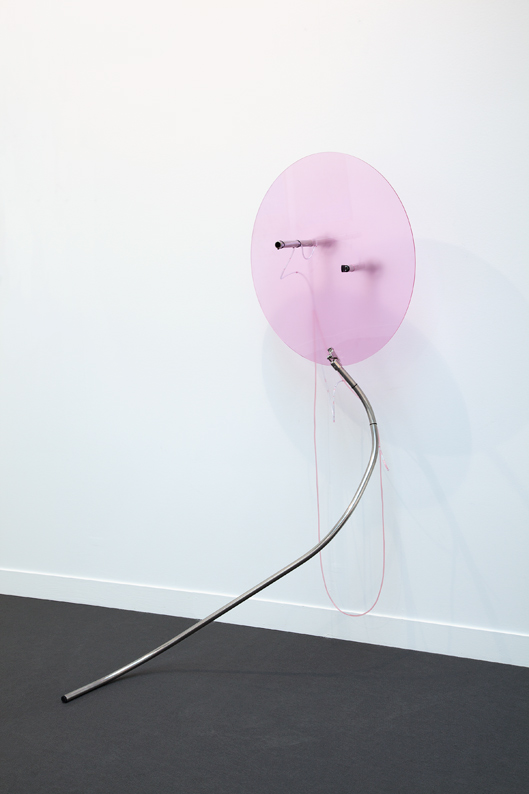
Title: Viewfinder
Artist: Anne de Vries
Year: 2013
Dimensions: 45 × 65 × 175 cm
Materials: Stainless steel, digital monochrome print on plexiglass, key, medical rubber tubes, colored solution.







Title: At the Shores
Artist: Anne de Vries
Year: 2013
Dimensions: 65 × 160 cm
Materials: Digital prints, framed
About:
While many of the computer-generated events assigned to these random dates will probably not take place, some computer-generated speculations—such as those made by NASA and the scientific community at large—may indeed occur.









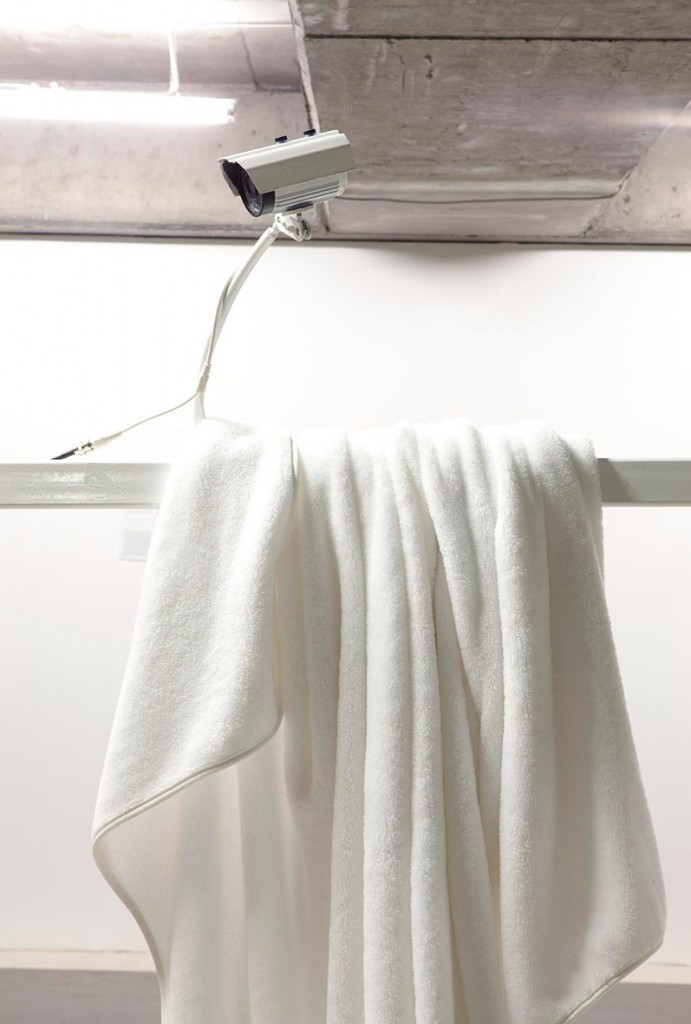
Title: Nightwatch at the Parking Lot
Artist: Anne de Vries
Year: 2014
Dimensions: Variable large-scale installation
Materials: Metal eyeglasses, walls, furniture, surveillance camera systems, LCD screens, fabrics, and other props.
Documentation: From The Moving Museum at Shishane Autopark in Istanbul
Title: Forecast
Artist: Anne de Vries
Year: 2011
Material: HD video projection
Dimensions: 300 × 135 cm projection screen
Length: 5-minute loop
Sound: James Whipple (aka M.E.S.H.)
Text: Excerpts from Bertrand Russell’s A.B.C. of Relativity — Philosophical consequences
About:
Forecast is a computer-generated video featuring a camera panning through photographs of a blue sky with clouds over Amsterdam. A slow voice guides the viewer through specific segments of Bertrand Russell’s ABC of Relativity, explaining the distinctions between actuality and perception, and addressing relativity theory and concepts of space-time. Midway, the spoken text transitions into music, leading the viewer into a more associative, immersive experience.
Documentation: Views from Kunsthal Charlottenborg in Denmark, Max Mayer Gallery in Dusseldorf, and E_MERGE at Foam Museum.
Watch the preview version of FORECAST here


Title: Whole World Overview
Artist: Anne de Vries
Year: 2011
Dimensions: 220 cm (diameter)
Materials and Techniques: UV print on Dibond and 4 mm Plexiglass
About:
This artwork was created by Anne de Vries in collaboration with NASA’s Whole World satellite photography. The imagery is stretched into a circular format (from North Pole to South Pole), evoking ancient Sun Crosses and Sun Wheels.
Documentation by: Future Gallery Berlin





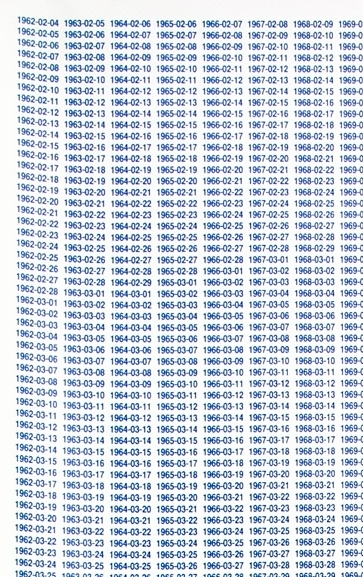


documentation foto by GJ van Rooij
Title: All Days of Aquarius
Artist: Anne de Vries
Year: 2011
Dimensions: 188 cm × 42 meters (74.02 × 1653.54 inches)
Material: Solvent print on vinyl
About:
This calendar presents every single day of a 2150-year time period, beginning on February 4, 1962, and continuing through the year 4114. With a total length of 42 meters, it can be displayed in various ways—rolled, or unrolled to fit the exhibition space.
Documentation views from:
TruEye SurView at W139 in Amsterdam, ‘Superficial Hygiene‘ at Frans Hals Museum in Haarlem, Max Mayer Gallery in Dusseldorf, and E_MERGE at Foam Museum